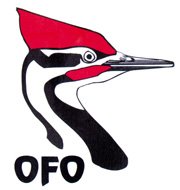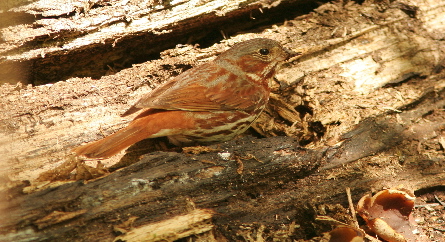| Algonquin Provincial Park | Barrie | Bruce Peninsula |
| Carden Alvar | Manitoulin Island | Minesing Swamp |
| Tiny Marsh |
Georgian Bay Area
Algonquin Provincial ParkTop
August 28 2022 (Sunday) Algonquin Park
Leader: Sarah Lamond.
On Sunday, August 28th six participants visited Algonquin Provincial Park for a day of birding. Areas birded included the Mizzy Lake railbed, Spruce Bog Trail and the Logging Museum Trail. We were fortunate to have some nice mild weather and ended the day with a total of 31 species. Highlights included great looks at a low flying Pileated Woodpecker over our heads, and multiple migrant flocks with some close views of Bay-breasted Warblers, a Chestnut-sided Warbler, a Scarlet Tanager, Red-eyed Vireos and a Blue-headed Vireo, a lifer for over half of the group! Overall a lovely day with many other non-bird wildlife highlights as well. Sarah Lamond
April 10 2022 (Sunday) Algonquin Park
Leader: Ron Tozer, Dawn Sherman.
April 10 2022 (Sunday) Algonquin Park Leader: Ron Tozer, Dawn Sherman On April 10, about 40 participants took part in the 29th OFO spring trip in Algonquin Park, the first of which was back in 1990. Despite cool temperatures (minus 2 to plus 2 degrees C) and gusty NW wind in the afternoon, this enthusiastic group enjoyed a day of early spring birding. Locations visited included the Visitor Centre, Opeongo Road, Spruce Bog Boardwalk, the Old Airfield, Two Rivers Campground, and Park Lake. All ponds and lakes were ice-covered but open water was present in rivers and creeks, plus small areas of some lakes where water flowed in. By the end of the day (9 am to 5 pm) we had located 35 species, a reasonable total for the date in an average to late spring so far. These included: four finch species still lingering at the Visitor Centre (Evening Grosbeak, Purple Finch, Pine Siskin and American Goldfinch); a male Merlin that put on a vocal and flight performance in Two Rivers Campground; a pair of Canada Jays that retrieved and stored food from the hand on Opeongo Road, to the delight of many; and two Snow Buntings at the Opeongo Access Point parking lot that provided relatively close opportunities for several eager photographers in the group. Despite our persistent efforts to locate a Spruce Grouse along the black spruce section of Opeongo Road and at Spruce Bog Boardwalk, we were unable to do so. A male was photographed at Spruce Bog on Saturday but eluded us on Sunday, typical of this often ?now you see it, now you don?t? species. It was only the fourth time in the 29 years of the Algonquin trip that Spruce Grouse has been missed. We also had no success with seeing Black-backed Woodpecker. The Algonquin OFO trip has observed this species in 16 of 29 years, so perhaps surprisingly it has proven considerably more difficult to find than Spruce Grouse. Dawn Sherman and I enjoyed leading the group and thank the participants for their eagerness, patience, and interest in learning more about the habits of Algonquin?s birds. We hope that you will return in 2023 for the 30th OFO Algonquin Park spring trip! Ron Tozer
April 20 2019 (Saturday) Algonquin Provincial Park
Leader: Ron Tozer.
The combined total list for the day was a very respectable 51 species recorded by about 30 participants and four leaders. Unfortunately, the heavy rainfall and melting of snow and ice during the two days preceding this trip had a major impact on where we were able to search for the target species. However, Saturday's weather was actually better than the forecast, with no rain until late afternoon. That was a real bonus. The return section of the Bat Lake Trail between Highway 60 and Bat Lake was our main planned location for all four boreal residents, but the trail was inaccessible for the group due to flooding of the creek and ice on the short boardwalk over it. We did find a single Canada Jay on Opeongo Road later, but no Spruce Grouse, Black-backed Woodpecker or Boreal Chickadee this year. Five finch species were tallied, including a late Pine Grosbeak, a White-winged Crossbill and several Common Redpolls. The Visitor Centre produced good views of Chipping Sparrow, Fox Sparrow and Rusty Blackbird. Many photos were taken of a beaver lodge that was largely submerged by flood waters of Costello Creek along Opeongo Road. A female Canada Goose had built a nest on top of the lodge and was incubating eggs. Just inches away from her on top of the lodge was a family of five beavers (two adults and three young) that obviously had been flooded out of the lodge. The beavers appeared to be sleeping and the goose ignored their presence. I would like to thank everybody that attended this 30th annual Algonquin Park trip for your assistance and understanding when target birds are hard to find and the conditions are challenging. The logistical and bird-finding contributions of Kevin Clute, Dawn Sherman and Laura Tozer were much appreciated.
April 21 2018 (Saturday) Algonquin Provincial Park
Leader: Ron Tozer.
About 40 OFO members and friends enjoyed a beautiful sunny day of early spring birding in Algonquin Park yesterday. The temperature reached 14 degrees by late afternoon, warmth not experienced here since late October. The final species count was low at 38, but good for this spring. Only one species (Northern Harrier) was a first-of-spring sighting for the Park, reflecting migration that is at least two weeks later than normal and largely stalled. But that should change soon. A male Spruce Grouse a little north of the register box, and two Gray Jays near the kettle bog were highlights at Spruce Bog Boardwalk. A Black-backed Woodpecker photographed on a utility pole at km 53 on Highway 60 soon before we arrived (the first time!) could not be found again after two visits unfortunately. A few raptors were moving including a kettle of three Bald Eagles and several Red-tailed Hawks. Merlin was distantly heard at Spruce Bog Boardwalk and the East Gate but not seen. There were great views of finches from the Visitor Centre viewing deck including Evening Grosbeak, Purple Finch, Red Crossbill, White-winged Crossbill, Pine Siskin and American Goldfinch. Thanks to the participants for a wonderful day. The assistance of Sharon Hockley, Justin Peter, Dawn Sherman, Kelly Stronks and Rick Stronks with logistics and finding birds was really appreciated by everyone.
April 9 2017 (Sunday) Algonquin Provincial Park
Leader: Ron Tozer.
About 40 OFO members and friends enjoyed great early spring birding in Algonquin Park today. The temperature reached a balmy 16 degrees by late afternoon. The final species count reached 50, a good total for this date. Eight of them were first-of-spring sightings for the Park. All the species recorded on the trip can be seen on eBird, thanks to Kelly and Rick Stronks. Gray Jays were observed at Spruce Bog Boardwalk and on Opeongo Road. Many of the group got to see a Black-backed Woodpecker attracted by Barred Owl imitations near the kettle bog on Spruce Bog Boardwalk. Unfortunately, the persistence of deep snow and an additional 30 cm added late last week combined to severely limit the areas we could search for Spruce Grouse, and we failed to see one. It was a good day for raptors, including a Bald Eagle, a Northern Harrier, four Sharp-shinned Hawks, about 20 migrating Red-tailed Hawks and a couple of Merlins. Bird seed on the ground at the Visitor Centre attracted Fox Sparrow (3), Purple Finch (3), Common Redpoll (1), many Pine Siskins, American Goldfinches and Evening Grosbeaks, and the rarest bird seen on today's trip, a female House Sparrow. Thanks to the participants for a wonderful day. The assistance of Stacey Finch, Lev Frid, Amanda Guercio, Justin Peter, Dawn Sherman, Kelly Stronks and Rick Stronks with logistics and finding birds was really appreciated by everyone.
April 16 2016 (Saturday) Algonquin Provincial Park
Leader: Ron Tozer.
About 85 people enjoyed a magnificent sunny early spring day in Algonquin Park on Saturday. The 18 degrees reached in the afternoon must surely be the highest temperature in the 27 years of this OFO trip. Although the extensive snow on the ground in shaded areas restricted our movements, we had a great day of birding. The two male Spruce Grouse and the Gray Jays feeding from the hand, both north of the gate on Opeongo Road, were a highlight for many. Two Black-backed Woodpeckers were seen by a few lucky latecomers on Opeongo Road, but the main group was unfortunately farther north at the time. Several first-of-spring in Algonquin species were seen: Green-winged Teal, Ring-necked Duck, Double-crested Cormorant, Northern Harrier, Wilson's Snipe, Eastern Phoebe, Tree Swallow, Ruby-crowned Kinglet, Yellow-rumped Warbler, Chipping Sparrow and White-throated Sparrow. At the official final stop at Tea Lake Dam, there were 51 species on the day's list. A check of the West Gate (Yellow-rumped Warbler) and Park Lake (Wood Duck, Common Goldeneye, Common Loon, Belted Kingfisher, European Starling) after that brought the final tally to 57 species. All the species observed on the trip can be seen on eBird. Thanks to all the trip participants for helping make the day so enjoyable. It was particularly pleasing to see so many young birders. I want to thank Justin Peter, Dawn Sherman and Rick Stronks for their help with the logistics for our 35-vehicle procession and for their efforts in finding birds and helping participants to see them.
April 12 2014 (Saturday) Algonquin Provincial Park
Leader: Ron Tozer.
About 80 participants enjoyed a beautiful spring day in Algonquin Park today, with the entire group encountering a total of 52 species. Our main goal was to see the boreal species plus as many other birds as we could find. Widespread knee-deep snow limited where we could go but we lucked out in the accessible places available.
A displaying male Spruce Grouse near an "indifferent" female north of the register box on Spruce Bog Boardwalk was a life species for a number of people and a highlight for everyone.
A male and a female Black-backed Woodpecker were observed excavating a nest cavity in the first telephone pole west of Spruce Bog Boardwalk.
Vocalizing Boreal Chickadees were noted in the black spruce section of Opeongo Road, on Spruce Bog Boardwalk, and along Highway 60 just west of Spruce Bog Boardwalk.
Gray Jays were seen near the northern bridge over Costello Creek and farther north in the black spruce section of Opeongo Road.
First sightings for this spring in Algonquin Park included:
- Wood Duck: five at the Little Madawaska
- Red-breasted Merganser: male at Smoke Creek with Common Mergansers
- Merlin: male at Harkness Lab on Opeongo Lake
- Belted Kingfisher: female along Costello Creek
- Bohemian Waxwing: four perched in a dead tree a little east of the West Gat
- American Tree Sparrow: Opeongo Road
As usual, it was great fun to spend the day birding with such an enthusiastic group. I would like to thank everyone who helped find and identify birds today, and in particular Kevin Clute and Justin Peter for their assistance on the trip.
April 20 2013 (Saturday) Algonquin Provincial Park
Leader: Ron Tozer.
An enthusiastic group of about 45 birders braved sub-freezing temperatures, strong winds, frequent heavy snow squalls, and snow/ice-covered trails to observe 54 species of birds today throughout the Highway 60 Corridor. Record high flood levels that resulted in the breaching of Opeongo Road at Costello Picnic Grounds meant that we could not go to that traditional hotspot, but alternative locations produced some interesting birds.
A Boreal Chickadee taking seeds from the hand at Spruce Bog Boardwalk thrilled everyone. Our second visit to Spruce Bog finally turned up a male Spruce Grouse feeding high in a spruce. Despite extensive efforts, however, we could not locate a Gray Jay or a Black-backed Woodpecker.
Other highlights included: the first Broad-winged Hawk at km 53; a Great Gray Owl in the bog on the north side of the highway just east of Track and Tower Trail; a Bohemian Waxwing flying over Lake of Two Rivers Campground; a female Northern Cardinal feeding on bird seed near the register box at Spruce Bog Boardwalk; and a female "Oregon" Junco and a female Hoary Redpoll at the Visitor Centre feeders.
A few keen birders lingering after the late afternoon official end of the trip observed a Bald Eagle chasing a Great Blue Heron near km 24, and the first Barn Swallow and a flock of six Pine Warblers at the Old Airfield.
Special thanks to Kevin Clute, Justin Peter, Ian Shanahan and Dawn Sherman for their bird-searching help. It was a fun day.
April 21 2012 (Saturday) April 21 (Saturday) Algonquin Provincial Park
Leader: Ron Tozer.
Over 55 enthusiastic birders enjoyed cool breezes and periodic light snow squalls today while recording 58 species along the Highway 60 Corridor of the Park.
We had good looks at a male Spruce Grouse doing flutter flights, a Gray Jay and two Boreal Chickadees along Opeongo Road. Some reported hearing a Black-backed Woodpecker there as well.
Two Sandhill Cranes flew over as we watched the Evening Grosbeaks at the Visitor Centre feeder. Two or more Pine Warblers were seen and heard in Lake of Two Rivers Campground. Two Rusty Blackbirds were noted at km 8.
I want to thank my co-leader, Justin Peter, for his great help finding birds today. Thanks also to all the participants who once again made this a fun day in Algonquin Park.
April 17 2011 (Sunday) Algonquin Provincial Park
Leader: Ron Tozer.
An enthusiastic group of about 60 keen birders persevered in the snow squalls, occasional sunny breaks and frequently windy conditions today in pursuit of Algonquin’s boreal species. Unfortunately, we came up a little short. We were unable to locate a Spruce Grouse, I believe for the first time in the 22 years of this trip. I suspect the wind distorted our playback efforts and the winter conditions may have discouraged a response. Our only success with the boreal target species was Gray Jay.
Some first arrivals here this spring were noted, including a Broad‐winged Hawk, a Wilson's Snipe and two Hermit Thrushes. A Bohemian Waxwing in flight at the Visitor Centre and a Vesper Sparrow along the grassy margin of Opeongo Road were much appreciated. The Vesper Sparrow was originally found and photographed yesterday.
I want to thank all who attended the trip and made a difficult day so much fun. I am particularly grateful to my co‐leader Kevin Clute who worked tirelessly slogging through often deep snow and ice water trying to find a Spruce Grouse at five locations, to no avail. Maybe next year.
April 18 2010 (Sunday) Algonquin Provincial Park
Leader: Ron Tozer.
The 21st annual OFO Algonquin Park trip today had spectacular sunny conditions throughout. About 45 people in 21 vehicles explored the Highway 60 Corridor from 9 am to 6:30 pm., observing 57 species of birds.
All the northern species we sought were found:
Spruce Grouse: male and female at Spruce Bog Boardwalk, north from trail register box.
Black‐backed Woodpecker: Male excavating nest cavity in third utility pole west of road into Leaf Lake Ski Trail parking lot at km 53.9.
Gray Jay: single along Highway 60 between Lookout Trail and Eucalia Lake; pair near chain gate along old railway east of Arowhon Road; pair along old railway at West Rose Lake.
Boreal Chickadee: At least three vocalizing birds allowing brief but good views along old railway near West Rose Lake.
Other highlights included:
American Bittern: first of the spring, at Cache Lake marsh.
Osprey: one over Tea Lake Dam road.
Merlin: pair at Harkness Fish Lab on Lake Opeongo
Blue‐headed Vireo: singing male across from Cache Lake Marsh. This was a new early date for Algonquin; previous earliest was April 20.
Pine Warbler: two singing males near site 22 in Lake of Two Rivers Campground. (No Yellow‐rumped Warblers were observed today.)
We would like to thank everyone who came on today’s trip. We walked a long way, but it was a fun day.
25 April 2009 Algonquin Provincial Park
Leader: Ron Tozer.
About 75 people in 31 cars participated in a successful Algonquin Park birding trip today, the 20th year for this OFO outing. Occasional rain did not significantly hinder our efforts. The combined observer list totaled 67 species.
Highlights for many were the male and female Spruce Grouse north of the register box on Spruce Bog Boardwalk, the two Boreal Chickadees that Maris Apse spotted for us at Spruce Bog Boardwalk parking lot and which provided excellent views, and the male Black-backed Woodpecker excavating a nest cavity in the second utility pole west of Leaf Lake Ski Trail (km 53.8).
A record was set when Gray Jay was not seen all day, for the first time in the 20 years of these outings. Unfortunately, the decline of the Gray Jay in Algonquin Park due to climate warming has now reached the point where it is quite easy to miss this species in late April, when the birds are focused on feeding young in the nest.
Other noteworthy sightings included:
- American Wigeon: pair on Lake of Two Rivers after heavy rain
- Blue-winged Teal: pair on Costello Creek
- Green-winged Teal: pair on Sunday Creek at Spruce Bog Boardwalk
- Red-necked Grebe: one on Lake of Two Rivers after heavy rain
- Merlin: pair at a nest in white pine at east end of West Gate parking lot
- Eastern Towhee: singing male along Tea Lake Dam road
I would like to thank all the participants today, and especially Kevin Clute who assisted ably with finding the birds.
26 April 2008 Algonquin Provincial Park
Leader: Ron Tozer.
The 19th annual OFO outing to Algonquin Park was enjoyed by 37 participants, with good weather in the morning and some showers in the afternoon. The group located 60 species and had a great day of birding.
A pair of Gray Jays on Opeongo Road north of the Costello Creek culvert took food from many eager hands. A male Spruce Grouse near the register box on Spruce Bog Boardwalk allowed great views. Our best Spruce Grouse viewing came later in the black spruce bog bordering the north end of Opeongo Road as two calling females and three displaying males put on a spectacular show.
Species seen today for the first time in Algonquin this spring included: American Pipit (seen over the Visitor Centre parking lot before we arrived), Palm Warbler, Black‐and‐white Warbler, and Field Sparrow.
Thanks to everyone who attended today, and especially to Kevin Clute for his assistance.
Reported by Ron Tozer.
21 April 2007 Algonquin Provincial Park
Leader: Ron Tozer.
Forty‐one OFO members and friends enjoyed a wonderful, warm birding trip in Algonquin Park today. As with previous OFO trips here, our primary goal was to find the boreal species that birders regularly seek in the Park. In the process, we were treated to a very pleasant day of birding, with 57 species being tallied by the group.
A male and female Spruce Grouse were observed well by everyone north of the register box on Spruce Bog Boardwalk. This was a lifer for several people. A female Black‐backed Woodpecker near Post 9 on that trail, and another of these often elusive woodpeckers on a utility pole at Cache Lake, were enjoyed by many members of the group, but missed by many others, unfortunately. Four or five Boreal Chickadees at the north end of Opeongo Road allowed fleeting views for most observers. As is often the case with this chickadee, they were often frustratingly well‐hidden in the black spruce trees. Gray Jays were fed on Opeongo Road, near their nest where large young will be fledging very soon. Common Ravens often flew over for identification comparison with American Crows. Despite extensive searching of areas where American Three‐toed Woodpeckers have been observed recently, we were unable to find one today; most of these boreal woodpeckers may have headed back north following the largest winter irruption on record in Algonquin Park.
First observations of this spring in Algonquin today included Osprey (two), Sharp‐shinned Hawk, Horned Lark (northern race), Vesper Sparrow, and Savannah Sparrow. A rather early Barn Swallow at the West Gate was seen there first on Friday. Interestingly, there still have been no Tree Swallow sightings in Algonquin this spring, likely reflecting the increasing scarcity of this aerial forager here, plus the extensive mortality among migrant Tree Swallows that has occurred during cold weather this month.
Thanks again to all those who attended. It was a magnificent day to be out birding.
Reported by Ron Tozer.
22 April 2006 Algonquin Provincial Park
An enthusiastic group of about 45 OFO members and friends birded Algonquin Park today in challenging weather (light rain and windy). The results were limited by the conditions, but interesting nonetheless.
We started at the West Gate, where a Field Sparrow was at the feeder. The year’s first Barn Swallow had appeared there briefly prior to the arrival of most participants.
Our first stop was Spruce Bog Boardwalk for Spruce Grouse where a male had been seen regularly all week. Despite playing a tape of a female’s calls, and 45 people spreading out to search through the sopping wet conifers, we could not find this target species. However, this spring’s first Greater Yellowlegs was noted on the pond along Sunday Creek, although few people got to see it.
The next location visited was Opeongo Road, where a calling female Spruce Grouse and a displaying male had been observed last week. Again, despite playing the tape, there was initially no response. Persistence paid off, however, as eventually a female Spruce Grouse did call back, on the ground under thick conifer cover near the road. Then it perched on a branch in full view in the open. Everybody got to see it and this was a life species for several participants.
On the way back down the Opeongo Road we got to see and feed Gray Jays, always a highlight of this trip. Lunch at the Visitor Centre got us out of the rain for the first time all morning, and birds at the feeder there included Purple Finch and Fox Sparrow.
Our last major stop involved driving up the Arowhon Road and walking along the railway bed to West Rose Lake. Birds were scarce there as well, but the scenery and long close views of a Moose were worth the walk even though the rain persisted.
Thanks to all who came and had fun despite the weather.
Reported by Ron Tozer.
23 April 2005 Algonquin Provincial Park
Leader: Ron Tozer.
Twenty-one enthusiastic OF members and friends enjoyed an early spring day in Algonquin Park. Luckily, we did not experience any significant rainfall until 3 p.m., allowing ample time to search for the northern birds that were our primary objective.
A male Spruce Grouse in the black spruce bog along Opeongo Road (km 46.3 on Highway 60) allowed close approach for all to see. It was a life bird for some. Gray Jays along Opeongo Road took food from people's hands. A few participants heard Boreal Chickadee along the old railway near Wolf Howl Pond (accessible from Arrowhon Road at km 15.4). Unfortunately, as has been the case for many birding in Algonquin recently, Black-backed Woodpecker eluded us. The Great Gray Owl observed near Wolf Howl Pond on April 22 had apparently moved on.
The Visitor Centre (km 43) feeders attracted several sparrow species, including Chipping, Savannah, Fox and White-throated (the latter two in song). Finch sightings for the day were limited to Purple Finch and the much-appreciated five Evening Grosbeaks at the Visitor Centre feeder.
Reported by Ron Tozer
19 April 2003 Algonquin Provincial Park
Leader: Ron Tozer.
A very rewarding early spring day in Algonquin Park was enjoyed on Saturday by 69 OFO members and friends. We started at the West Gate at 9 a.m., birded east to Opeongo Road, and still had five of the 39 cars when we finally stopped at 7 p.m. back at the West Boundary! About 50 bird species were observed. Noteworthy sightings included:
Broad-winged Hawk, two over Opeongo Road (first of spring); Rough-legged Hawk, one (light morph) over Visitor Centre; Spruce Grouse, one along Opeongo Road at gate, five south of Hwy. 60, opposite Spruce Bog Boardwalk; Black-backed Woodpecker, one Opeongo Road at gate, none at km 8 despite two long attempts to find the female that has been regular there; Gray Jay, four along Opeongo Road; Boreal Chickadee, several along Opeongo Road in black spruce section; Hermit Thrush, one near West Gate (first of spring); American Robin, one with nest material (Canoe Lake), just one day later than the earliest nest-building ever recorded in Algonquin; Savannah Sparrow, one on Airfield (first of spring); Eastern Meadowlark, one on Airfield (first of spring), even though average arrival is 7 April; White-winged Crossbill, numerous along Hwy. 60 and Opeongo Road; Evening Grosbeak, four on Opeongo Road; one or more at Visitor Centre.
Other interesting observations included this spring's first Painted Turtle (Costello Creek Marsh) and Garter Snake (Cache Lake). Directions: Algonquin Provincial Park is three hours north of Toronto, via Highways 400 and 11 to Huntsville, and then east on Highway 60. Get a tabloid at the gate when you purchase your permit (required if you are going to use trails, parking lots and roads off Highway 60, or go to the Visitor Centre). The tabloid has a map for locating sites mentioned above.
Reported by Ron Tozer
20 April 2002 Algonquin Provincial Park
Leader: Ron Tozer.
About 65 people attended Ontario Field Ornithologists' trip along the Highway 60 corridor of Algonquin Provincial Park, recording 57 species on a cool, sunny day that provided some great early spring birding. Our primary goal was to see Algonquin's "northern" birds (Spruce Grouse, Black-backed Woodpecker, Gray Jay, Common Raven and Boreal Chickadee), and this was done!
A male Spruce Grouse displayed, 200 m south of Highway 60, opposite Spruce Bog Boardwalk. Two Gray Jays were given copious amounts of food by grateful birders at the locked gate on the Opeongo Road. A female Black-backed Woodpecker finally emerged at Km 8 on Highway 60, in response to Barred Owl imitations, and then remained visible for all to observe. A Boreal Chickadee at Km 8 was much more difficult to see, in typical fashion for this species, but several trip participants did hear and see it, briefly.
OFO birders arriving early for the trip established record early spring dates for two species yesterday (April 19) in Algonquin: Northern Shoveler (two males on Costello Lake on the Opeongo Road) and Northern Mockingbird (at the Old Airfield). Neither species was still present today, unfortunately.
The all-time records for earliest spring arrival in Algonquin Park continued to fall today, as OFO birders observed a Blue-Headed Vireo at the West Gate, and a very cooperative Virginia Rail at Long Lake near the West Boundary, which came into plain view in response to a taped call.
Other noteworthy sightings in Algonquin included an early Greater Yellowlegs at Opeongo Access Point and a Barn Swallow at the West Gate.
Algonquin Park is located on Highway 60, east of Huntsville. From Toronto, follow Highways 400 and 11 north to Huntsville. All park facilities are currently closed (gate buildings, visitor centre, campgrounds) during the OPSEU strike.
Reported by Ron Tozer.
28 April 2001 Algonquin
Led by Ron Tozer.
Over 75 people in 33 vehicles enjoyed a marvelous pre-blackfly, sunny (but cool) day of birding in Algonquin Park on Saturday (April 28), during the OFO field trip. Our target for the day was to see Algonquin's boreal birds, and this was accomplished with relative ease.
A male and female Black-backed Woodpecker were on a hydro pole for all to see at km 8, as expected. A bonus there were the two Boreal Chickadees that came right out in the open to sit briefly in a Red Maple for all to enjoy. This elusive species was later encountered south of Sprucebog trail (opposite side of the highway) and along Opeongo Road. Sprucebog trail has been unreliable for Spruce Grouse lately, so we went south of the highway there to a site where I had encountered them earlier. A male displayed for all to see at point blank range, in response to the recorded call of a female. As usual on these OFO trips, this was a life bird for several present. Gray Jays finally showed up along the Opeongo Road, near the Costello Creek culvert, and several participants fed them from the hand. The somewhat breezy conditions resulted in Common Ravens often flying overhead, doing barrel rolls and displaying their distinctive field marks.
Nesting Merlins at Harkness Fish Lab on Lake Opeongo, and at the new nest at the foot of the Visitor Centre drive, provided excellent opportunities to view this increasingly common species. We had good looks at Pine Siskins, Evening Grosbeaks, and White-winged Crossbills.
Algonquin Park is reached from Toronto by heading north on Highways 400 and 11, and then turning east at Huntsville on Highway 60. Locations in the Park can be determined from the map you can pick up at the gates when you buy your permit.
Reported by Ron Tozer
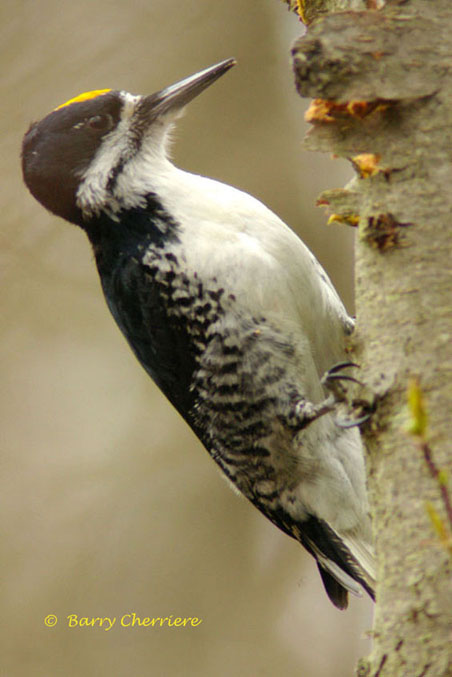
Black-backed Woodpecker
Photo: Barry Cherriere
.jpg)
Black-backed Woodpecker
Female
Photo: Sam Barone
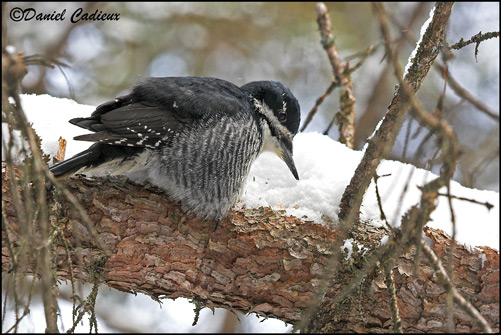
Black-backed Woodpecker
Female
Photo: Daniel Cadieux
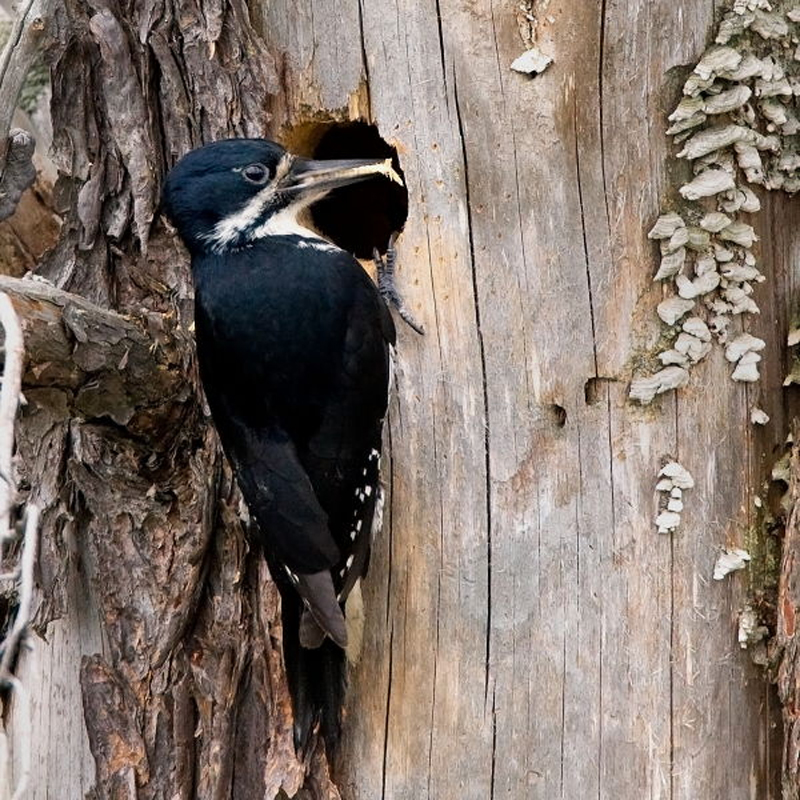
Black-backed Woodpecker
Female
Photo: Don Wigle
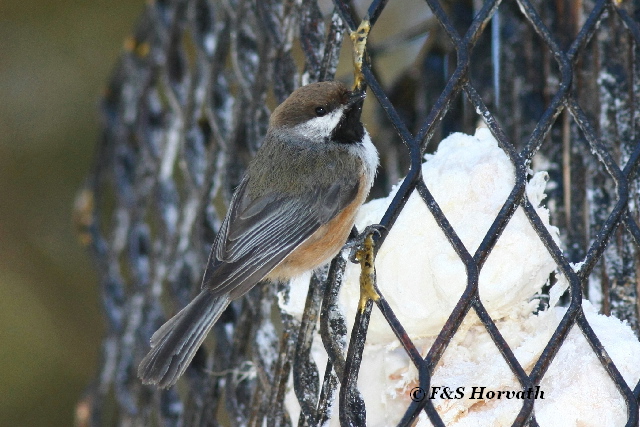
Boreal Chickadee
Photo: Frank and Sandra Horvath
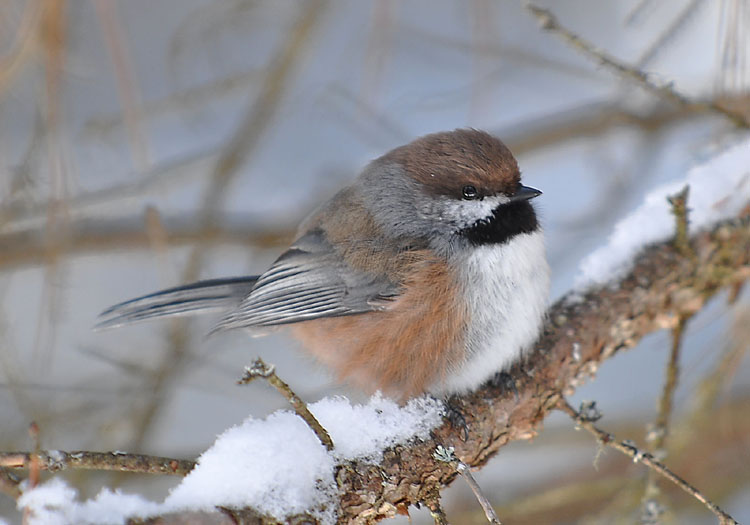
Boreal Chickadee
Photo: Justin Peter
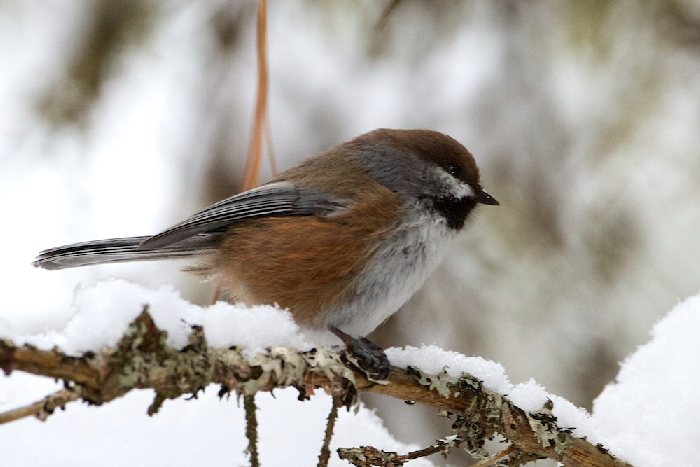
Boreal Chickadee
Photo: Arni Stinnissen
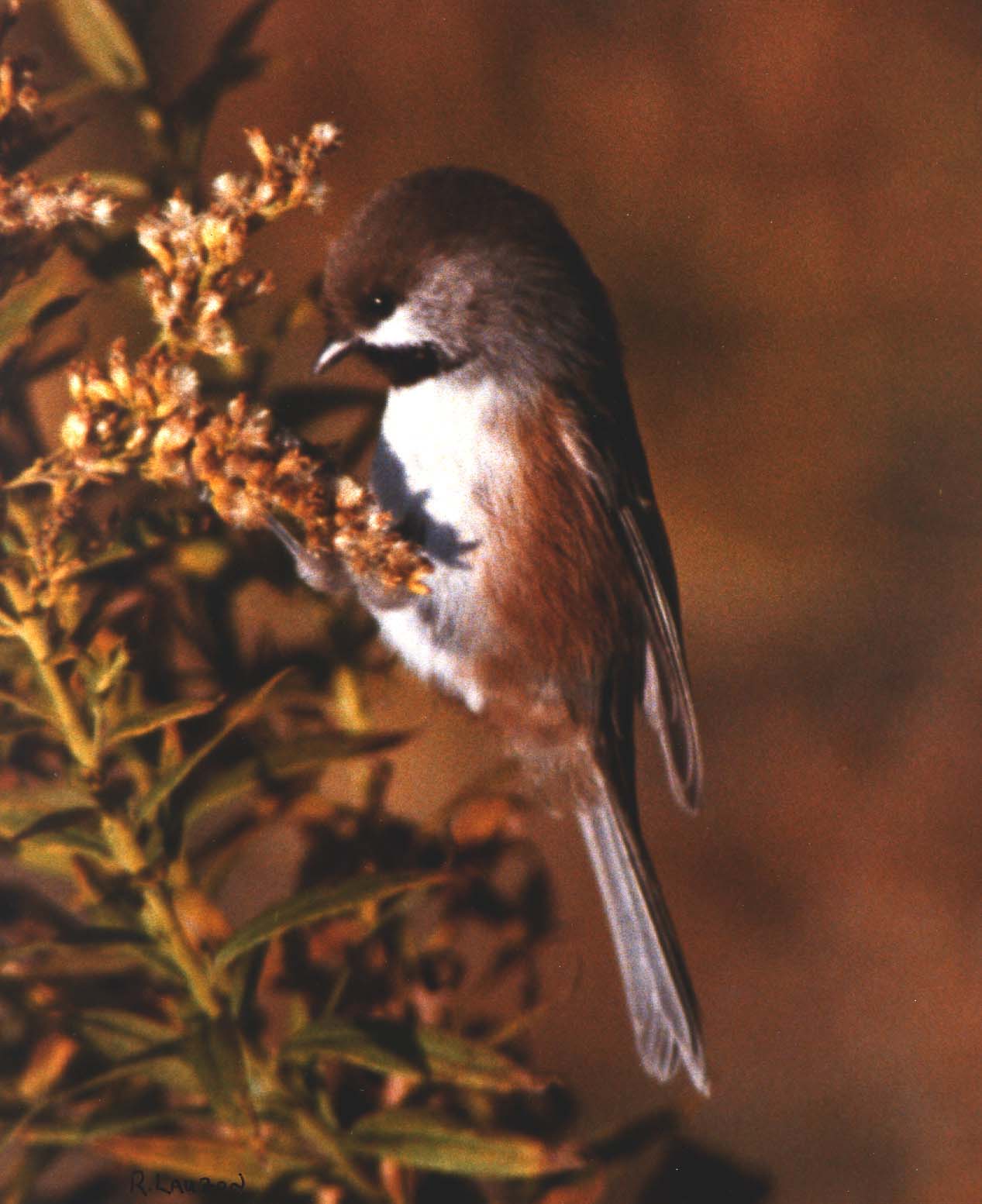
Boreal Chickadee
Photo: Rick Lauzon
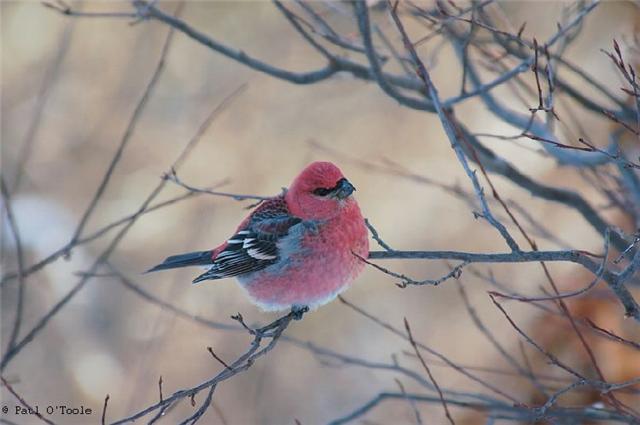
Pine Grosbeak
Photo: Paul R O'Toole
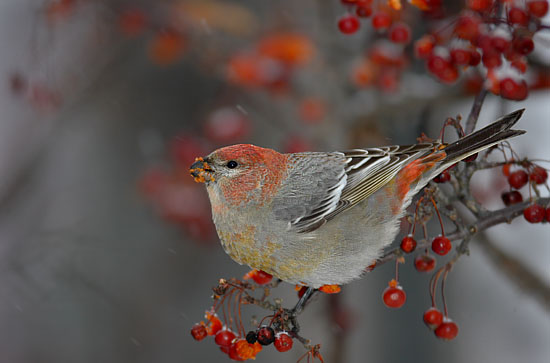
Pine Grosbeak
Photo: Brandon Holden
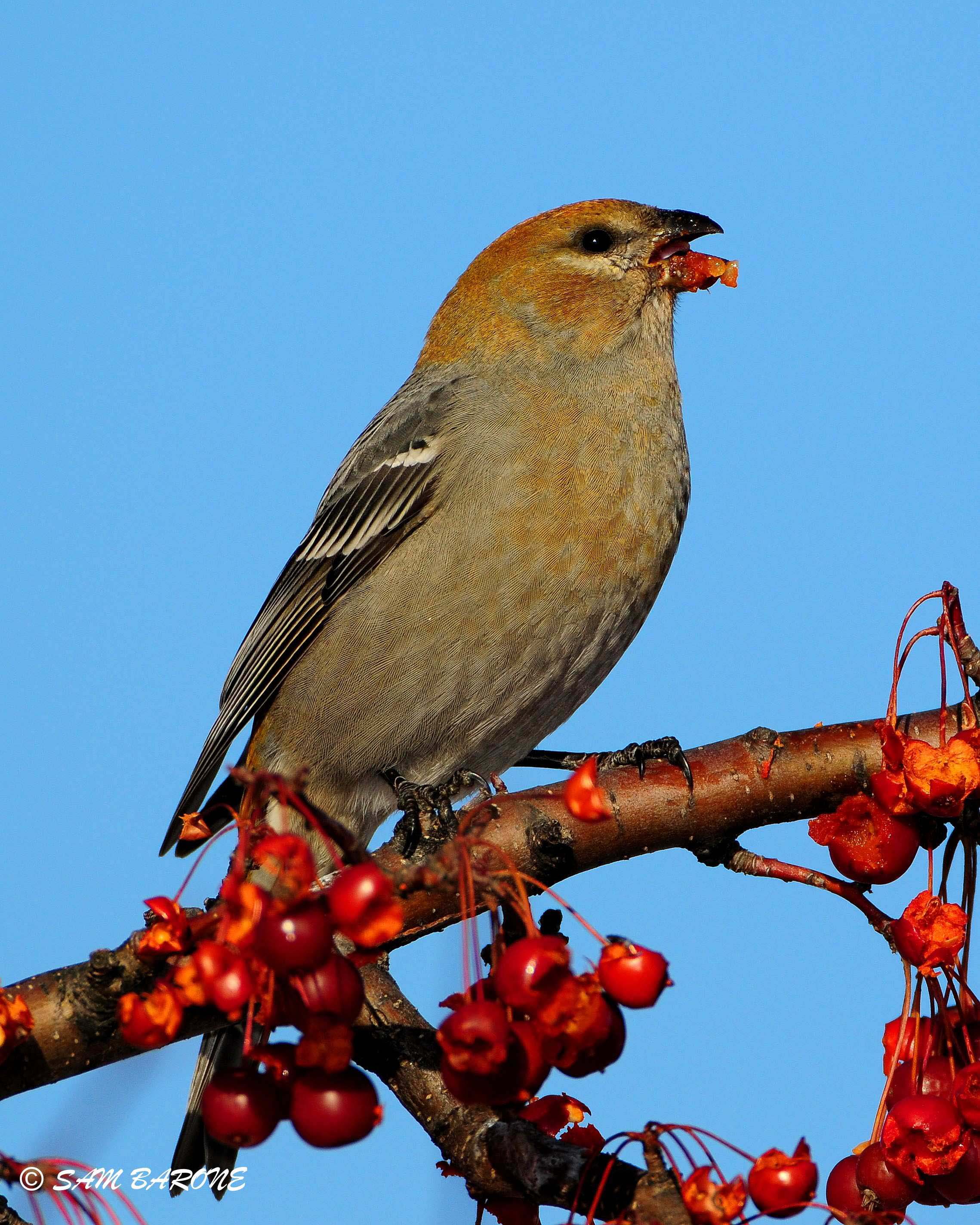
Pine Grosbeak
Female
Photo: Sam Barone
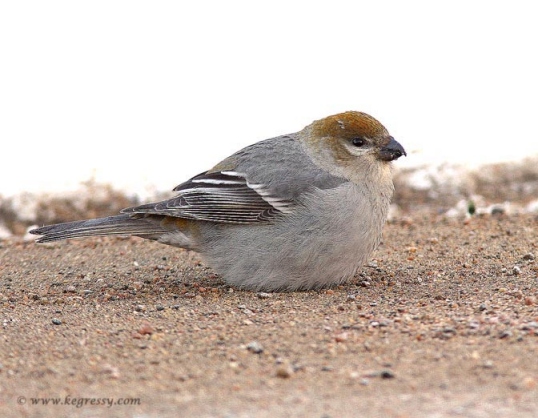
Pine Grosbeak
Female
Photo: Karl and Marienna Egressy
BarrieTop
December 4 2021 (Saturday) Barrie
Leader: Jim Coey.
18 people showed up for today's hike around Kempenfelt Bay. Although cool it was a delightfully sunny morning. After the initial shock of seeing cold water bathers plunge into the frigid Lake Simcoe we settled down to some serious bird watching. Unfortunately the incredible clouds of waterfowl that had been dominating the skies and waters of Kempenfelt bay, earlier in the week, were considerably reduced, in fact, to about 10% of what had been there on Tuesday. Highlights included a Red-throated Loon., a large raft of Common mergansers and two lingering Kingfishers. The Glaucous-winged gull was not seen. After a promising start the weather deteriorated to a vicious snow squall which reduced visibility and made birding very unpleasant. After about half an hour of this most participants voted with their feet and left. By eleven-thirty or so with the squall getting worse I called time. In all a disappointing morning. Jim Coey
December 7 2019 (Saturday) Barrie Lakeshore
Leader: Jim Coey.
!8 very hardy souls met at Dock Road in Barrie on a cold minus 8 degrees but sunny December morning with at least 10 centimetres of fresh snow. The lake is still ice free. Barrie waterfront has incredible accumulations of wildfowl at this time of year and today did not disappoint. Among the many hundreds of Canada Geese we had 7 Cackling Geese at Dock Road. A late Belted Kingfisher posed for pictures in a tree at Minet's Point and earlier in the morning at Dock Road..Common mergansers were all over the bay with one spectacular raft of many hundreds off Centennial Park. A Northern Pintail was present with many Bufflehead and Common Goldeneye. Mallards were abundant at each of our stops. We had a total of 21 Black Ducks and 5 Hooded Mergansers. Two Tundra Swans with no tags flew past at Minets and there 4 unidentified Swans at Johnson's beach There were 18 Greater Black -backed gulls , with many Herring, Ring-billed and a 1 first winter Glaucous Gull at Barrie Docks. There was a Double-crested Cormorant at the marina. There was a Raven, an American Robin and a Cooper's hawk at Minet's Point and 2 American Goldfinch and two White-breasted Nuthatches at Dock Road. Previously seen during the week a Snow Goose and Red-throated Loon regrettably did not show. Many thanks to all participants for making this a great outing and thanks to my compiler and assistant Chris Evans . List are posted to Ebird. Jim Coey
October 12 2019 (Saturday) Barrie Lakeshore
Leader: Jim Coey.
17 brave souls started out in the rain to bird Barrie's lakefront. The rain gradually let up and give way to a cold north west wind. Their resolve was rewarded with great looks at 12 plus Little Gulls among the hundreds of Common Terns and Bonaparte's Gulls. Two Merlins buzzed a couple of American crows in a game of chicken that looked like both sides were enjoying themselves. A rare leucistic Chipping Sparrow peaked interest for a bit and a Gray Tree Frog surprised a few people on the woodland trail. Several rafts of Common Loons contained hundreds ( possibly well over a thousand ) of birds but we could not find the elusive Pacific Loon. Ducks, except for Mallards, were missing from the count. Normally we would have rafts of many species of waterfowl this time of year. So no ducks, hundreds of Common Terns, flocks of Chipping Sparrows in Mid-October, are all unusual for Kempenfelt Bay. Climate change? Thanks for all the good eyes on the trip. Much appreciated. If anyone got a picture of the white sparrow. I would appreciate a copy. Thanks. We had a total of 33 species plus the frog, an excellent tally for the time of year. Posted on Ebird eBird Checklist - 12 Oct 2019 - Barrie--Heritage Park - 33 species Kempenfelt Bay can be reached off Hwy 400 by taking Essa Road north to right on Tiffin to left or right on Lakeshore Drive Jim Coey
December 8 2018 (Saturday) Barrie Lakeshore
Leader: Jim Coey.
Eighteen hardy birders met at Dock Road in Barrie at 9 a.m. December 8 for a series of stops along the south shore of Kempenfeldt Bay in Barrie. Snow fell heavily at times making visibility poor, down to 100 metres at times, and covering binoculars, cameras and scopes with light, white flakes. The snow finally ceased at about noon as the trip was ending at the Barrie Marina. I was the substitute leader and relied heavily on Chris Evans for local knowledge and eBirding. The participants were able to see 8 species of waterfowl and five species of gulls, For those looking for close up views of gulls, the marina at the west end of the bay is a wonderful spot. We had several Glaucous Gulls in various plumages and at least one first winter Iceland Gull. Bonaparte's Gulls were notable by their absence. We saw or heard very few passerines on the morning.
December 5 2015 (Saturday) Barrie Lakeshore
Leader: Jim Coey.
39 people took part in the second Annual OFO Barriewaterfront field trip. Billed as Gulls,waterfowl and winter finches. The gullsand waterfowl did not disappoint. However there were no winter finches. At the start of the trip, by the Barrie docks, participants were treated to a veritable blizzard of gulls and waterfowl ofmany species at very close quarters. The birds were feeding on a small bait fish called Emerald Shiners, seemingly occurring in the millions. Among the large numbers of Bonaparte's Gulls were at least 2 adult and 2 first winter Little Gulls. Common Loons and Double-crested Cormorants were also foraging on the shiners. There were several unusually large concentrations of Mallards. A couple of Long-tailed Ducks were notable. The morning started off quite foggy which soon dissipated and we were treated to a beautiful sunny day with a high of 12 degrees. Lake Simcoe was very calm and at Minette's Point we were presented with the spectacle of 100's of loafing gulls on the shore and swimming close to the shore. Ideal conditions for studying the various plumages and delighting both veterans and new birders alike. Here we had a Glaucous Gull, a Thayer's Gull , Kumlien's Iceland Gull and a very pale second winter Iceland Gull. There were also numerous Red-necked Grebes and a single White-winged Scoter off shore. Also present was the "Appledore" Great Black-backed Gull. This gull was banded on Appledore Island of the coast of Maine in 2011 as an adult bird. It has been showing up on the Barrie waterfront each November since then which makes it at least 8 years old. For a photograph of this bird and a complete list for the day contact me personally at jcoey@rogers.com. Many thanks are due to Jean Iron, Ron Pittaway and Burke Korol for their patient sharing of their expertise and to Chris Evans, president of the Brereton Field Naturalists' Club of Barrie for his logistical support and thanks to all the participants who made it a fun outing.
December 6 2014 (Saturday) Barrie Lakeshore
Leader: Jim Coey.
25 intrepid bird people braved the balmy 2 degrees of Barrie's fearsome Kempenfelt Bay today. Highlights were Ross's Goose, Glaucous, Iceland and Kumlien's Gulls and Great Black-backed Gulls in various plumages adding to the challenge. Common species were present in astounding numbers. We even had a surprise guest appearance by Jean Iron and Ron Pittaway to make our day. At the end of the day a few people went to Big Bay Point and were rewarded with great looks at a Pileated Woodpecker and a very quick fly by of a Bald Eagle.
For a complete list email me at
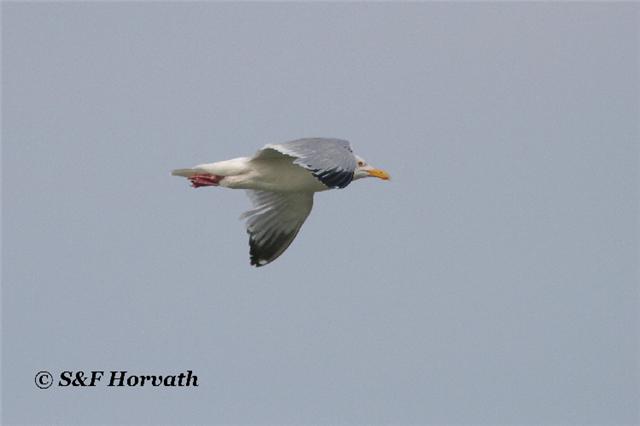
Herring Gull
Photo: Sandra and Frank Horvath
Bruce PeninsulaTop
June 4 2022 (Saturday) Bruce Peninsula
Leader: Alfred Raab, Kiah Jasper.
This past weekend (June 4th & 5th) 10 birders joined myself and Alfred Raab exploring the Bruce Peninsula in search of breeding birds. The weather couldn't have been much better with both days having sun and cloud, starting off fairly cool (8 degrees) but rising up to around 20 degrees in the afternoons. Saturday was a bit windy for the majority of the day, which did make birding by ear a challenge, but we still managed to find a good variety of species. On Saturday we started off at Hepworth and moved up the peninsula, stopping at multiple inland lakes as well as along the escarpment by Georgian Bay. Stops included; Malcolm Bluff, Spry Lake, Wiarton Sewage Lagoons, Sky Lake and Purple Valley. We ended the day at Isaac Lake in the early evening, with a total of 103 species. On Sunday we started at the Tobermory Airport and spent the day birding around the northern peninsula, including Dyers Bay Road and Cape Hurd Road. It was another fantastic day of birding, with the total reaching 85 species and bringing us up to 125 for the entire trip. Highlight birds from the weekend included: - a nice assortment of late ducks, Bufflehead, Lesser Scaup, Ring-necked Duck and Redhead - A lingering Red-necked Grebe - Sora and Virginia Rail - 1 Least Bittern - 2 American Bitterns - 25 Black Terns - 2 Northern Harriers - 1 Red-shouldered Hawk - 1 Red-headed Woodpecker - 2 Cliff Swallows - 1 Northern Mockingbird - 2 Grasshopper Sparrows - 5 Field Sparrows - 2 Dark-eyed Juncos - 4 Brewer's Blackbirds - 4 Golden-winged Warblers - 3 Blue-winged Warblers - 2 Mourning Warblers - Late migrant Blackpoll and Bay-breasted Warblers - 20 warbler species total - Multiple Scarlet Tanagers Good birding, Kiah Jasper
April 23 2022 (Saturday) Cabot Head and Bruce Peninsula
Leader: Martin Parker, Kathy Parker, Kiah Jasper.
Trip Report - OFO Cabot Head and Bruce Peninsula Weekend The annual April weekend trip to the Bruce Peninsula lead by Martin and Kathy Parker was attended by over 23 OFO members over the two days -- some came for only one of the days. At the end of the birding activities on Saturday and Sunday they recorded a total of 86 species of birds. The special bird of the weekend was the Western Tanager in the Myles Bay area. Special thanks to young Deklan and his father Sean for ensuring the Sunday participants got to see this special bird, which was visiting the feeder The weather on the weekend was variable. On Saturday it was windy and rainy most of the time resulting in changes to the planned schedule. At Dyer?s Bay the waves on Georgian Bay were suitable for surfing resulting in challenging viewing opportunities. While having lunch at Black Creek Prov. Park Reserve the sky to the south started to brighten indicating better weather was coming. Highlights on Saturday include: 4 Great Egrets in the area of the Oliphant boardwalk, 2 Bald Eagles at the nest on Myles Bay, Rough-legged Hawk in the Ferndale Flats, Yellow-rumped Warbler, Brown Creepers and both Kinglets in mixed flock at St. Margaret?s Chapel and 2 Brewer?s Blackbirds on Red Bay Road. On Sunday the sky was clear and the temperature was much higher. Sunday highlights include a massive flock of waterfowl on Stokes Bay (consisting of 17 species), both Horned and Red-necked Grebes off Dyer?s Bay, both species of Yellowlegs in two wetland areas, Pectoral Sandpiper, hawk and falcon movements in the Dyer?s Bay area (8 species), six species of sparrow including Vesper and White-crowned Sparrow, 3 warbler species in mixed flock near Dyer?s Bay, 4 Brewer?s Blackbirds on the Red Bay Road and the very special Western Tanager.
October 23 2021 (Saturday) Fall Bruce Peninsula Trips
Leader: Martin Parker.
Field Trip Report - Fall Birding on the Bruce, October 23-24, 2021 The annual OFO Fall Birding the Bruce Peninsula trip led by Martin & Kathy Parker, and new OFO Director Kiah Jasper provided many highlights for the participants. The highlights on Saturday, October 23 included multiple Rough-legged Hawks in the Ferndale Flats, Red-necked Grebes & White-winged Scoters off Dyer's Bay, arriving Snow Buntings at various locations on the Georgian Bay shoreline, late departing Osprey at Sky Lake which was being mobbed by a Bald Eagle, and many American Coots. Small flocks of White-winged Crossbills and Common Redpolls were encountered at a number of locations. On Sunday the participants encountered ten Rough-legged Hawks at various locations, a field with about 250 American Pipits, some of which posed on fence posts (when flying their bellies sparkled bright in the sunlight), Tundra Swans at Stokes Bay, multiple Northern Harriers and Bald Eagles, Greater Yellowlegs at Oliphant and close views of White-winged Scoters and a Red-necked Grebe and 2 Horned Grebes in the mouth of the Sauble River. The total species list for the weekend was 80 species. Checklists are being posted on eBird. There was rain while driving between locations and when the group stopped the sun shone through the clouds. Martin Parker
June 15 2019 (Saturday) and June 16 (Sunday) Bruce Peninsula
Leader: Alfred Raab, Kiah Jasper.
On Saturday June 15th, 10 birders met in Hepworth for the Bruce Peninsula OFO trip, despite the grim weather forecast. The morning and early afternoon were dominated by temperatures around 10 C and periods of heavy rain, which made the birding rather wet and uncomfortable. Despite this, the group made the most of it and were able to find a good variety of species. The sun finally came out at 3pm, which gave us two hours to find some more birds and dry out before calling it a day. We visited numerous hotspots between Sauble Beach and Ferndale during the day, ending up with a total of 84 species. Not bad considering the weather. Some highlights for the group included; Green-winged Teal, Greater Yellowlegs, Piping Plover, Common Loon, Least Bittern, American Bittern, Grasshopper Sparrow, Dark-eyed Junco, Brewer's Blackbird and Mourning Warbler. On Sunday, June 16th, 12 birders met at the Tobermory Airport for a day of birding around the northern Bruce Peninsula. We birded around the airport for a bit and then spent the day working our way south towards Ferndale. The weather was sunny and the temperature hovered around 16C for most of the outing, which was a nice treat after Saturday. The group netted a total of 87 species during the day, with some of the highlights being; Upland Sandpiper, Sora, Sandhill Crane, Green Heron, Northern Harrier, Broad-winged Hawk, Bald Eagle, Cliff Swallow, Pileated Woodpecker, Bank Swallow, Grasshopper Sparrow, Vesper Sparrow, Golden-winged Warbler, Mourning Warbler and Northern Parula. A combined total of 108 species were recorded over weekend, making it a pretty successful trip.
June 16 2018 (Saturday) Bruce Peninsula (2-day trip)
Leader: Alfred Raab, Cindy Cartwright.
On a partly cloudy, partly sunny weekend 12 birders explored the Bruce Peninsula from Hepworth to the northern part of the Peninsula over the 2 days. We visited the following areas: Saturday: Sable Beach, Sable Falls, Boat Lake, Malcolm Bluff, Crooked Toe Road, Sky Lake, Isaak Lake Sunday: Tobermory Airport area, Crane Lake Road, Lindsay Rd 40, Dyers Bay Rd. Heavy fog prevented us from going to the north end of the Peninsula, also the Singing Sands area was closed. We saw a total of 115 species. Many birds were heard only such as Sora, Virginia Rail and Blue-winged Warbler. We had good looks at American Bittern, Ospreys on nest, Bald Eagle, lots of Sandhill Cranes, Piping Plover on nest, Wilson Snipe, many Black Terns, Black and Yellow-billed Cuckoos, Marsh Wrens, many Golden-winged Warblers, Eastern Towhee, Clay-colored Sparrow, Grasshopper Sparrow, lots of Bobolinks, Eastern Meadowlark, Brewer's Blackbirds. It was an excellent birding day, but we could not find a Sedge Wren, Bank Swallow and Upland Sandpiper. Thanks to all participants for a very enjoyable day. Special thanks to Mary Ramotar for identifying the flowers.
June 17 2017 (Saturday) Bruce Peninsula (2-day trip)
Leader: Alfred Raab, Cindy Cartwright.
Birders had an excellent weekend on the Bruce Peninsula in spite of Mother Nature's best efforts to drown us and drive us out with thunder and lightning. We kept a careful eye on the weather throughout the day. One particularly awesome arced wall cloud passed overhead with non-rotating dark spirals and late in the afternoon, a tornado warning was announced for the counties to our east. The small group of seven was perfect for one leader to organize with a short car caravan making stopping along the way very easy. The first target species jumped the queue when an Upland Sandpiper was spotted on a telephone wire just west of Hepworth. This was fortunate because the species is becoming very difficult to find as grasslands are converted to monoculture pine plantations and cash crops at an alarming rate. Thousands of acres of grassland and pasture have been lost in Bruce in the past 10 years. There was a lot of excitement with the Piping Plovers (the planned first target). The last egg had just hatched and we were able to see the still wet chick trying to stand as the mother worked to shelter all four under her. The other three chicks were still at the wobbly-legged stage and it was comical to watch their attempts to move around. One briefly toddled out of the exclosure before being piped back. The weather kept many species tucked deep in the trees and out of the air so raptors and warblers were few. Access to several trip locations was blocked by flooding. But the low light from overcast skies also provided many great views of displaying snipe and low flying bitterns, night-herons, and terns. 94 species were found on the trip including highlights: - Black-crowned Night-heron - adults and immature - Black Tern - Caspian Tern - Common Loon - with a chick - Sandhill Crane - Grasshopper Sparrow - Golden-winged Warbler - Brewer's Blackbird - Dickcissel - Chimney Swift - Clay-coloured Sparrow - American Bittern - Bobolink - Eastern Meadowlark This was the 10th year that I've lead this trip since John Miles passed away so plant walks at the Oliphant Fen and Petrel Point were included. Participants were shown Linear-leaved Sundew, Pitcher Plant, Butterwort, Yellow and Showy Ladyslippers, Tall White Bog Orchid, Grass Pinks, Bog Cotton (also called Cotton Grass), and Tufted Loosestrife. Long-time participant Mary Ramotar also identified several other Bruce plants throughout the weekend. The species total was very good considering the weather conditions and I'm already looking forward to next year.
June 18 2016 (Saturday) Bruce Peninsula (two days)
Leader: Cindy Cartwright, Alfred Raab.
A smaller group of 7 birders enjoyed a beautiful hot summer day in the Bruce Peninsula. The first day we started in Hepworth, birded Sauble Beach, nearby woodlot and the fields, Malcolm Bluff, Cape Crocker, Isaac and Sky Lake.On the second day we started at the top of the peninsula, birded Dyer's Bay and Crane Lake Rd area. We saw a total of 102 species. Highlights were: Upland Sandpiper (only 1), Brewer's Blackbird (there are very few breeding locations left), many Bobolinks,Grasshopper (1) and Clay-colored Sparrows (3), Eastern Towhee, Brown Thrasher, Mourning, Blue-winged and Golden-winged Warblers, Black-billed Cuckoo, Sedge and Marsh Wrens. In addition we enjoyed many beautiful plants, all identified by Mary Remoter.
June 20 2015 (Saturday) Bruce Peninsula (two days)
Leader: Cindy Cartwright, Alfred Raab.
We had 2 perfect days for birding the Bruce Peninsula, 15 birders on Saturday and 13 on Sunday participated. Over the two days we found 104 species, but missed some common ones. Highlights: Upland Sandpiper in Cape Crocker, Piping Plover on the nest (they all hatched on Sunday) and one along the water's edge at Sable Beach, Sandhill Cranes with young, American Bittern, Virginia Rail and Sora (both heard only), Black Terns, Olive-sided Flycatcher, great looks at Sedge Wren at two locations, Marsh Wrens, 15 Warbler species, including great looks at Canada and Mourning, found the male Hooded singing in Malcolm Bluff and many of us were able to see it high up in the trees, Vesper Sparrow, Grasshopper Sparrow, lots of Bobolinks, Meadowlarks and a few Brewer's Blackbirds. A thanks to all participants, it was a very enjoyable day.
June 15 2013 (Saturday) Bruce Peninsula
Leader: Cindy Cartwright, Alfred Raab.
Approximately 40 participants enjoyed a wonderful weekend on the Bruce Peninsula this year. There were quite a few new people this year and we thank the experienced birders who showed so much patience with their questions as we birded along.
The weather was beautiful on Saturday and except for an hour of rain early on Sunday morning, it turned into a great day as well.
103 species were counted including the following highlights:
Upland Sandpiper, Piping Plover (on nest), Brewer's Blackbird (pairs), Loggerhead Shrike (reported), Sandhill Cranes (with colts), Caspian Tern, Black Tern, Bald Eagle (at nest), Golden-winged Warbler (pair), Mourning Warbler, and Scarlet Tanager (pair).
Thank you to the participants for being such an eager and interesting group. And thank you to Mary Ramotar for identifying plants throughout the weekend.
June 18 2011 (Saturday) & June 19 (Sunday) Bruce Peninsula
Leaders: Cindy Cartwright, Alfred Raab.
38 participants enjoyed beautiful weather for the OFO Bruce Peninsula trip on June 18/19.
108 species were observed including Upland Sandpiper, Brewer’s Blackbird, Black Tern, Red‐Shouldered Hawk, Piping Plover, Sandhill Crane, Clay‐Coloured, Vesper and Grasshopper Sparrows.
Thanks to Mary and Pat for identifying many flowers and ferns for the participants and leaders.
June 19 2010 (Saturday) and June 20 (Sunday) Bruce Peninsula
Leaders: Cindy Cartwright, Alfred Raab.
32 participants enjoyed sunny skies and beautiful weather on the June 19/20 OFO trip. 105 species were observed including Piping Plover, Upland Sandpiper, Sandhill Crane, Brewer's Blackbird, Red‐headed Woodpecker, Black Tern, and a Virginia Rail with chicks. Nests of seven species were documented.
Other highlights included orchids, ferns and other specialty plant species, dragonflies, butterflies, and a young black bear.
Thank you to all the participants–it was a pleasure spending the weekend with you.
20‐21 June 2009 Bruce Peninsula
Leaders: Cindy Cartwright, Alfred Raab.
Twenty OFO members and guests meet on Saturday morning in Hepworth for the start of a two day birding field trip covering the Bruce Peninsula. The leaders for both days were Cindy Cartwright and Alfred Raab. On Saturday our first stop was at Sable Beach looking for the Piping Plover, then on to Boat Lake, Isaac Lake and Sky Lake. In the afternoon we drove along the side roads around Ferndale and the last stop was at Black Creek Provincial Park at the shores of Lake Huron near Stokes Bay. On Sunday we started at the Tobermory Airport, stopped at the Tobermory dump, then drove north to Cape Hurd, then south to Dorcas Bay (Singing Sands), along Dyers Bay Road, north on Bartley Dr. west on Lindsay Rd 40 and back to Hwy 6.
For the two days we saw 109 bird species.
The highlights were:
Birds:
- 2 adult Bald Eagles at Sky Lake, 1 juv at Tobermory dump
- Pied‐billed Grebe near Tobermory Airport
- American Bittern, male with white fluffy shoulder puffs, female nearby on Dyers Bay Road
- Least Bittern at Boat Lake
- Virginia Rail with young at Isaac Lake
- Sandhill Crane at Tobermory Airport and heard at various locations.
- Piping Plover at Sable Beach
- Upland Sandpiper near Ferndale and Dyers Bay Road
- Black Terns at Sky Lake
- Yellow‐bellied Sapsucker at nest near Sky Lake
- 13 Warbler species
- Clay‐colored Sparrow at Lindsay Rd 40
- Grasshopper Sparrow at Tobermory Airport
- Bewer’s Blackbirds near Ferndale
Plants: Robert’s Fern, Rattlesnake Fern, Lakeside Daisy, Yellow Lady’s Slipper (abundant), Showy Lady’s Slipper, Ram’s Head Lady’s Slipper, Tall Northern Green Orchid, Spotted Coralroot
Mammals: Black Bear, Coyote
Alfred Raab, near Lions Head, Northern Bruce Peninsula
21‐22 June 2008 Bruce Peninsula
Leaders: Cindy Cartwright, Alfred Raab.
The weather forecast was completely wrong and we enjoyed beautiful sunny skies for the OFO trip. Thanks to the participants for being such a great group!
101 species were observed by the group, and individual participants picked up another 5‐10 species on Friday and Saturday evenings. Highlights were: Piping Plover, Upland Sandpiper, Brewer’s Blackbird, Black Tern, Least Bittern, Golden‐winged and Blue‐winged Warblers. The Piping Plovers have begun to hatch and this weekend should be very exciting (busy) for the guardians.
Reported by Cindy Cartwright, Alfred Raab.
23‐24 June 2007 Bruce Peninsula
Leader: John Miles.
Below is the complete list of 111 species observed by participants on the Bruce OFO trip. The last species of the day was a group of Upland Sandpipers (at least 3 adults and 4 pint‐sized young) at Parkhead.
Common Loon; Pied‐billed Grebe; Double‐crested Cormorant; American Bittern; Least Bittern; Great Blue Heron; Great Egret; Green Heron; Black‐crowned Night‐Heron; Turkey Vulture; Canada Goose; Wood Duck; Mallard; Northern Shoveler; Blue‐winged Teal; Green‐winged Teal; Common Merganser; Red‐breasted Merganser; Hooded Merganser; Bald Eagle; Osprey; Northern Harrier; Sharp‐shinned Hawk; Red‐shouldered Hawk; Red‐tailed Hawk; American Kestrel; Wild Turkey; Virginia Rail; Sora; Sandhill Crane; Piping Plover; Spotted Sandpiper; Killdeer; Wilson’s Snipe; Upland Sandpiper; Ring‐billed Gull; Herring Gull; Glaucous Gull; Caspian Tern; Common Tern; Black Tern; Rock Pigeon; Mourning Dove; Black‐billed Cuckoo; Chimney Swift; Ruby‐throated Hummingbird; Belted Kingfisher; Red‐headed Woodpecker; Hairy Woodpecker; Downy Woodpecker; Yellow‐bellied Sapsucker; Northern Flicker; Eastern Wood‐Pewee; Alder Flycatcher; Least Flycatcher; Eastern Phoebe; Great Crested Flycatcher; Eastern Kingbird; Tree Swallow; Barn Swallow; Northern Rough‐winged Swallow; Cliff Swallow; Bank Swallow; Blue Jay; American Crow; Common Raven; Black‐capped Chickadee; Red‐breasted Nuthatch; White‐breasted Nuthatch; House Wren; Marsh Wren; American Robin; Eastern Bluebird; Veery; Gray Catbird; Brown Thrasher; Cedar Waxwing; European Starling; Warbling Vireo; Red‐eyed Vireo; Yellow Warbler; Magnolia Warbler; Yellow‐rumped Warbler; Black‐throated Green Warbler; Blackburnian Warbler; Black‐and‐white Warbler; American Redstart; Ovenbird; Common Yellowthroat; Northern Cardinal; Rose‐breasted Grosbeak; Indigo Bunting; Dickcissel; Eastern Towhee; Chipping Sparrow; Clay‐coloured Sparrow; Field Sparrow; Savannah Sparrow; Grasshopper Sparrow; Song Sparrow; Swamp Sparrow; White‐throated Sparrow; Bobolink; Red‐winged Blackbird; Eastern Meadowlark; Brewer’s Blackbird; Common Grackle; Brown‐headed Cowbird; Baltimore Oriole; American Goldfinch; House Sparrow.
Reported by Cindy Cartwright.
24‐25 June 24 2006 (Saturday and Sunday) Bruce Peninsula
John Miles provided 16 OFO participants with a great weekend of birds, flowers, ferns and orchids on the annual OFO outing to the Bruce Peninsula. We saw a total of 115 species of birds. Saturday highlights were at least 8 Black‐billed Cuckoos, Sedge Wren, American Bittern, several Black Terns at Shallow Lake, Brewer’s Blackbird near Ferndale, and 15 species of warblers. The Oliphant Fen had a fine display of orchids. Rare ferns were found in a number of locations including the Shallow Lake area.
Sunday highlights included at least 2 male Dickcissels on Dyers Bay Road, Merlin, Ruffed Grouse, Virginia Rail, Clay‐colored Sparrow, Veery, and Wood, Hermit, and Swainson’s Thrushes. Rare ferns, flowers and orchids were found. For some the best find was a Massasauga Rattlesnake in an alvar depression near Dyers Bay.
Reported by Dave Milsom.
25‐26 June 2005 Bruce Peninsula
Leader: John Miles.
Saturday morning, 24 OFO members and friends assembled at the Hepworth Tim Hortons. We proceeded east to Shallow Lake and then NE checking out the swamps on the road past the McNabb Lake complex. At the large swamp past the entrance to the lake, four Great Egrets were near each other. We returned back towards Shallow Lake and walked on the road leading back towards the boat launch but stayed on the old concession road. A Golden-winged Warbler was seen and heard as well as several other species. Up the slight hill, we examined several ferns including Hart's Tongue. After a Tim Hortons coffee fix etc., we proceeded NW on what use to be the South Diagonal Road stopping several times and picking up singing Vesper Sparrows and other species. At one stop, a Carolina Wren could be heard singing from across the field. The bird was actually located in the scopes on top of dead tree maybe 300 metres away. At this location, a Grasshopper Sparrow landed in a small sapling about 50 feet away. Further down the road, a Wild Turkey was out in a field and two pairs of Red-shouldered Hawks were seen soaring.
We turned north and headed up to the junction with the North Diagonal Road where Brewer's Blackbirds and an Upland Sandpiper put on a show. At Isaac Lake, a Virginia Rail came out for the group to see. At the boat launch, an Osprey put in an appearance. Lunch was at the picnic area south of Marr. Then we headed to Sky Lake where we picked up Pied-billed Grebe, Marsh Wren and Caspian Tern. The ditches at Petrel Point were pink with a fabulous display of Grass Pink with a few Rose Pogonias mixed in. In the trees above, several male Purple Finches added pink to the trees tops. Showy Lady Slippers and bog candles added to our orchid list. Taking the Howenvale Road, we proceeded over to the centre road and then north toward Black Creek. The Cliff Swallows were present at their usual location. At Black Creek, several species were added to the day's list but the Olive-sided Flycatcher did not show. We returned to the cars and called it a day at 4:30 p.m. The group combined list was at least 92 species including 15 species of warblers.
Sunday morning, we reassembled at the Tobermory Airport where 21 people showed up with several new faces in attendance. Several stops were made on the way to the Tobermory dump, where over 40 Turkey Vultures were on the ground and on posts. A couple of Common Loons made a fly past. We headed for Cape Hurd making several stops. At one stop, an Alder Flycatcher was very co-operative. A few Yellow Lady Slippers were still in good shape in the shade and several Northern Green Orchids were seen.
At the end of the road, we walked out through Sunset Park and found a few Red-breasted Mergansers off shore. The herp specialists had a couple of Ribbon Snakes.
Lunch was at the Crane River Picnic grounds followed by a look at the infamous fern wall and a search for the Nodding Trillium. Some of our Michigan friends made special requests for several rare fern species so we stopped at the Purple Stem Cliffbreak site and then at the Dyers Bay Junction where we walked into to see the Robert's Fern. An examination of the various cracks in the limestone on the alvar finally produced a small clump of Green Spleenwort. We proceeded south on the old road stopping to look as some Male Fern before going out to No. 6 and the Miller Lake service station for treats and gas.
Then back up no. 6 to the Dyers Bay road and then east to the Wall Rue rock. Onwards to the Crane Lake Road. About 1/2 mile north of the Dyers Bay Road a stream comes by where there used to be a lot of beaver activity. We stopped as a Least Flycatcher was being vocal. One of the observers spotted a large bird about 1/2 way up in a tree at the back of the beaver meadow to the east. The bird finally turned around showing its facial disc and bright yellow eyes, a fantastic Great Gray Owl. This bird was hunting and swooped down into the grass, reappeared and flow towards us landing in a low snag just at the top of the grass before moving higher in the small trees. This bird was only 100-150 feet away.
With the time getting on we continued north and took the road east towards Larkwhistle. Several stops were made along the shrubby field. At the final stop maybe 200 metres from Larkwhistle the buzz, buzz calls of a Clay-colored Sparrow were clearly heard. We took the tour of Larkwhistle and all the fabulous flowers. When the tour was over it was 4 p.m. and we went our separate ways. On Sunday we added at least 17 more species to the group's bird list bring the weekend total up to at least 109 species of which 18 were warblers. While not recorded with the group, Sandhill Cranes were present this weekend. There were several calling around the Cape Chin North B & B Sunday morning.
Reported by John Miles.
26‐27 June 2004 Bruce Peninsula
Leader: John Miles.
From Hepworth Saturday morning, our caravan proceeded north on No. 6 and headed west at Clavering. At the end of this road, was a family of Brewer's Blackbirds and numerous Upland Sandpipers. En route to Sauble Falls, we had Pine Warblers, a male Scarlet Tanager and a Belted Kingfisher on the Rankin River. From Sauble Falls, we headed north and turned off the highway at the south road to Oliphant stopping a few 100 metres down the road. An adult Bald Eagle was observed soaring behind us. Along the shoreline, a Great Egret flew by.
At the Oliphant Fen, numerous fen plants were seen including butterwort, sundew, showy lady slippers, bog candles, rose begonia and grass pink. At the Rankin River on the Oliphant Road, the Osprey was home on the nest and Marsh Wrens were calling from the cattails. We proceeded over to No. 6 and headed north to Isaac Lake. Here a Trumpeter Swan was seen. Several Blue-winged Teal and a Green-winged Teal were observed. A rail tape was played and a distant Virginia Rail responded. The Sora tape produced a single reply, however, the calls of an American Bittern in the background of the tape brought a bittern out into plain sight. An adult Black-crowned Night Heron flew by.
Sky Lake was rather choppy with the strong wing, but we saw a Caspian Tern working the lake and a Pied-billed Grebe. We proceeded up the peninsula on the back roads while some took the scenic route to Black Creek Provincial Park. A walk back along the old trail produced an Olive-sided Flycatcher west of the beaver dam. At 5 p.m. we called it a day with the group day-list of 98 species. Sunday morning we reconvened at the Tobermory airport. Along the Cape Herd Road, we had good looks at Nashville Warblers and at least two different Northern Goshawks were seen, an adult male and female. The lake was fairly quiet bird wise, but a Common Tern did come fairly close.
We headed over to No. 6 and south to the restaurant on the Cameron Lake Rd. for coffee. South of the Cameron Lake Rd. we stopped at a cattail marsh on No. 6 and enticed a Sora out to the road which many saw at very close range. Turning off No 6 at the Dorcus Bay Rd. we headed west toward Singing Sands and had a pair of Sandhill Cranes right beside the road in the ditch.
We continued along the road towards Johnson's Harbor. We did have a Mourning Warbler calling consistently at one stop, but the bird was too far off the road to see. Just after leaving Johnson's Harbor, a Pileated Woodpecker flew across the road. Lunch was at the Crane River Picnic Grounds where the black flies were numerous. We explored the fern wall and then headed south on No. 6 stopping to have a look at the rare purple stem cliff break. A walk around the Dyers Bay junction alvar failed to produce many birds, but we had a look at the rare Robert's fern. We headed east on the Dyer's Bay Rd. stopping to look at the wall rue fern and then north on the Crane River Rd. At the big marsh a Virginia Rail responded to the tape and came out. In the distance to the west, the call notes of a Sedge Wren could be heard occasionally. The strong wind made it impossible to hear much at the Clay-color Sparrow location, so we headed onwards to Lark Whistle and a leisurely walk in the fabulous garden. Then we were off to Cabot's Head where we called it a day at 4 p.m. For the weekend, OFOers on the Bruce recorded approximately 114 species.
Reported by John Miles.
21‐22 June 2003 Bruce Peninsula
Leader: John Miles.
Twenty OFO members and friends met at 7 a.m. at Hepworth. We proceeded east to Shallow Lake and then northeast towards MacNabb Lake stopping at various spots to check out the extensive swamp. Numerous birds were seen and heard including a Blue-winged Warbler. We found a Great Egret close to the road. As we were headed back to MacNabb Lake side road a second Great Egret came in high up from the southeast. The walk on the side road to the lake produced several species of warblers including a calling Mourning Warbler which kept well hidden in the dense undergrowth.
After two hours we left MacNabb Lake and went back to Hepworth. We then proceeded east and then north on the first road at the edge of the village. Great views of a co-operative Indigo Bunting were obtained while a Vesper Sparrow called in the distance. A couple of distant calls of a Clay-colored Sparrow were heard by some. On the first road going east from the Zion Church Rd. in one of the swampy valleys along this road we had a pair of Red-shouldered Hawks circling overhead. On a tour through theback roads of Keppel township, a Black-and-white Warbler put on a close display. Back on the Zion Church Road we proceeded to the Oxeden Creek bridge where a Virginia Rail came within five feet.
Lunch was at the Lake Charles Conservation area where a Common Raven greeted our arrival and a Purple Finch bid us goodbye. At the Rankin River a pair of Ospreys were housekeeping. The west shoreline was not productive. It was a little breezy at Sky Lake for too much but a few Black Terns were over the reeds. Issac Lake was a little quiet as it was mid-afternoon but a Marsh Wren was calling. A single Sora call was heard. At the Goose impoundment an American Bittern stood out in the open for all to see. At the back parking lot by the lake the Ospreys were home on the nesting platform behind the privy. Both an American Bittern and an Adult Black-crowned Night-Heron did flybys low over the parking lot.
We continued north along No. 6 and had a Brewer's Blackbird just north of Mar We turned west off No. 6 and did a country block at the south end of the Ferndale flats finding another adult Black-crowned Night Heron in a ditch. The group cumulative total was up to 104 species with 14 species of warblers found.
At 7 a.m. Sunday morning, 14 OFO members reassembled at the Tobermory Airport. We proceeded with several stops up to Sunset Park at Cape Hurd. Here the highlight was a Merlin that flew a long way out into the lake, caught a prey and returned back to land. We eventually reached the Crane Lake Rd. where we had good looks at male Purple Finches. Further north the road through the swamp was a series of islands but still passable. While we tried for rails, four calling Sandhill Cranes came by headed towards Crane Lake. We later saw four more on the ground.
Just west of Lark Whistle a Clay-colored Sparrow was vocal and good views were had. We stopped at Lark Whistle to admire the floral display. While getting out of the cars a single Sandhill flew low over the parked cars. In mid afternoon several headed home while the rest wentto the Cabot Head lighthouse. Not much was seen although a few Common Mergansers were on the rocks beside the road. At the lighthouse the trees in flower were literally covered with clear wing moths, unbelievable numbers for this rarely seen species. The group broke up at 3 p.m.
The group total for the weekend was around 120 species.
Reported by John Miles.
15‐16 June 2002 Bruce Peninsula
Leader: John Miles.
Twenty OFO members started off at 7 a.m. from Hepworth Saturday morning and proceeded north up highway 6 stopping just before the Centre Diagonal Rd. In the second field to the west of the highway were a pair of Sandhill Cranes out in the hay. We turned west on the Centre Diagonal Rd. picking up various birds including Alder Flycatcher, Hermit Thrush and Purple Finch. On Side Road 15 we had a Common Snipe on a fence post and then an Upland Sandpiper. On the North Diagonal Road we spotted a Grasshopper Sparrow. On the Zion Church Road just before the 17th concession, several Turkey Vultures were near the road sunning while a Scarlet Tanager was singing high up. A Pileated Woodpecker decided to do a flyover. Continuing north, we stopped at the large swamp just south of Oxeden and saw a Blue-winged Teal. Three Virginia Rails came out into the open in response to a tape, while a Green Heron landed nearby. At the north end of the Swamp where the Oxeden Creek exits were Northern Rough-winged Swallow.
We headed east to the Lake Charles Conservation Park where we saw a Common Loon with young and an Osprey catching a fish. At the west end of the lake swimming off the reeds was a male Lesser Scaup. Two Caspian Terns were spotted across the lake. At Bruce's Caves we did some cave exploring and were rewarded with view of a Scarlet Tanager and an agitated Pileated Woodpecker. Heading north from Wiarton we stopped at Isaac Lake. At the bend at the north end of the marsh an adult Black-crowned Night Heron stood out in full view on the mud for the longest time. An American Bittern came in from the east and crossed the road before dropping in to the marsh. A very co-operative Sedge Wren put in an appearance. A Trumpeter Swan was in the ditch beside the road west of the bend along with a couple of Blue-winged Teal and a female Hooded Merganser. A co-operative Merlin flew over the group.
Onwards to Sky Lake where we heard the calls of a Pied-billed Grebe. Several Black Terns and a Common Tern flew over the lake. Going north we took the Howdenvale Rd. east to the Daddy Weir Road and then north stopping at a barn where Cliff Swallows nest under the eaves. By 5 p.m. when we broke up for the day the group had recorded about 97 species. We reconvened Sunday morning at 7 a.m. at the Wiarton Airport. A Mourning Warbler called a few times along the west side of the airport near the road. After the Tobermory Dump, we headed north along the McArthur Rd. Past the hay field on the east side of the road just north of 911 sign number 124 I heard an unfamiliar call. Out in the field 50-60 feet on top of the hay singing and facing us was a Nelson's Sharp-tailed Sparrow. A fantastic looking bird with it's deep ocher-yellow face and chest. The bird quickly dropped into the grass and disappeared.
The Cape Hurd Road produced several species of warblers including Canada and Northern Parula. At one little marsh a Sora responded to a tape coming right up to the group. Here also was the trip's second American Bittern. Along the Dorcas Bay Road we stopped for a singing Blue-headed Vireo. On the Dyer's Bay Road a group of Brewer's Blackbirds seemed to be having problems keeping Ring-billed Gulls away from their nests. Just west of Lark Whistle on the north side of Lindsey Rd. 40, a Clay Colored Sparrow was spotted sitting on a dead branch out in the open where it sat for 10-15 minutes allowing everyone great views through the scopes. Those with keen ears picked out a Golden-winged Warbler out in the field to the south. The group headed south on the East Road to Lindsay Rd. 5 and then south on the Cherry Hill Rd. where in a soy bean field a Horned Lark called. We then broke up having seen 80 species on Sunday. Over the two days about 115 species were recorded.
Reported by John Miles
16‐17 June 2001 Bruce Peninsula
Led by John Miles.
John took us to lovely areas rich in natural attributes. We had fine sunny weather with cooling Lake Huron and Georgian Bay breezes that created ideal birding conditions. About 36 people attended from all over Ontario. Collectively we saw about 115 species of birds during the two days. Here are the highlights in checklist order:
Osprey on the nest at Isaac Lake
Virgina Rail at Isaac Lake
Sandhill Crane flying over Isaac Lake
Upland Sandpiper on Limberlost Road
Common Snipe on fence post on Isaac Lake Road
A gull we believe was an adult Great Black-backed x Herring Gull hybrid standing beside a Great Black-backed Gull on the beach at Oliphant. Its mantle was darker grey than Herring Gull, and it was larger than the other Herring Gulls.
Black-billed Cuckoo at Larkwhistle
Pileated Woodpecker at Crane River
Alder and Willow Flycatchers in many places
Olive-sided Flycatcher at Black Creek Provincial Park
Cliff Swallow
Eastern Bluebird
Brown Thrasher
Pine Warbler at Singing Sands
Mourning Warbler at the Tobermory Dump
Scarlet Tanager
Brewer's Blackbird on Limberlost Road
Clay-colored, Field and Vesper Sparrows on Gillies Lake Road
On the way home, several of us saw a Ruffed Grouse shepherding chicks across the road from Cabot Head. I watched an Eastern Massasauga Rattlesnake crossing the same road. It rattled its tail at me!
The Bruce Peninsula's varied habitats include alvars. In addition to birds, the Bruce is famous for wild flowers, orchids, ferns and butterflies. We saw lots of Showy Lady's Slippers, Yellow Lady's Slippers, Lakeside Daisies, and Pitcher Plants. Rare ferns included Slender Cliffbrake, Purple-stemmed Cliffbrake, Robert's Fern, Wall Rue, and Maidenhair Spleenwort.
Reported by Jean Iron
17‐18 June 2000 Bruce Peninsula
Led by John Miles.
Jean Iron reports: The two-day OFO trip attracted about 40 birders. We started at Spirit Rock just north of Wiarton on Saturday, going north primarily on the west side of Highway 6, ending in the evening at Singing Sands in Bruce Peninsula National Park. Some stayed overnight in Tobermory. On Sunday we proceeded south mostly on the east side of Highway 6, ending at Bruce's Caves, east of Wiarton.
The group saw a total of 115 species of birds. Highlights included:
1.Several pairs of Brewer's Blackbirds on Limberlost Road.
2. A multitude of grassland birds such as Bobolinks, Eastern Meadowlarks, Eastern Bluebirds and Savannah Sparrows, also good views of Upland Sandpipers and Vesper Sparrows. On the way to Crane Lake we saw Clay-colored Sparrow, Sandhill Crane and a young Hairy Woodpecker sticking its head out of nest hole.
3. 16 species of breeding warblers.
4. A young Pileated Woodpecker sticking its head out of nest hole, Olive-sided Flycatcher and Mourning Warbler at Black Creek Provincial Park.
5. Virginia Rail, Black Tern, Osprey, Northern Harrier, American Bittern, Sedge Wren, Willow Flycatcher on Isaac Lake Road.
6. We also saw 21 species of ferns including the rare Robert's Fern, Wall Rue, Purple Stemmed Cliffbreak and Hart's Tongue Fern.
7. Wildflowers abounded on the Bruce Alvar. Among six orchid species seen was a late blooming Ram's Head Lady's-Slipper. The Bruce is a naturalist's dream.
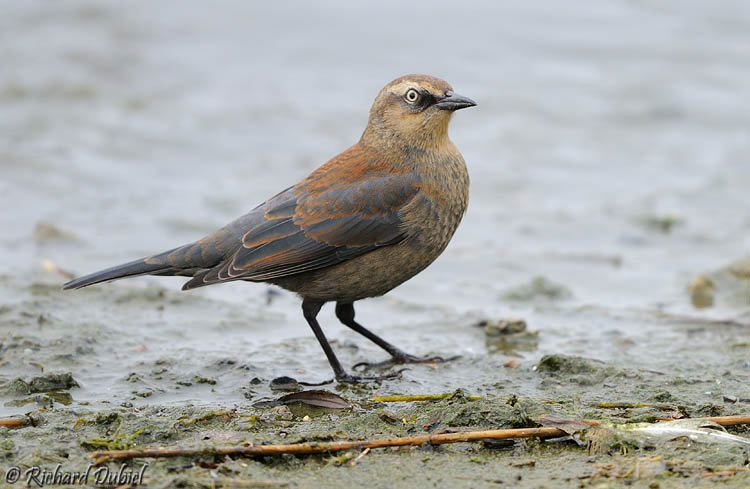
Rusty Blackbird
Photo: Richard Dubiel
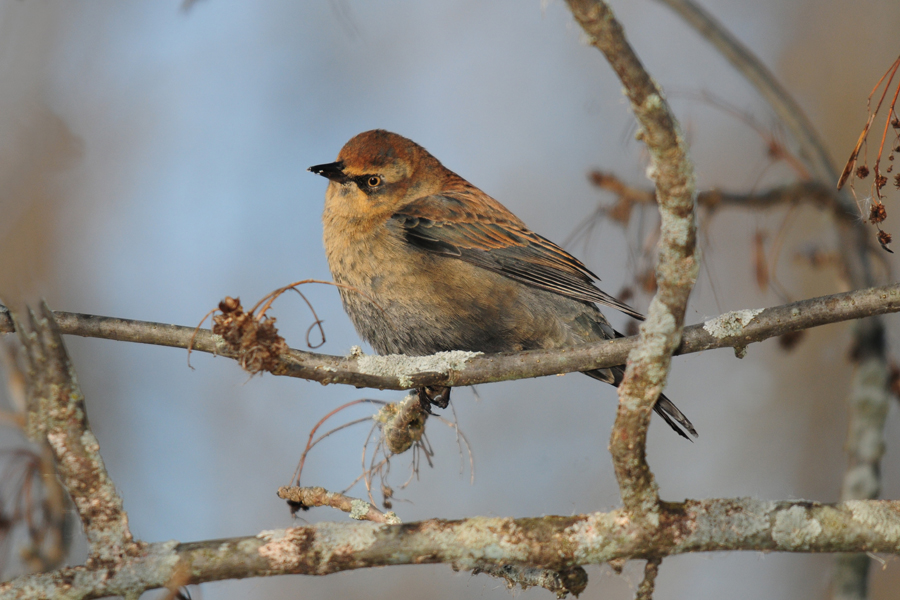
Rusty Blackbird
Photo: Sam Barone
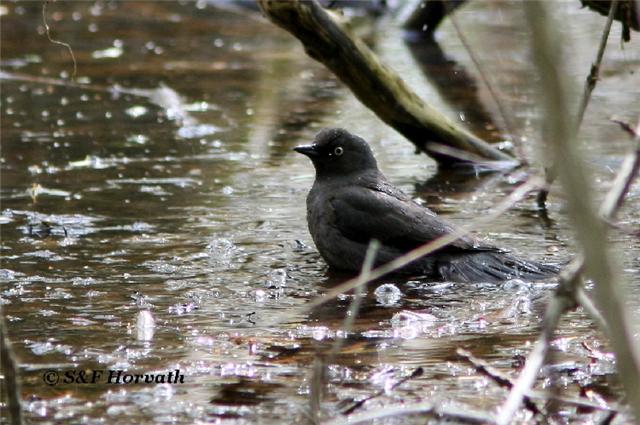
Rusty Blackbird
Photo: Sandra and Frank Horvath
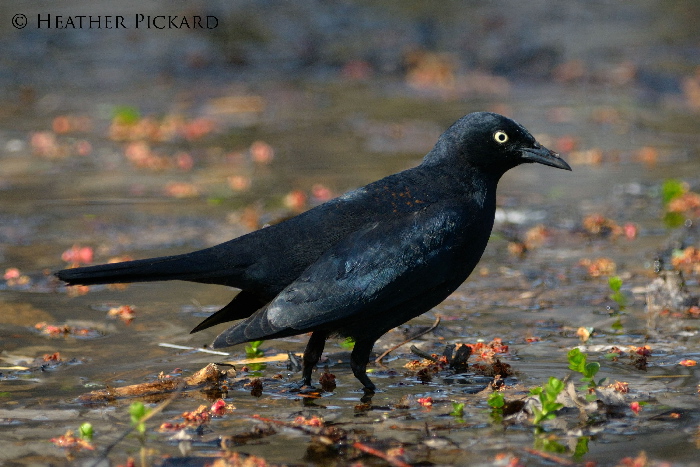
Rusty Blackbird
Photo: Heather Pickard
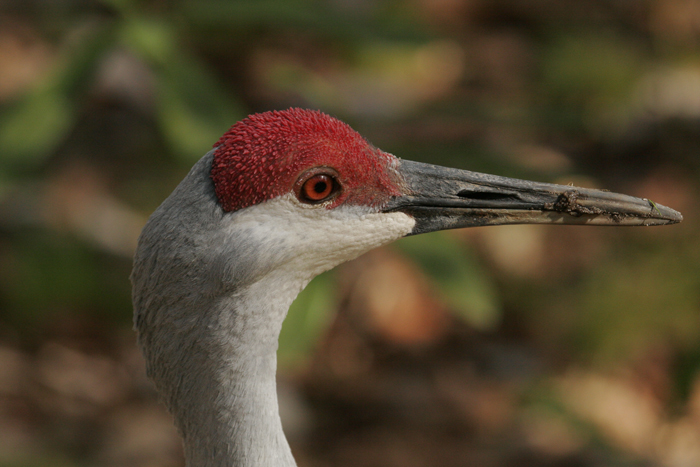
Sandhill Crane
Photo: Mark Peck
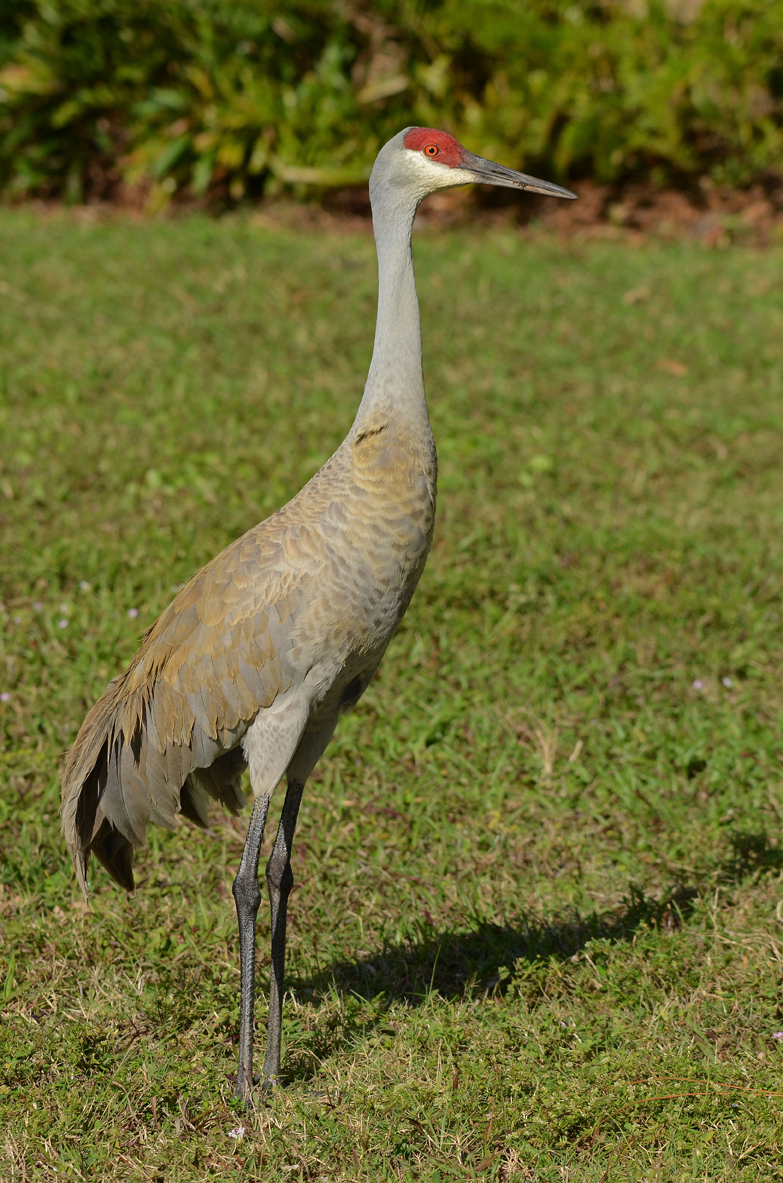
Sandhill Crane
Photo: Sam Barone
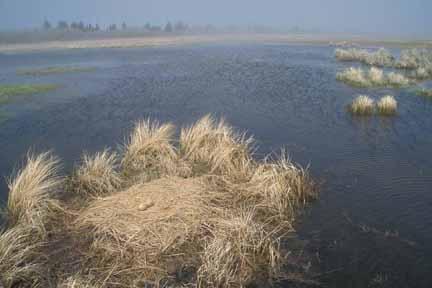
Sandhill Crane
Photo: Mark Peck
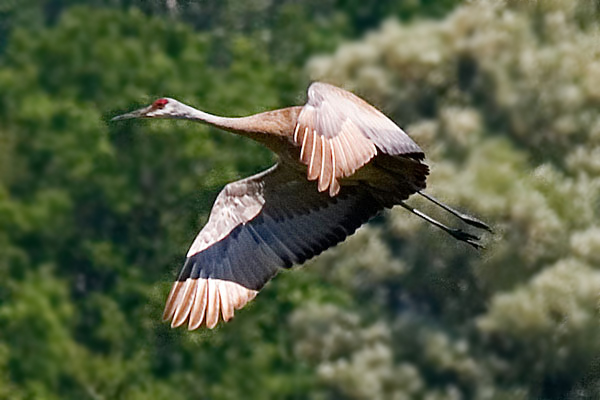
Sandhill Crane
Photo: John Millman
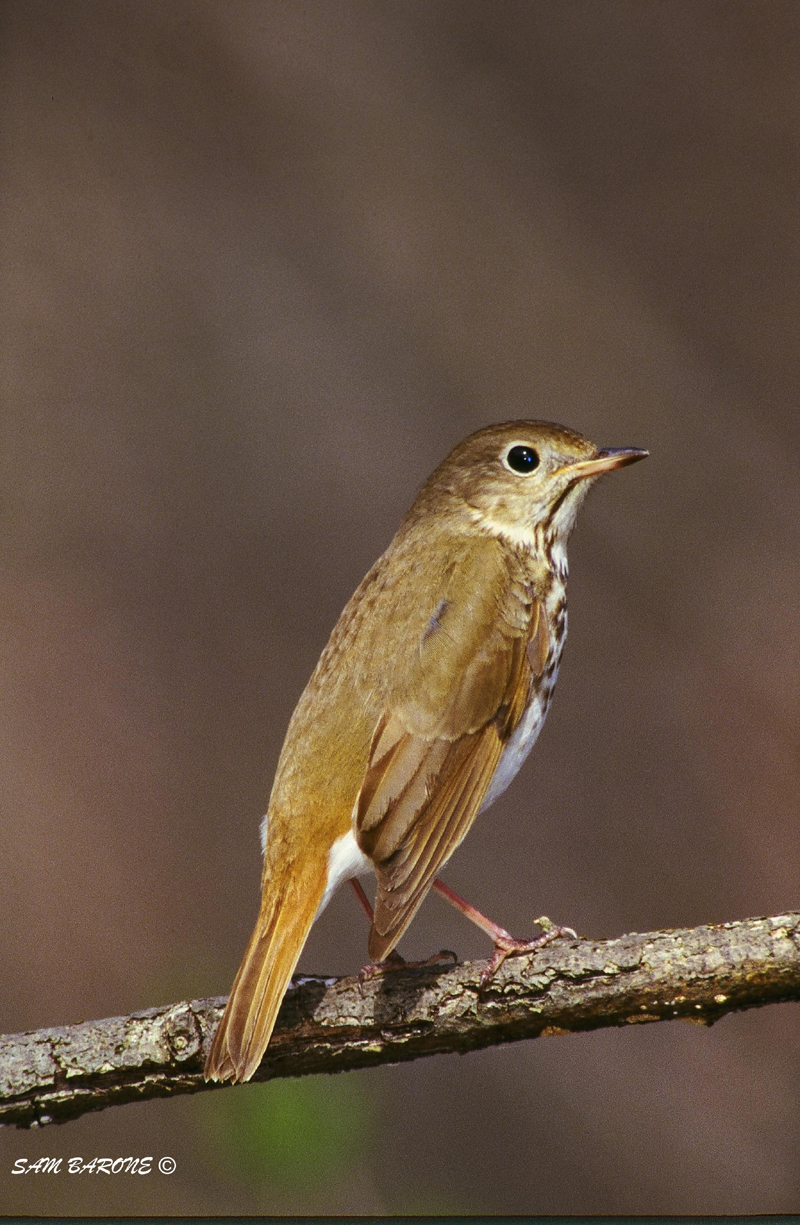
Hermit Thrush
Photo: Sam Barone
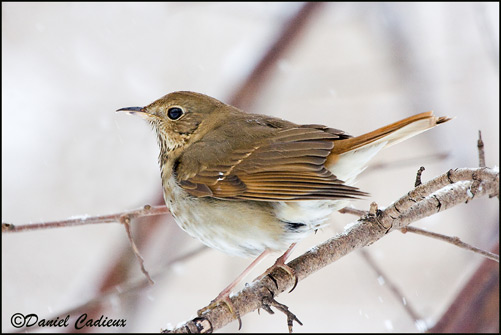
Hermit Thrush
Photo: Daniel Cadieux
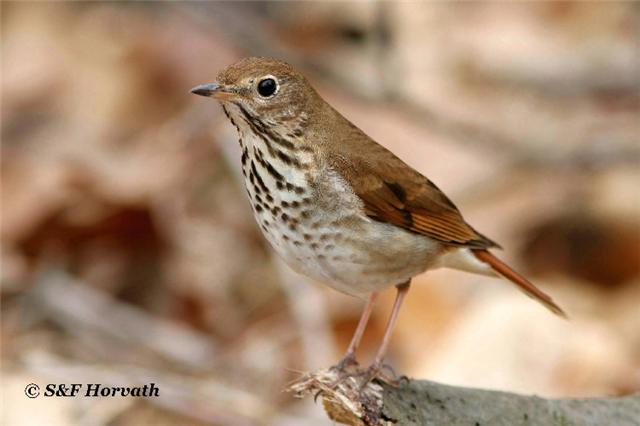
Hermit Thrush
Basic
Photo: Sandra and Frank Horvath
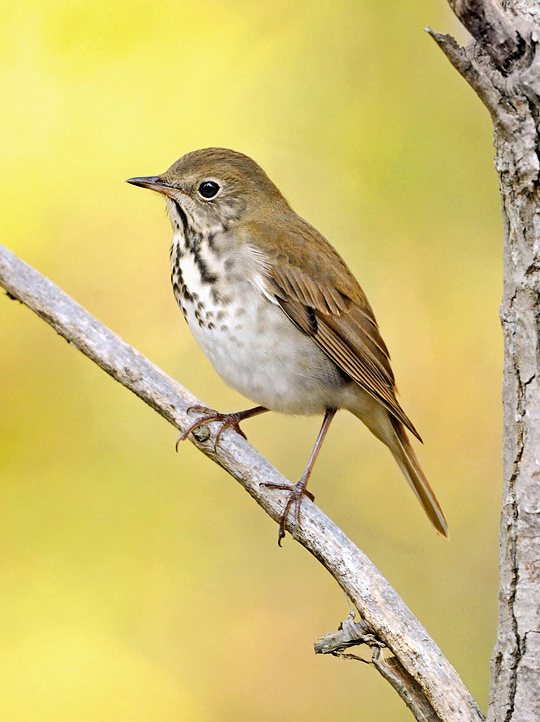
Hermit Thrush
Photo: Homer Caliwag
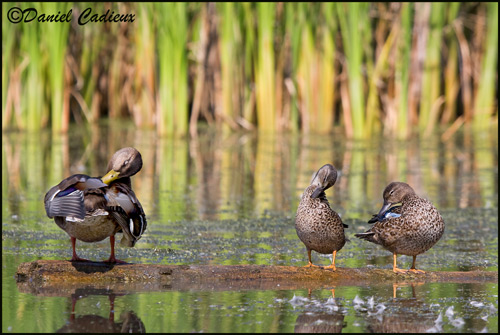
Blue-winged Teal
With Mallard left
Photo: Daniel Cadieux
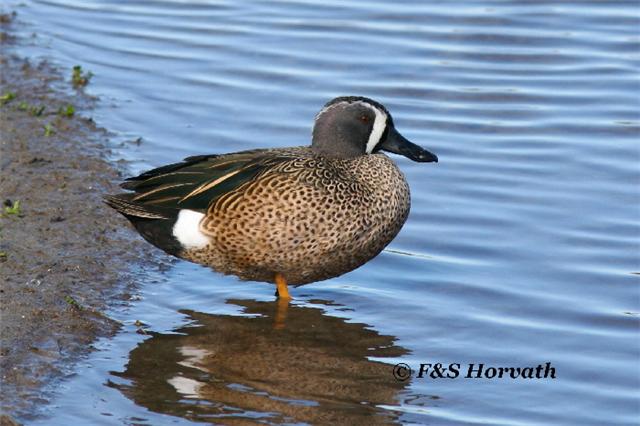
Blue-winged Teal
Photo: Frank and Sandra Horvath
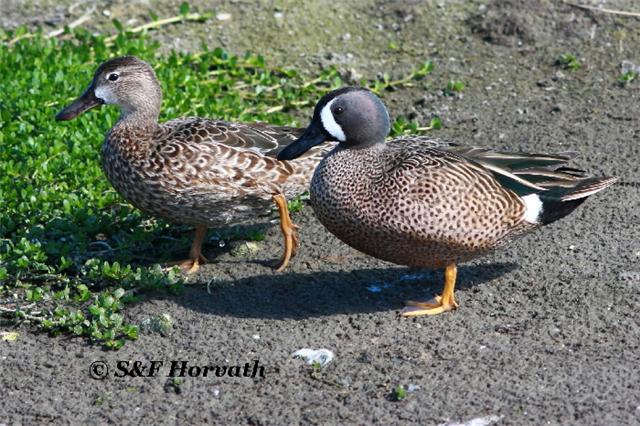
Blue-winged Teal
Photo: Sandra and Frank Horvath
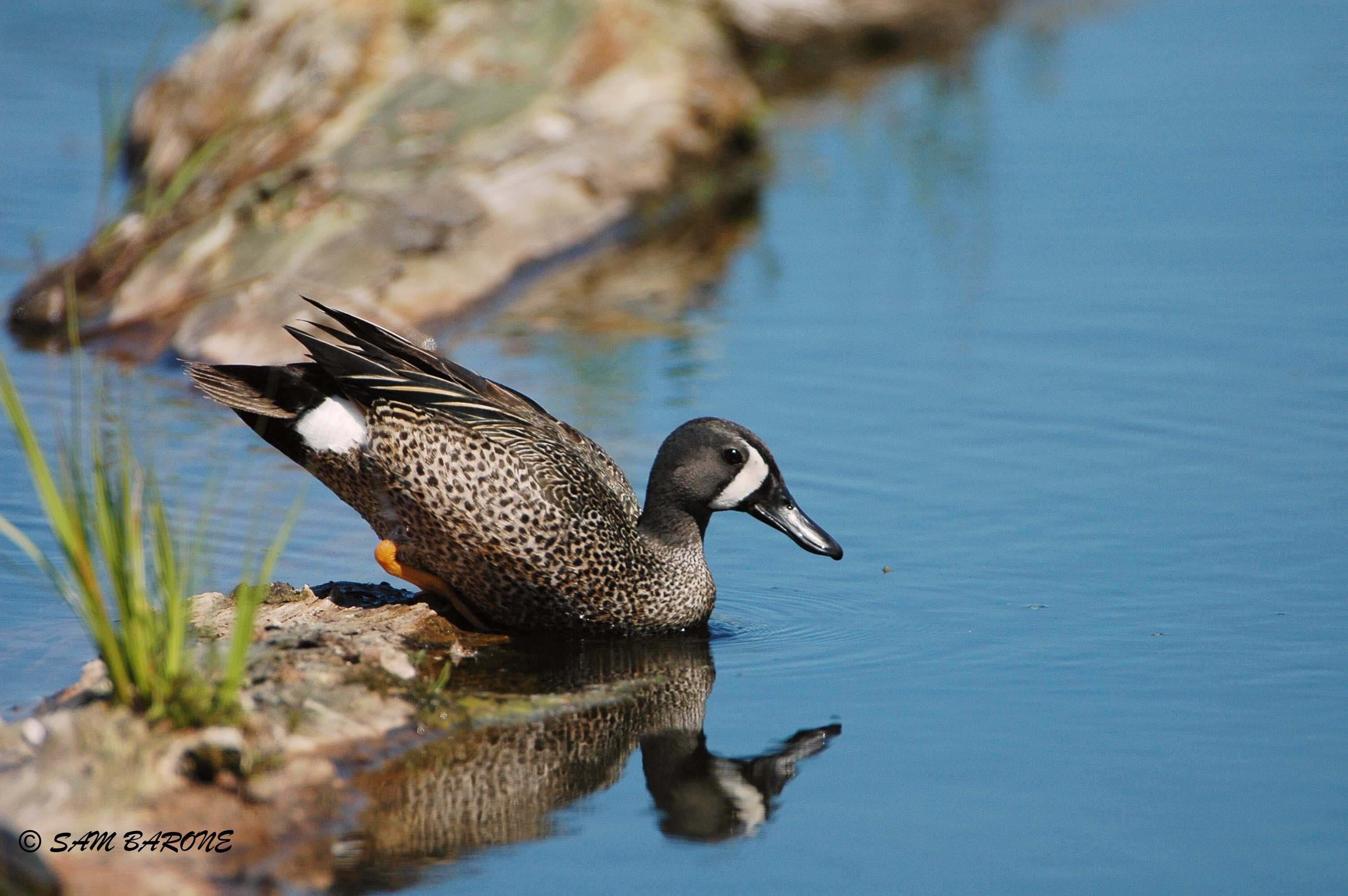
Blue-winged Teal
Photo: Sam Barone
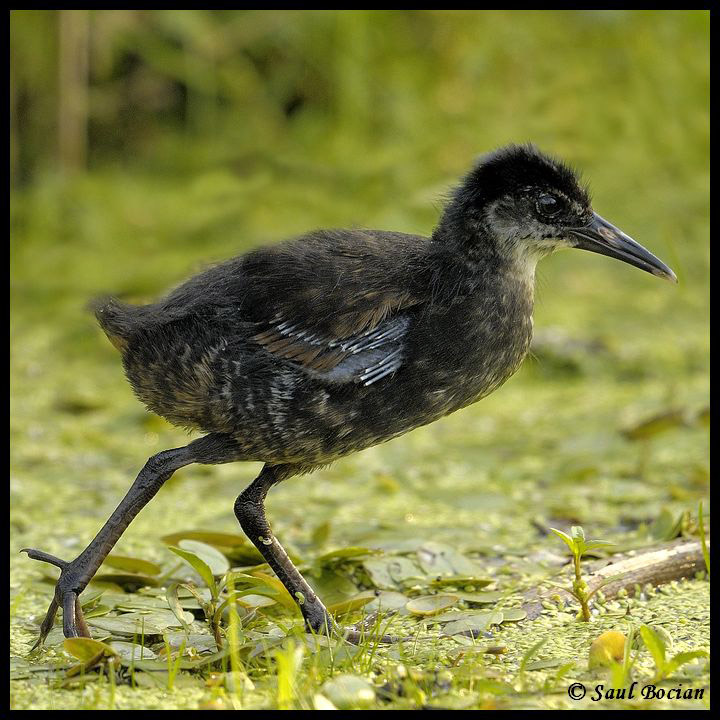
Virginia Rail
Juvenile
Photo: Saul Bocian
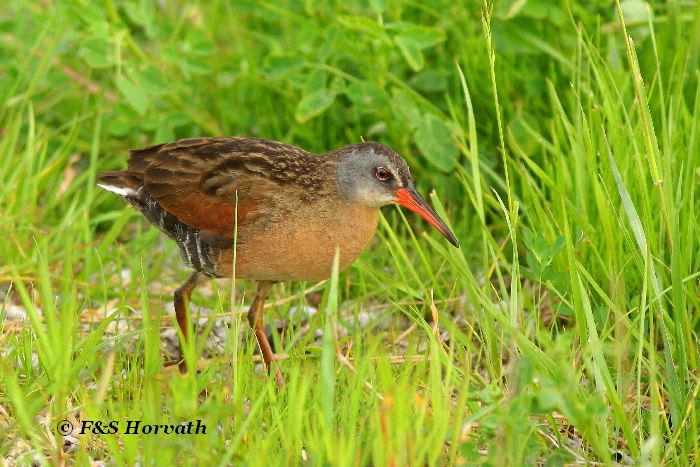
Virginia Rail
Photo: Frank and Sandra Horvath
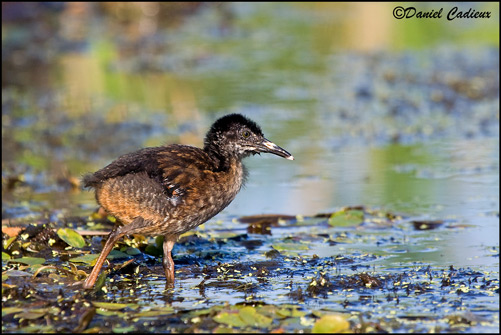
Virginia Rail
Nestling
Photo: Daniel Cadieux
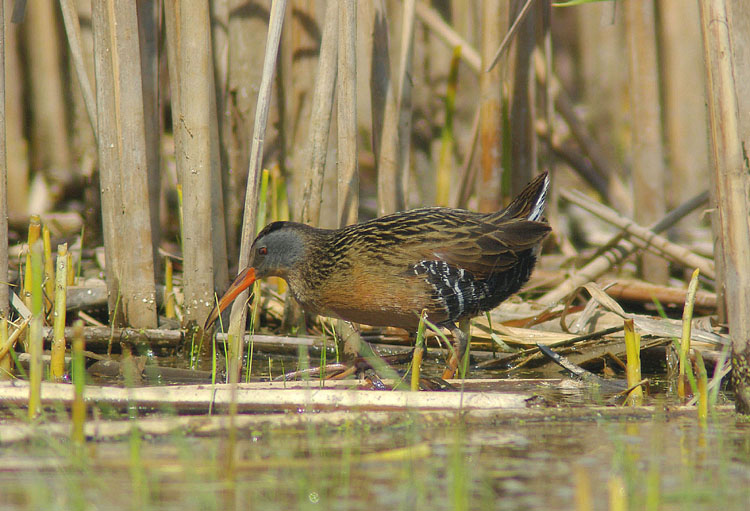
Virginia Rail
Photo: Barry Cherriere
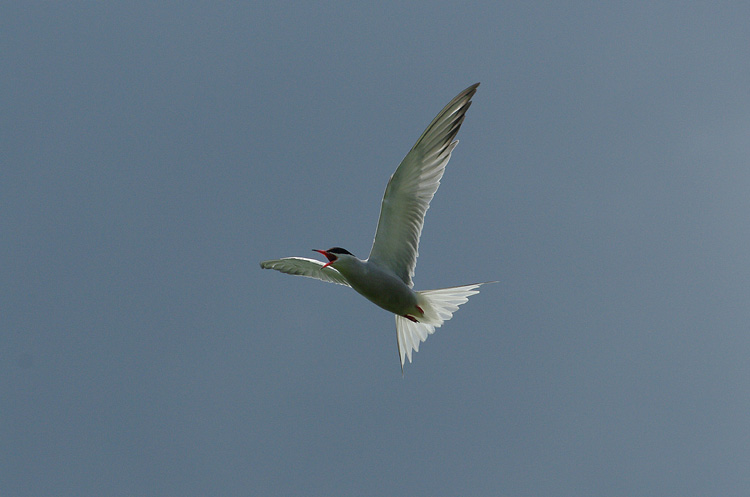
Common Tern
Photo: Barry Cherriere
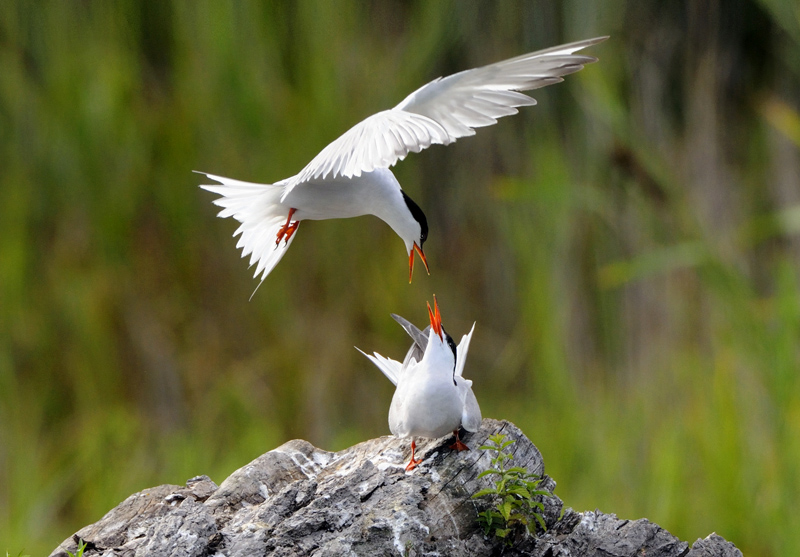
Common Tern
Photo: Homer Caliwag
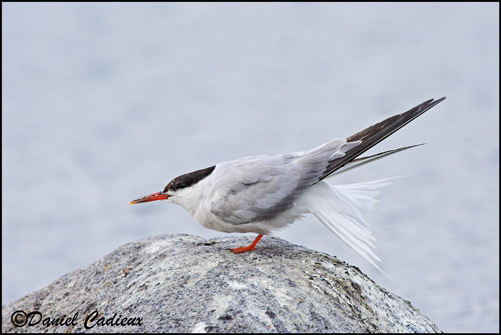
Common Tern
Photo: Daniel Cadieux
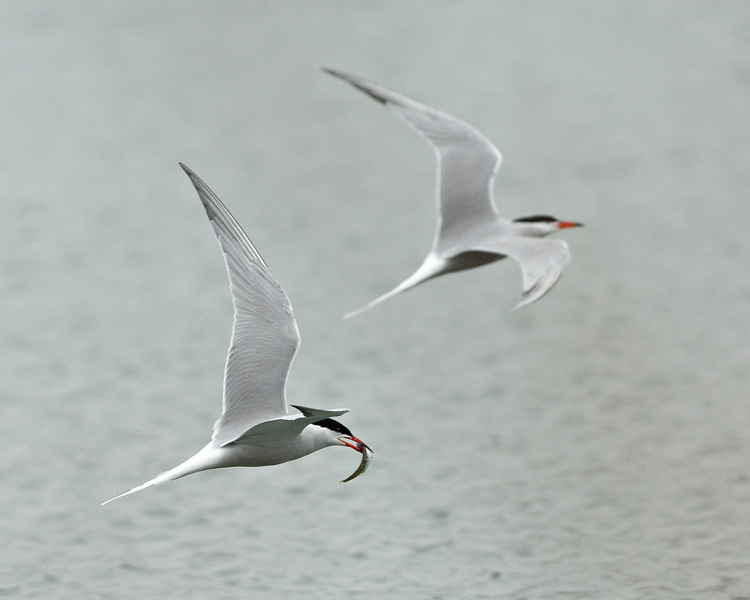
Common Tern
Photo: Max Skwarna
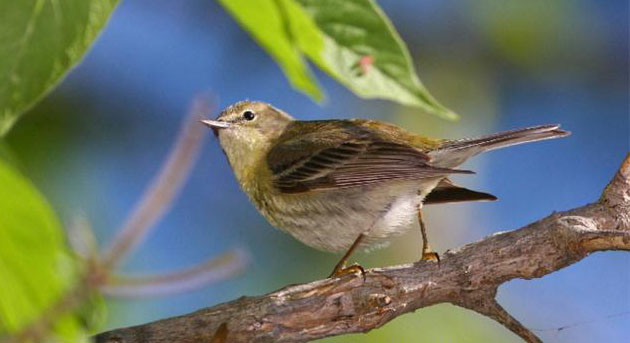
Pine Warbler
Basic
Photo: Sandra and Frank Horvath
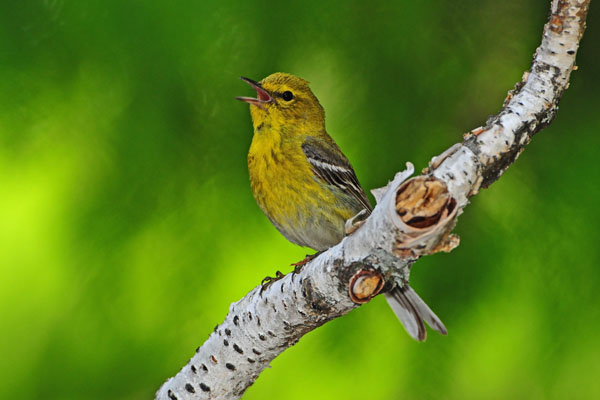
Pine Warbler
Photo: Sam Barone
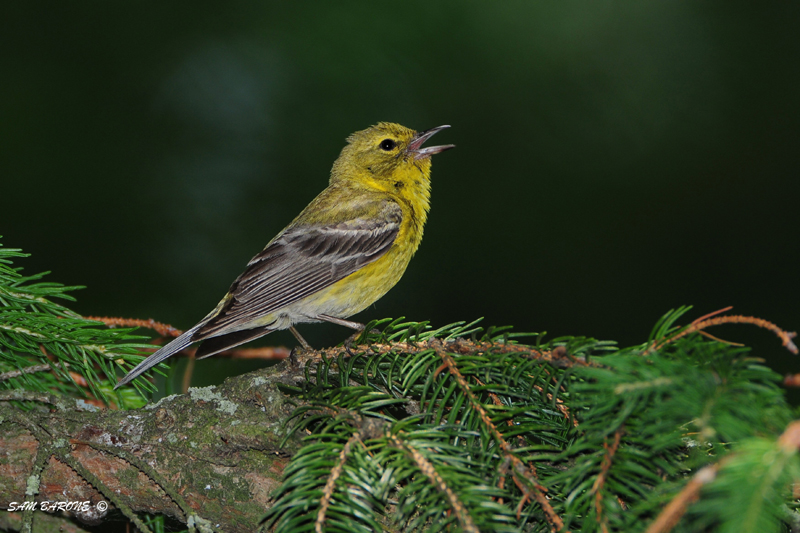
Pine Warbler
Photo: Sam Barone
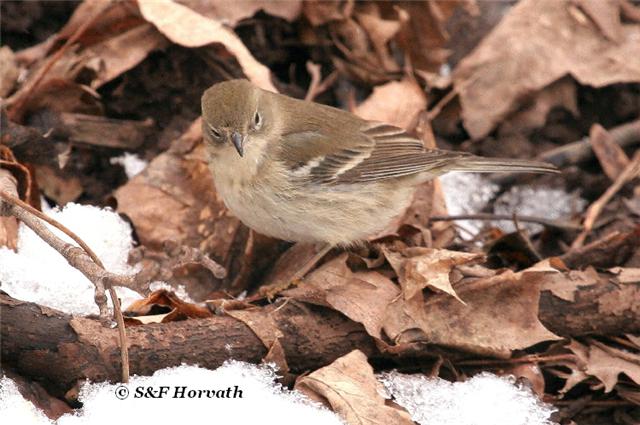
Pine Warbler
First basic female
Photo: Sandra and Frank Horvath
Carden AlvarTop
May 26 2024 (Sunday) Carden Alvar
Leader: Dawn Sherman, Jean Iron, Eric Baldo, Ron Tozer.
OFO Trip to Carden Alvar 26 May 2024 Welcome to the 31st OFO trip to Carden Alvar. This trip is dedicated in memory of Ron Pittaway who led the first OFO Carden Alvar trip in June 1992 and for the next 27 years. Ron discovered this amazing area while doing Loggerhead Shrike surveys for the Ontario Ministry of Natural Resources and he devoted many years to help preserve it. Many thanks to today's co-leaders Ron Tozer, Dawn Sherman and Eric Baldo. With 35 eager participants, we walked Wylie Road from the cabin to Sedge Wren Marsh. The open grasslands on the east side of Wylie and of Windmill Ranch on the west side, now part of Carden Alvar Provincial Park, were at their finest with wild blooming flowers: Prairie Smoke (pink), Paintbrush (orange) and Balsam Ragwort (yellow). Highlights included hearing and seeing Carden Alvar grassland specialties: Eastern Meadowlark, Bobolink, Upland Sandpiper, Eastern Towhee, Brown Thrasher, and Grasshopper, Savannah, Vesper, and Field Sparrows, and more. We watched and listened to Wilson's Snipe doing its beautiful display flight over us on Wylie Road. We could see the spread tail. Air passing through its outer spread tail feathers created the accompanying lovely winnowing sound. We heard and saw Orchard Oriole, rare for this area, and we had wonderful views of Eastern Bluebirds and Tree Swallows. At Sedge Wren Marsh we heard Sora, Virginia Rail, Alder Flycatcher and Ruffed Grouse drumming. The road was flooded so we could not continue farther north than the yellow rail bridge. Two American Bitterns performed a display flight over Sedge Wren Marsh while another was booming. We heard and saw 3 Black-billed Cuckoos. A relaxing picnic lunch at Kirkfield Liftlock energized us for the afternoon's sightings. Our target was the critically endangered Eastern Loggerhead Shrike. Carden Alvar is one of only two main core breeding areas in Ontario, and its population continues to decline. We had excellent scope views of two in their preferred habitat: open grassland with scattered hawthorn bushes and grazing cattle. We enjoyed seeing several herds of curious cattle on some ranches. We continued to Canal Lake and the causeway where we saw a Common Loon, Common and Caspian Terns, and Ospreys on their nest platforms. On Prospect Road, our highlights were Common Gallinule, 2 American Kestrels, a Double-crested Cormorant, several Ospreys and many Marsh Wrens chattering and perching on cattails. We ended our trip at about 4:35 p.m. when Ron Tozer tallied our 91 species for the day. Thank you everyone for your enthusiasm and good spotting. We spent a wonderful day experiencing the Carden Alvar at its finest. https://na01.safelinks.protection.outlook.com/?url=https%3A%2F%2Febird.org%2Ftripreport%2F245368%3Fview%3Dchecklists&data=05%7C02%7C%7Cd61b2a95b3f148eb74d008dc7ff30535%7C84df9e7fe9f640afb435aaaaaaaaaaaa%7C1%7C0%7C638525928941383449%7CUnknown%7CTWFpbGZsb3d8eyJWIjoiMC4wLjAwMDAiLCJQIjoiV2luMzIiLCJBTiI6Ik1haWwiLCJXVCI6Mn0%3D%7C0%7C%7C%7C&sdata=dDcsLYrzbOz3w%2F%2F0lvtF8b5Ziueo5KhoBPm2goaHhrg%3D&reserved=0
May 29 2022 (Sunday) Carden Alvar
Leader: Jean Iron, Ron Tozer, Dawn Sherman.
OFO's 29th annual field trip to the Carden Alvar was on Sunday, 29 May 2022. Our group tallied 89 species by walking Wylie Road in the morning and visiting other birding sites in the afternoon. We saw many of Carden's specialty birds including great views of Wilson's Snipe on a fence post and several displaying overhead, Common Nighthawk flying during the day, Golden-winged Warbler, Upland Sandpiper, Grasshopper, Vesper and Clay-colored Sparrows, and Loggerhead Shrike. We also found Bobolink, Eastern Meadowlark, Eastern Bluebird, Eastern Towhee, Brown Thrasher, Alder Flycatcher, Least Bittern, Black-billed Cuckoo, and many Marsh Wrens but no Sedge Wrens, which were absent even at Sedge Wren Marsh. Our day started with hearing and seeing 2 Pileated Woodpeckers, OFO's logo bird, and later seeing another fly over Sedge Wren Marsh. A Yellow-bellied Sapsucker tapping loudly on a Wylie Road fence post was a delight. Thirty years ago in 1992, Ron Pittaway led the first OFO trip to the Carden Alvar. Since then, we have come a long way in conservation. A large portion of the Alvar is now protected in Carden Alvar Provincial Park (includes Windmill and Cameron Ranches) and other protected properties owned by Couchiching Conservancy and The Nature Conservancy of Canada. Many thanks to co-leaders Ron Tozer, Eric Baldo, Dawn Sherman and Laura Tozer for making this a most memorable trip. Thank you to those who also willingly shared their scopes, spotted and helped everyone to hear, see and enjoy the birds. What a great team! Our day was super. Jean Iron Toronto ON
May 26 2019 (Sunday) Carden Alvar
Leader: Jean Iron.
Today's outing was OFO's 28th annual field trip to the Carden Alvar. In great weather, our group of 50 tallied 99 species by walking Wylie Road from the cabin to north of Sedge Wren Marsh in the morning and visiting other birding sites in the afternoon. We saw and/or heard many of the target birds including: Loggerhead Shrike, Grasshopper Sparrow, Upland Sandpiper, Eastern Towhee (lots), Brown Thrasher, Eastern Meadowlark, Bobolink, Eastern Bluebird, Alder and Willow Flycatchers, Sedge Wren, Marsh Wren, Least Bittern, Wilson's Snipe, Virginia Rail, Golden-winged Warbler, and Clay-colored Sparrow. We saw and heard Soras in several locations, possibly favoured by high water levels. An American Bittern flushed from beside the main road. From the parking area at Bluebird Box 10 we watched a Groundhog climb a tree to eat the buds. Butterflies were active, including many Red Admirals, Spring Azures and Black Swallowtails. Prairie Smoke, Carden Alvar's signature wildflower, was just starting to bloom on the alvar meadows. A large portion of the alvar is now protected by Carden Alvar Provincial Park (includes Cameron and Windmill Ranches) and other properties owned by The Nature Conservancy of Canada and the Couchiching Conservancy.
May 27 2018 (Sunday) Carden Alvar
Leader: Jean Iron.
OFO's 27th annual field trip to the Carden Alvar was on Sunday, 27 May 2018. Our group of 42 tallied 84 species and one rare hybrid warbler by walking Wylie Road in the morning and visiting other birding sites in the afternoon. We saw many of the target birds including superb views of Loggerhead Shrike, Golden-winged Warbler, Blue-winged Warbler, Lawrence's Warbler (rare Blue-winged x Golden-winged hybrid), Grasshopper Sparrow and Clay-colored Sparrow. We also found American Bittern, Upland Sandpiper, Wilson's Snipe, Virginia Rail, Sora, Alder Flycatcher, Willow Flycatcher, Sedge Wren, Marsh Wren, Eastern Meadowlark, Bobolink, Brown Thrasher, Eastern Towhee, Eastern Bluebird, Field Sparrow. We saw and heard several Black-billed Cuckoos probably attracted to the outbreak of Eastern Tent Caterpillars. Water Snakes put on a good show in the Sedge Wren Marsh on Wylie Road and at Prospect Road Marsh, and we saw a Porcupine in a tree. Prairie Smoke, Carden Alvar's signature wildflower, carpeted the alvar meadows. A large portion of the alvar is now protected by Carden Alvar Provincial Park (includes Cameron and Windmill Ranches) and other protected properties owned by The Nature Conservancy of Canada and The Couchiching Conservancy.
May 28 2017 (Sunday) Carden Alvar
Leader: Jean Iron.
Today's outing was OFO's 26th annual field trip to the Carden Alvar. In ideal weather, our group of 37 tallied 90 species by walking Wylie Road in the morning and visiting other birding sites in the afternoon. We saw many of the target birds including superb views of Loggerhead Shrike, Golden-winged Warbler, Grasshopper Sparrow and Clay-colored Sparrow. We also found 3 American Bitterns, Least Bittern, Upland Sandpiper, Wilson's Snipe, Virginia Rail, Alder Flycatcher, Willow Flycatcher, Sedge Wren, Marsh Wren, Eastern Meadowlark, Bobolink, Brown Thrasher, Northern Mockingbird, Eastern Towhee, Eastern Bluebird, Pileated Woodpecker, and 2 Great Egrets in the former Great Blue heronry on Shrike Road South. Tent Caterpillar nests are a common sight on the cherry trees, and we saw several Black-billed Cuckoos, so it looks like a good year for them. Water Snakes put on a good show in the Sedge Wren Marsh on Wylie Road, and we watched a very young Porcupine. Butterflies were active, including a Monarch. Prairie Smoke, Carden Alvar's signature wildflower, carpeted the alvar meadows.
May 29 2016 (Sunday) Carden Alvar
Leader: Jean Iron.
Today's outing was OFO's 25th annual field trip to the Carden Alvar. Ron Pittaway led the first Carden field trip in 1992. Today's group of 37 birders tallied 76 species. We saw many of the target birds including superb views of Loggerhead Shrike, Sedge Wren, Upland Sandpiper, Grasshopper Sparrow and Clay-colored Sparrow. We also found Wilson's Snipe, Black-billed Cuckoo, Alder and Willow Flycatchers, Golden-winged Warbler (heard), Marsh Wren, Eastern Meadowlark, Bobolink, Brown Thrasher, Eastern Towhee and Eastern Bluebird. Two spectacular wildflowers, Prairie Smoke and Indian Paintbrush, carpeted the alvar meadows. Alvars are globally rare habitats of limestone or dolomite bedrock at the surface (pavement) or covered with thin soils and a sparse vegetation of lichens, mosses, herbs/forbs, shrubs and sometimes trees. Vegetation is restricted by shallow soils and extremes of spring wetness and summer drought. The Carden Alvar formed near the end of the last Ice Age when huge torrents of glacial meltwater washed away much of the sand and gravel (overburden) covering the bedrock. A large portion of the alvar is now protected by Carden Alvar Provincial Park (includes Cameron and Windmill Ranches) and other protected properties owned by The Nature Conservancy of Canada and the Couchiching Conservancy.
May 31 2015 (Sunday) Carden Alvar
Leader: Jean Iron.
About 60 participants enjoyed OFO's 24th annual birding trip to the Carden Alvar. It didn't rain all day and temperatures were fine for walking and birding. Today we recorded a respectable 86 species including many of Carden's specialty birds. Highlights were Loggerhead Shrike, Sedge Wren, Upland Sandpiper, Vesper Sparrow, Grasshopper Sparrow, Clay-colored Sparrow, Eastern Meadowlark, Bobolink, Eastern Bluebird, Brown Thrasher and Eastern Towhee. We also saw American Bittern, Least Bittern, Virginia Rail, Common Gallinule, Green Heron, Alder Flycatcher, Wilson Snipe and heard several Soras. A Gray Tree Frog on the blind on Wylie Road was a great attraction. The alvar meadows were spectacular with Prairie Smoke and Balsam Ragwort. "The Carden Alvar is Ontario's second most important birding destination" according to John Riley (2013) in his recent book "The Once and Future Great Lakes Country - An Ecological History" published by McGill-Queen's University Press. Alvars are globally rare habitats of limestone or dolomite bedrock at the surface (pavement) or covered with thin soils and a sparse vegetation of lichens, mosses, herbs, shrubs and sometimes trees, but never forming a closed canopy. Vegetation is restricted by shallow soils and extremes of spring wetness and summer drought. The alvar formed at the end of the last Ice Age when huge torrents of meltwater from glacial Lake Algonquin (a super-sized Lake Huron) spilled through the Kirkfield Outlet washing away glacial deposits leaving the flat limestone plain that we now know as the Carden Alvar. Directions: [Birding Guide and Map to Carden Alvar](http://www.ofo.ca/site/page/view/articles.cardenalvar) I especially thank Ron Tozer, Ron Pittaway, Eleanor Beagan, Paul Prior and many others for spotting and helping participants to find and enjoy the birds.
June 1 2014 (Sunday) Carden Alvar
Leader: Jean Iron.
About 60 participants enjoyed OFO's 23th annual birding trip to the Carden Alvar. The first trip in 1992 was led by Ron Pittaway who assisted with today's trip. Today we recorded a respectable 90 species including many of Carden's specialty birds such as Loggerhead Shrike, Sedge Wren, Upland Sandpiper, Clay-colored Sparrow, Golden-winged Warbler and some of the group saw a Blue-winged Warbler and a hybrid Brewster's Warbler. A Red-headed Woodpecker along Wylie Road was a nice treat. We also saw and heard Alder and Willow Flycatchers, Wilson Snipe, saw an American Bittern, and heard Virginia Rail and Sora.
A number of young birders pointed out many of the good birds by sight and sound to the group - they included Adam, Ben, Henrique, Riley and Tim.
Eastern Loggerhead Shrike Update: Wildlife Preservation Canada (WPC) reports that there are only 10 breeding pairs in Ontario this year, which include 6 pairs on the Carden Alvar and 4 pairs elsewhere (mainly Napanee area) plus several unmated birds on territories. The captive breeding program is going well and WPC expects to do a large release of young birds this year to supplement the population.
Eastern Bluebird Update: Some birders have remarked that they aren't seeing many bluebirds this year. Herb Furniss who operates the Carden Bluebird Trail reports that bluebirds are doing fine but nestings have been later than average. Herb has 18 active nest boxes with 39 eggs and 44 young.
"The Carden Alvar is Ontario's second most important birding destination" according to John Riley (2013) in his recent book "The Once and Future Great Lakes Country - An Ecological History" published by McGill-Queen's University Press. Alvars are globally rare habitats of limestone or dolomite bedrock at the surface (pavement) or covered with thin soils and a sparse vegetation of lichens, mosses, herbs, shrubs and sometimes trees, but never forming a closed canopy. Vegetation is restricted by shallow soils and extremes of spring wetness and summer drought. The alvar formed at the end of the last Ice Age when huge torrents of meltwater from glacial Lake Algonquin (super-sized Lake Huron) spilled through the Kirkfield Outlet washing away glacial deposits (till) leaving the flat limestone plain which we now call the Carden Alvar.
May 26 2013 (Sunday) Carden Alvar
Leader: Jean Iron.
Regardless of the cool temperature and wind making birds harder to find, today's (26 May) trip attended by 58 participants was a success with a total of 79 species. Best birds were:
Loggerhead Shrike at bluebird box 10 seen on both sides of Wylie Road.
Upland Sandpiper on a rock along Shrike Road.
Clay-colored Sparrow on Prospect Road. We had the best close views ever on a Carden trip. It was singing too.
Least Bittern seen close and well in flight at the cattail marsh south of Canal Lake.
Virginia Rail viewed at Prospect Marsh.
Other birds seen or heard included Red-shouldered Hawk, Merlin, Cliff Swallow, Northern Rough-winged Swallow, Alder Flycatcher, Brown Thrasher, Golden-winged Warbler, Eastern Meadowlark, Bobolink and Eastern Towhee.
Alvars are globally rare habitats. An excellent brochure titled "Experience the Carden Alvar on Foot" is available at the viewing blind near bluebird box 10 on Wylie Road. A map shows the trails for you to enjoy the alvar. Another map shows the properties acquired to preserve the Carden Alvar with more in the works, which is the major conservation story of the 21 Century. We anticipate that the Cameron and Windmill Ranches will soon be designated Carden Alvar Provincial Park giving the alvar legal protection under the Provincial Parks Act (Ontario). Ontario has one of the best park systems, which includes world famous parks such as Polar Bear, Quetico, Algonquin, and soon Carden Alvar.
I thank Ron Pittaway, Ron Tozer, Eleanor Beagan and others for helping enthusiastic participants to see birds.
May 27 2012 (Sunday) May 27 2012 (Sunday) Carden Alvar
Leader: .
The OFO group had excellent and lengthy views of a Loggerhead Shrike near bluebird box 10 on Wylie Road, which was the highlight of the trip on Sunday (May 27). There are now only about 11 pairs on the Carden Alvar of this critically endangered migrans subspecies in Canada. In the morning we walked north on Wylie Road to the Sedge Wren Marsh. Many Brown Thrashers, Baltimore Orioles, Bobolinks and Eastern Meadowlarks were singling loudly along the route. We also had a singing Grasshopper Sparrow perched on a mullein stalk and Eastern Towhee. We missed Sedge Wren for the first time in many years.
After lunch at the Lift Lock, we viewed an adult Great Horned Owl with two young in an old Great Blue Heron's nest in the small active heronry on the east side of Shrike Road south of McNamee Road. Seven Upland Sandpipers were along Shrike Road. At marshes adjacent Prospect Road south of Highway 48 we had Blue-winged Teal, Virginia Rail and Marsh Wren. We ended the day with Green Heron and Clay-colored Sparrow. Other highlights for the day were seeing both Alder and Willow Flycatchers singing their distinctive songs. Carden's signature wildflower, Prairie Smoke, covered the alvar meadows.
May 29 2011 (Sunday) Carden Alvar
Leader: Jean Iron.
Sunday’s OFO field trip to the Carden Alvar easily found most of the target birds including Loggerhead Shrike at three locations, Upland Sandpiper, Sedge Wren, Golden‐winged Warbler, Clay‐colored Sparrow at four locations and Grasshopper Sparrow. In the morning we walked north along Wylie Road to the Sedge Wren Marsh. Birds were active in the periods of warm fine rain which wasn't a problem. At the Sedge Wren Marsh we heard American Bittern, Sora and Virginia Rail, and heard and saw Sedge Wren, Marsh Wren, Alder Flycatcher and Black‐billed Cuckoo. After a picnic lunch at the Kirkfield Lift Lock, we birded Shrike Road south of McNamee Road where we saw two Loggerhead Shrikes. We later saw a fairly close Loggerhead Shrike just north of the parking lot at Cameron Ranch. The ranch is a reliable spot to see a shrike, which is difficult bird to find along Wylie Road this year. We were very lucky to see two Least Bitterns in a cattail marsh south of Canal Lake. At marshes along Prospect Road south of Highway 48 we added Common Moorhen, Pied‐billed Grebe, Sora, Virginia Rail, Marsh Wren and Willow Flycatcher.
We recorded 90 species and the temperature was a pleasant 23 C when the trip ended about 4 p.m. Selected other birds observed included Wilson’s Snipe, Bobolink, Eastern Meadowlark, Eastern Towhee, Brown Thrasher, Eastern Bluebird, Cliff Swallow, Field Sparrow, and a migrant male Blackpoll Warbler. Carden’s signature alvar wildflower, Prairie Smoke, is in full bloom.
May 30 2010 (Sunday) Carden Alvar
Leader: Jean Iron.
Forty‐five OFO members and guests found many of Carden’s specialty birds on today’s annual field trip. Most target species such as the Loggerhead Shrike and Sedge Wren were seen.
Loggerhead Shrike: We saw a distant Loggerhead Shrike in the morning on the east side of Wylie Road between bluebird boxes 3 and 7 a little north of the large White Birch. This year shrikes are not being seen west of bluebird box 10. After a picnic lunch at the Kirkfield Lift Lock, we had much better views of a Loggerhead Shrike on south side of McNamee Road opposite the gated unnamed road running north, two concessions east of Wylie Road. Recently a shrike was seen on the Cameron Ranch from the parking lot. Scan the tops of hawthorns and dead branches for shrikes in areas grazed by cattle. A scope is a big help.
Wrens: Several Sedge Wrens were singing at Sedge Wren Marsh and we had excellent views of two birds. Best area is the northeast corner along the road where grasses and sedges predominate. Caution: There was a Marsh Wren singing from the cattails just west of the marsh bridge. Later we saw and heard many Marsh Wrens at the Prospect Road Marsh. House Wrens were singing at several spots along Wylie Road.
Upland Sandpiper: We saw and heard several along Wylie and McNamee Roads. Watch for its flickering wing beats and listen for its curlew‐like song and calls.
Wilson’s Snipe: A few snipe were winnowing in flight and calling at wet areas along Wylie Road.
Rails: Both Sora and Virginia Rail are more common this year. The group heard both at the Sedge Wren Marsh and both at Prospect Marsh where we had close views of a Virginia Rail. We haven‐t heard Yellow Rails at the Sedge Wren Marsh this May. They may not like the slightly higher water level in the marsh this year caused by a beaver dam, but the wetter conditions seem to be favouring Soras and Virginia’s.
American Bittern: Two were seen briefly in flight at the Sedge Wren Marsh.
Osprey: Three nests with adults on them were observed at Canal Lake.
Black‐billed Cuckoo: At least two birds were seen and heard. Cuckoos and Baltimore Oriole numbers are up this year associated with a moderate outbreak of Eastern Tent Caterpillars. Cuckoos and orioles are among the few birds that eat the hairy larvae. Just how cuckoos and orioles know that there are abundant caterpillars and move into Carden is unknown.
Flycatchers: One singing Alder Flycatcher was observed at the Sedge Wren Marsh. Least Flycatchers were singing at many spots and are more common this year. No Willow Flycatchers were heard. We also saw Eastern Kingbirds, but numbers seem down. We had a close view of a Great Crested Flycatcher and heard others.
Golden‐winged Warbler: The group had great views of a singing male at the top of a dead tree along Wylie Road south of the Sedge Wren Marsh.
Grasshopper Sparrow: We saw several singing birds perched on rocks and shrubs along Wylie Road. A scope is helpful.
Clay‐colored Sparrow: We heard and eventually saw a singing bird on the west side of Prospect Road about 2 km south of Eldon Station Road.
Other good sightings today included two close Common Loons in breeding plumage on Canal Lake; calling Common Ravens lent a northern flavour to the alvar; Eastern Bluebirds; several singing Brown Thrashers; two singing Field Sparrows; a close Eastern Towhee sang and called beside Wylie Road, but it stayed out of sight in the thickets; and many Eastern Meadowlarks were seen and heard among the group’s 70 bird species.
Non‐bird sightings included a large basking Blanding’s Turtle and a Bullfrog at the Great Blue Heron colony pond east of Shrike Road and south of McNamee Road. Large areas of Prairie Smoke, Carden’s signature wildflower, and Balsam Ragwort brightened the alvar meadows.
Many of the group remarked that most birds were seen very well today.
It was a pleasure having Sean Smith, Visitor Experience Manager of Trent Severn Waterway, Parks Canada, on the outing. I thank Ron Pittaway, Ron Tozer, Eleanor Beagan, and Rick and Kim Brown for ensuring that the group had great views of birds.
14 June 2009 Carden Alvar
Leader: Dan Bone.
More than 40 Ontario Field Ornithologist members, some from as far afield as Ottawa and Woodstock, birded the Carden Area today in hot (for this year), sunny weather . Despite a relatively late start at 9 a.m. we recorded 75 species including most of the must‐have birds. We had decent views of Eastern Loggerhead Shrike through scopes; some good chances at Sedge Wren and Wilson's Snipe and excellent views of Grasshopper Sparrow. We only heard Upland Sandpiper in the morning but we did much better on a return trip later ( see below). We had Field Sparrow; some of us heard Vesper Sparrow but no one heard or saw a Clay‐colored Sparrow despite much effort. Eastern Towhees were calling all around us but we could only glimpse them.
After Wylie Road and lunch at the Kirkfield Locks we went north again to the Cameron Ranch to check out the new parking lot and trail. The ranch was very quiet although a distant shrike and half a Common Raven were spotted. We heard Sandhill Crane. We didn't have time to walk the trail‐ that could be a trip all by itself. Driving south to Prospect Marsh by way of Canal Lake we saw Osprey on the nest and gundog retriever trials in the small, posted wetland just south of County Road 48. Pity the poor, nesting Pied‐bill Grebes. We parked in the new Prospect Marsh parking lot, a long walk from the bridge, but were rewarded with "crippling" views of a family of Virginia Rails and a very cooperative American Redstart singing and posing out in the open over the road as we made our way to the main marsh. The new parking lot could accommodate only some of our 12 cars.
At the main marsh we saw a male Northern Harrier delivering food to what we assumed to be a nest out and down in the far reaches of the marsh. Most of us saw and heard Marsh Wrens; an American Bittern gave us a grand fly‐by and we heard Sora Rail and Moor Hen, two of which were seen briefly flying above the cattails ( by a lucky few). Speaking of luck, while a birder from another party was playing a recording of Least Bittern and while all eyes and ears strained in that direction a real Least Bittern flew from the marsh further up and crossed the road behind us. It was seen by only two members of our party who happened to be looking at a beaver (or something). Some of us think the Prospect birds are on to us with all our electronic gadgets that play the same bird from Louisiana singing the same song over and over.
At 3 p.m. most of our group said good‐bye but some 10 or 12 die‐hards agreed to return to Wylie Road to get better views of Upland Sandpiper and Golden‐winged Warbler and to try again for the elusive Clay‐colored Sparrow. They were amply rewarded even though the sparrow did not show. We had excellent views of a Blue‐winged Warbler and a Golden‐winged Warbler plus glimpses of a Chestnut‐sided Warbler and heard‐only Nashville Warbler and Ovenbird. We saw 6 or seven Upland Sandpipers, some very close on posts, and someone reported the other half of the Common Raven.
Other good birds: Swamp Sparrow, Willow Flycatcher, Indigo Bunting and Purple Finch.
Thanks to David Milsom and Eleanor Beagan who had my back the whole trip long and that fellow from Toronto whom I hope to meet again and who helped me keep the tally properly updated.
3 June 2007 Carden Alvar
Leader: Ron Pittaway.
The Carden Alvar is southern Ontario’s birding hotspot in late spring and early summer for grassland and scrubland specialties. Today, 44 OFO birders tallied a respectable 84 species in ideal weather (no rain, light breeze, no bugs) with pleasant temperatures. Best birds were a pair of Loggerhead Shrikes behind bluebird box 10, several Upland Sandpipers, Sedge Wrens, six Grasshopper Sparrows but only one Vesper Sparrow, singing Alder and Willow Flycatchers, and a singing Golden‐winged Warbler. The alvar meadows along Wylie Road were colourful with Prairie Smoke, Balsam Ragwort, Indian Paintbrush and Field Chickweed. We lunched at the Kirkfield Lift Lock. After lunch we birded the wetlands along Prospect Road where we had a pair of Green Herons, Marsh Wrens, Virginia Rail, Sora (a rail), Common Moorhen (also a rail) and a Clay‐colored Sparrow.
Mammals: The group saw a Porcupine in a tree along Wylie Road spotted by Jen Lyon. As I was putting together this post, Bob Healey emailed me to say that, “Shortly after leaving the OFO outing to the Carden Alvar today, a large Black Bear crossed the road. It was quite large and in excellent condition with a thick, black, glossy coat.”
Thanks to co‐leaders Ron Tozer and Jean Iron whose presence always guarantees that OFO field trips are a big success. Ron and I led our first OFO trip to the Carden Alvar in June 1991.
Reported by Ron Pittaway.
4 June 2006 Carden Alvar
Unknown to most birders until recently, the Carden Alvar is now Ontario’s birding hotspot in late spring and early summer for grassland and shrubland specialties. Today, 51 OFO birders enjoyed birding the Carden Alvar. We tallied a respectable 81 species in perfect weather (no rain, no humidity, a sun/cloud mix, light breeze, and no bugs) with pleasant temperatures that reached 22C or 72F. Best birds were an endangered Loggerhead Shrike in the scope, several Upland Sandpipers in display flights and calling, singing Sedge Wren in scope, Grasshopper Sparrow and singing Vesper Sparrow in scope, singing Alder Flycatcher in scope, Willow Flycatcher, and a singing Golden‐winged Warbler. Prairie Smoke, Carden’s signature wildflower, was at its peak, covering the meadows. We lunched at the Kirkfield Lift Lock where we had great views of a Green Heron in flight and perched in a dead tree. After lunch we toured Prospect Marsh where we heard Marsh Wrens and heard and saw a Virginia Rail. Along the causeway over Canal Lake, we saw an immature Bald Eagle and at times watched up to six Ospreys in view at one time. This must be one of the largest concentrations of Ospreys in Ontario.
Thanks to co‐leader Ron Tozer whose knowledge and enthusiasm of birds always guarantees that OFO trips are a big success. Ron and I led our first trip to Carden in June 1991. I’m grateful to the many experienced birders who helped new birders find lifers and year birds: Maris Apse, Eleanor Beagan, Dave Brewer, Sid and Dorothy Hadlington, Wendy Hunter, Derek and Jennifer Lyon, Naish McHugh, and Dave Milsom (OFO Trip Coordinator). Three Ottawa birders added considerable spirit to the group. We had a fine day’s birding.
Reported by Ron Pittaway.
5 June 2005 Carden Alvar
Leader: Ron Pittaway.
Today's field trip to the Carden Alvar drew 33 birders in pursuit of grassland and scrubland specialties. It rained before the trip when a cold front went through so it was pleasantly cool and dry in the morning while we walked along Wylie Road to the Sedge Wren Marsh. We saw a Loggerhead Shrike at the usual spot behind bluebird box 10. One of this pair, which has five young in its nest, is a captive bred bird released last summer on the Bruce Peninsula. Remarkably, it has relocated to the most famous shrike viewing spot in Canada - the hawthorn pasture behind bluebird box 10 along Carden's Wylie Road. This event demonstrates the vital importance of the captive breeding and release program in supplementing this endangered species, which continues to decline. We also had excellent views of several singing Sedge Wrens at the Sedge Wren Marsh. Alvar wildflowers such as Prairie Smoke and Indian Paintbrush were at peak adding much colour to the meadows. Butterflies seen included a Silvery Blue.
Highlights: We tallied 77 species including Osprey (several at nests), Vesper Sparrow (seen and heard well), Virginia Rail (seen and heard well), Upland Sandpiper (seen well and heard), Alder Flycatcher (heard), Loggerhead Shrike (excellent views through scopes), Sedge Wren (seen and heard well), Eastern Bluebird, Brown Thrasher, Golden-winged Warbler (heard well by all and seen by some), Eastern Towhee (heard), Bobolink (dozens), Grasshopper Sparrow (heard).
Reported by Ron Pittaway
6 June 2004 Carden Alvar
Leader: Ron Pittaway.
The trip to the Carden Alvar tallied 80 species of quality grassland and scrubland birds. We walked along Wylie Road to the Sedge Wren Marsh and then back to our cars parked opposite the small house where the road is wider. Most of the group had great views of Upland Sandpiper, Clay-colored Sparrow, Grasshopper Sparrow, Vesper Sparrow, Brown Thrasher, Eastern Bluebird, Sedge Wren, and many other typical grassland species. We lunched at the Kirkfield Lift Lock. After lunch we found a pair of Loggerhead Shrikes in Eldon Township. At Prospect Marsh we saw and heard Marsh Wren and Virginia Rail, heard a Sora, and watched a young Great Horned Owl in an old Great Blue Heron nest. A Common Raven flew by at the marsh lending a northern touch to the trip. The OFO group of 60 people included three American birders from Ohio.
Reported by Ron Pittaway
3 June 2001 Carden Alvar, Victoria County
Led by Ron Pittaway.
The weather seemed menacing at times for the 11th annual OFO trip to the Carden Alvar, but we experienced only short periods of light rain and pleasant mild temperatures, which were ideal for birding. We had a picnic lunch at the Kirkfield Lift Lock. At one point the temperature reached 18C or 68F. About 45 people attended, some from Ohio, London and Brighton. We got most the target birds, which were lifers for many. Here are the highlights in checklist order.
American Bittern: Good views of standing and flying birds at the Sedge Wren Marsh.
Virginia Rail: Calling at Prospect Road Marsh.
Sora: Calling at Prospect Road Marsh.
Upland Sandpiper: Perched on a fence post along Wylie Road.
Common Snipe: Perched on a fence post along Wylie Road.
Black-billed Cuckoo: Some of the group had close views of two birds in shrubs and perched on a fence along Wylie Road.
Pileated woodpecker: One calling loudly near the Sedge Wren Marsh.
Alder Flycatcher: Good views of a singing male on a dead branch.
Loggerhead Shrike: Great views in the scope, including young being fed in the nest.
Northern Rough-winged Swallow: At the Lift Lock.
Cliff Swallow: At the Lift Lock.
Sedge Wren: Several seen singing at the Sedge Wren Marsh.
Marsh Wren: Several seen singing at the Prospect Road Marsh.
Eastern Bluebird: At nest boxes along Wylie Road.
Brown Thrasher: Singing along Wylie Road.
Eastern Towhee: Along Wylie Road.
Clay-colored Sparrow: Heard and seen in Eldon Township.
Vesper Sparrow: Along Wylie Road.
Grasshopper Sparrow: Along Wylie Road.
The Carden Alvar is super for grassland and scrubland birds in June The Kirkfield Lift Lock is 125 km (1.5 hours drive) from Toronto. To reach Wylie Road and the Sedge Wren Marsh, go 2.5 km north of the Lock, turn right on McNamee Road, then left almost immediately onto Wylie Road. It's 2.8 km to the Sedge Wren Marsh. It's easy to spend a day birding Wylie Road.
Reported by Ron Pittaway
4 June 2000 Carden Alvar, Victoria County
Led by Ron Pittaway.
The field trip to the Carden Alvar was a huge success. An overcast sky, light winds and a high of 17C made for ideal birding conditions. We recorded 89 species between 9:00 am and 3:30 pm. There were 75 mostly OFO members that included about 15 birders from the Haliburton Highlands Field Naturalist Club. We spent most of our time birding on foot along Wylie Road walking to the Sedge Wren marsh. We enjoyed a picnic lunch at the Lift Locks and after lunch we birded Canal Lake and Prospect Road marsh. I appreciate the assistance of co-leader Ron Tozer and experienced birders such as Jim Martin, Herb Elliot, Don Smith and others who helped new birders see many lifers.
Highlights were:
Loggerhead Shrike: Everybody wanted to see this specialty and endangered species. We had great views using telescopes.
Sedge Wrens: We had super views of several individuals of this elusive species at the Sedge Wren marsh.
American Bittern: Excellent views of flying birds at the Sedge Wren marsh.
Alder Flycatcher: A good close view of a singing male.
Common Snipe: Two birds winnowing overhead.
Common Nighthawk: Super views of several birds flying and calling at noon and others perched on a fence post and in a tree.
Brown Thrasher: Several males in full song.
Vesper Sparrow: Several males heard singing. One singing bird seen well by most people using a scope.
Clay-colored Sparrow: One male heard singing and seen by most people.
We also saw loads of Bobolinks, Eastern Bluebirds, Baltimore Orioles and Eastern Meadowlarks among our 89 species. Prairie Smoke, a characteristic alvar wildflower, was spectacular in the meadows. The group also saw Small Yellow Lady's Slipper Orchids.
For a complete guide and map to the Carden Alvar Birding Area, see the February issue of OFO News or the May, 2000 issue of ABA's Winging It.
Reported by Ron Pittaway
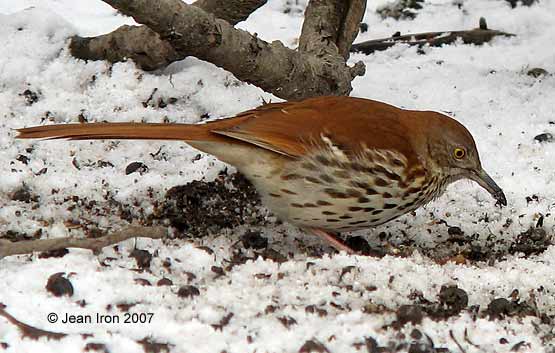
Brown Thrasher
Photo: Jean Iron
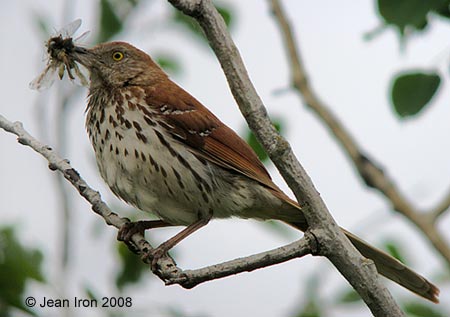
Brown Thrasher
Photo: Jean Iron
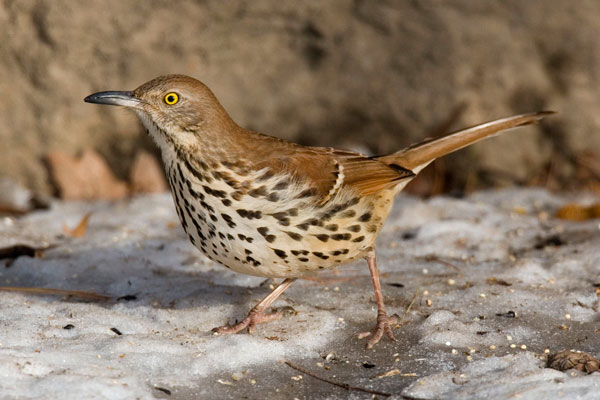
Brown Thrasher
Photo: John Millman
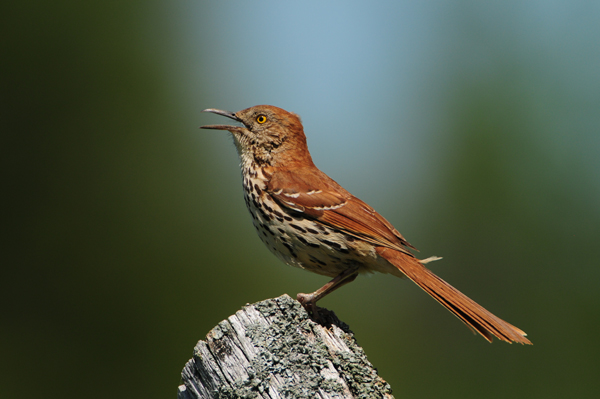
Brown Thrasher
Photo: Sam Barone
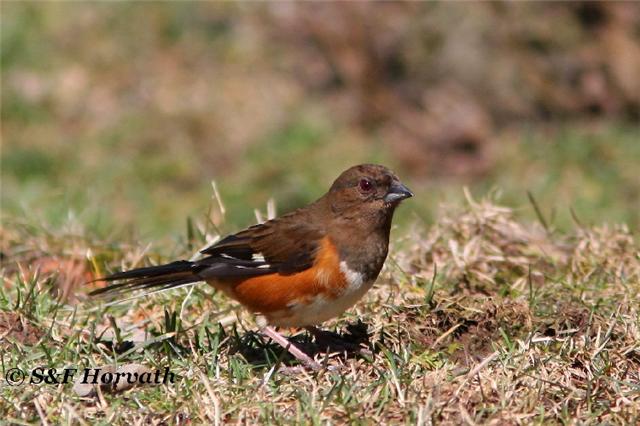
Eastern Towhee
Female
Photo: Sandra and Frank Horvath
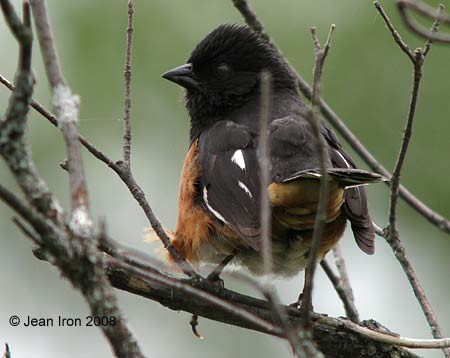
Eastern Towhee
Photo: Jean Iron
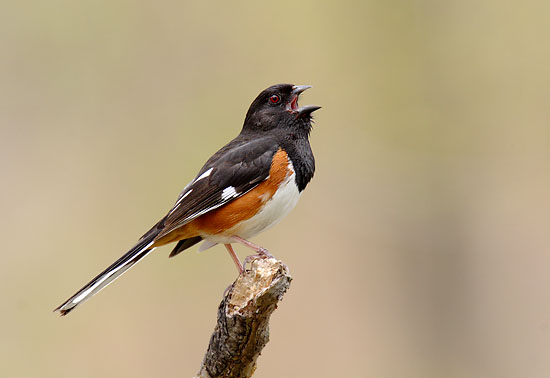
Eastern Towhee
Photo: Brandon Holden
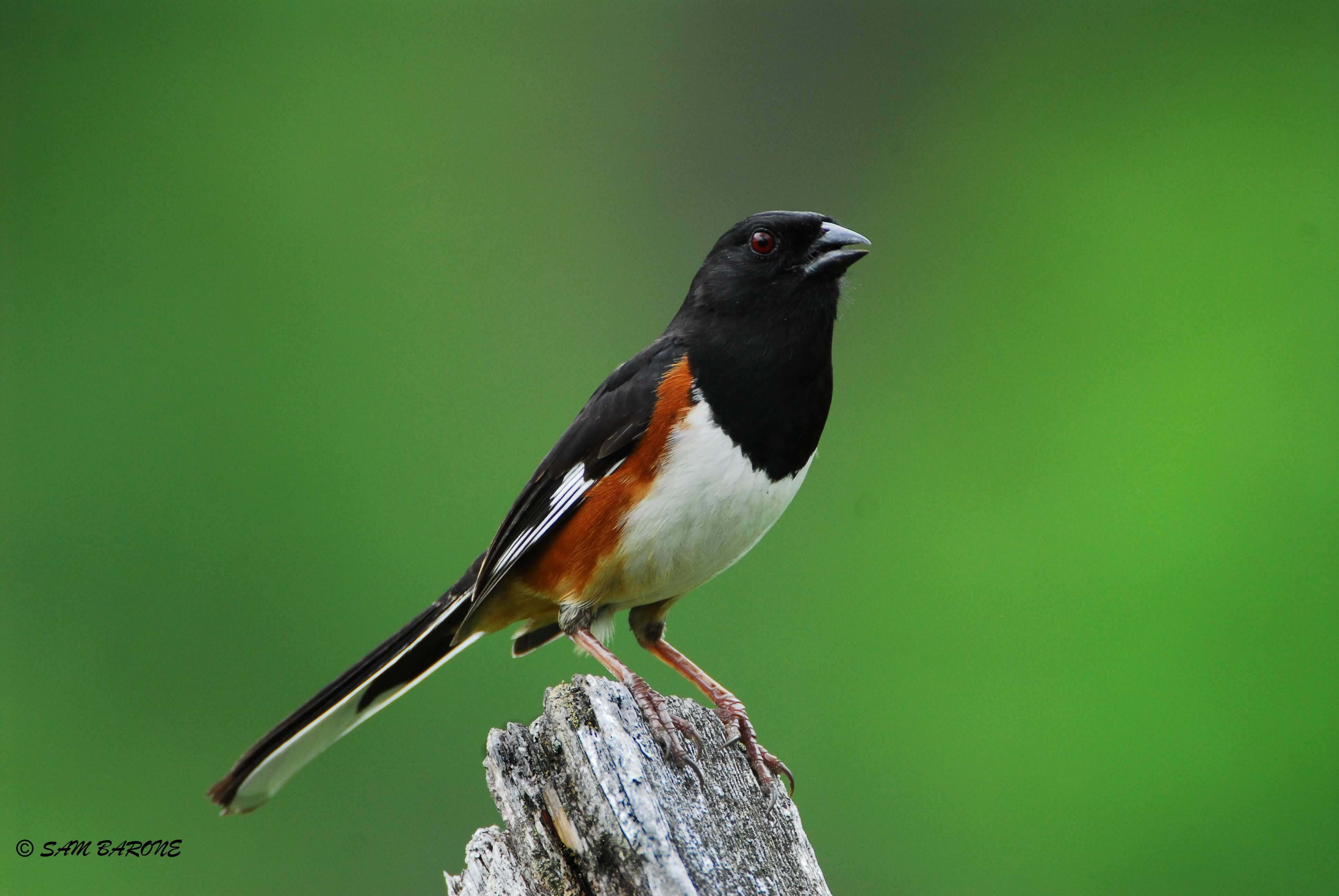
Eastern Towhee
Photo: Sam Barone
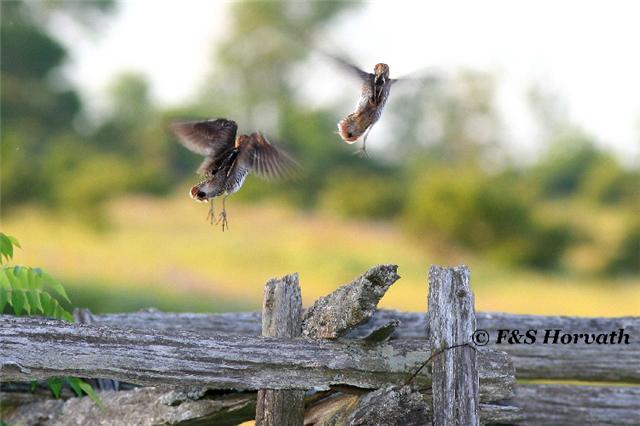
Wilson's Snipe
Photo: Frank and Sandra Horvath
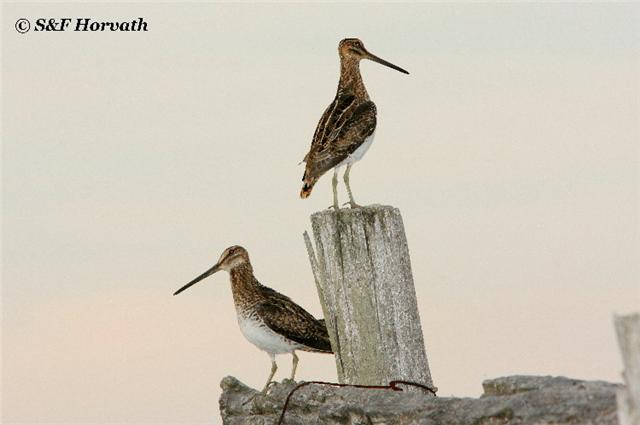
Wilson's Snipe
Photo: Sandra and Frank Horvath
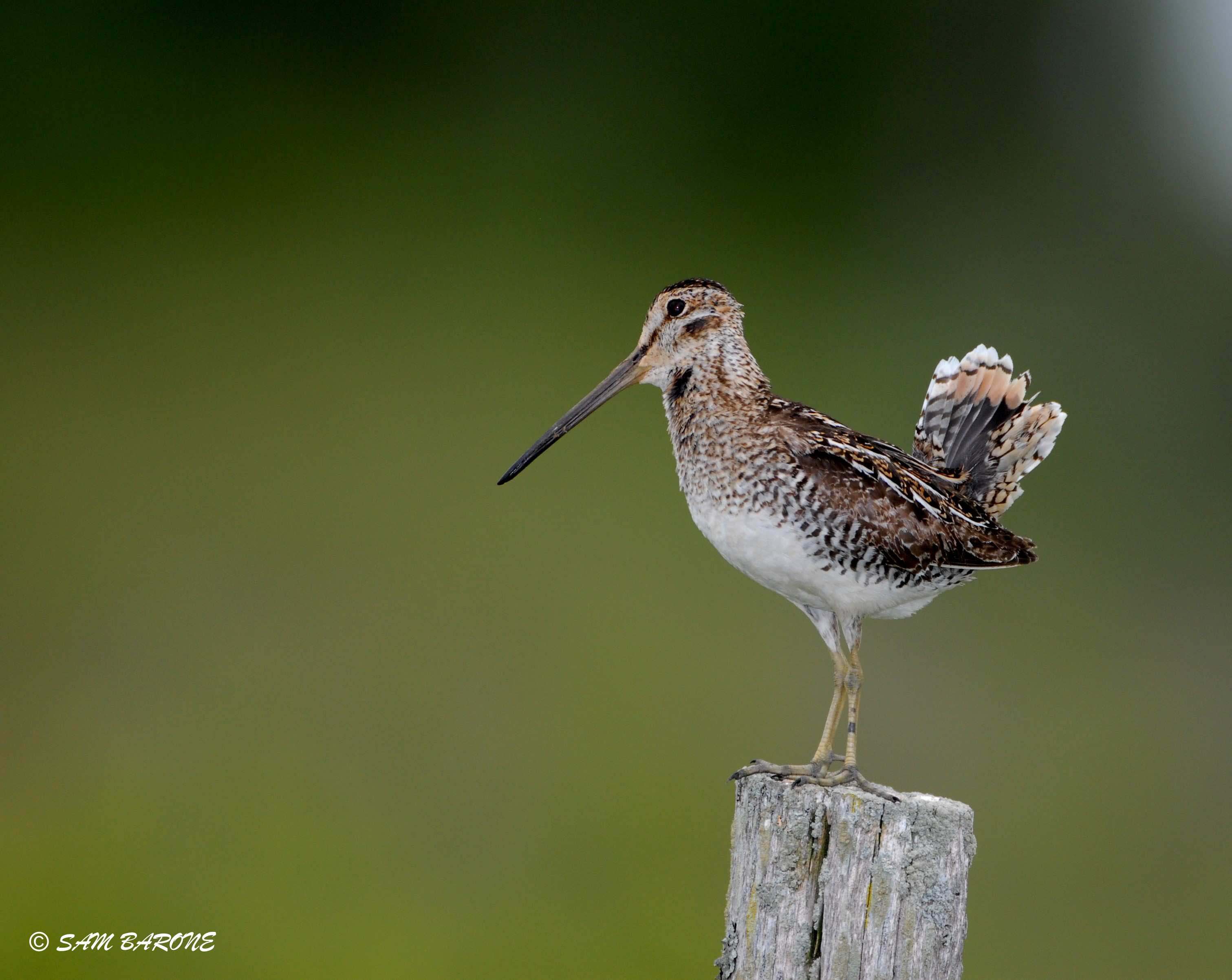
Wilson's Snipe
Photo: Sam Barone
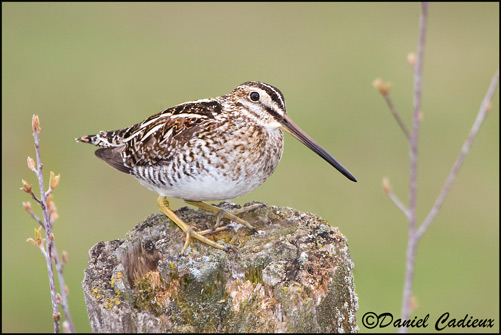
Wilson's Snipe
Photo: Daniel Cadieux
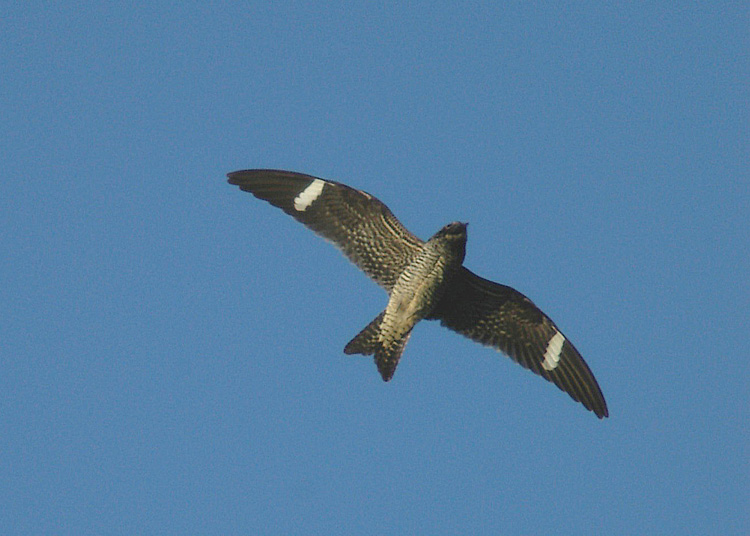
Common Nighthawk
Photo: Barry Cherriere
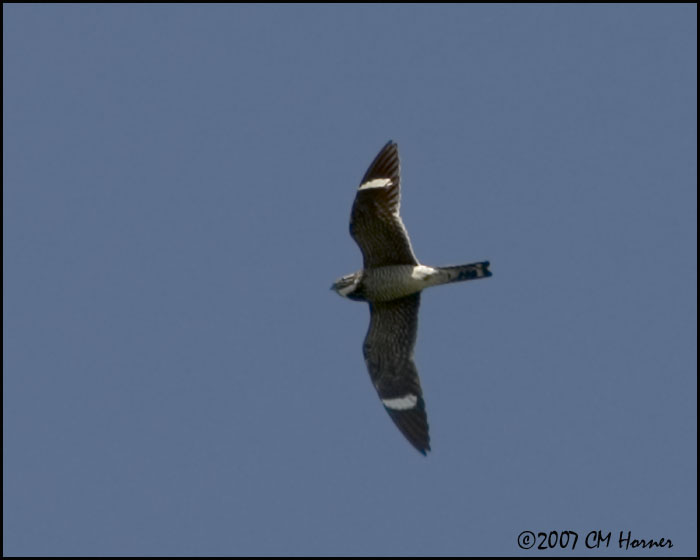
Common Nighthawk
Photo: Carol Horner
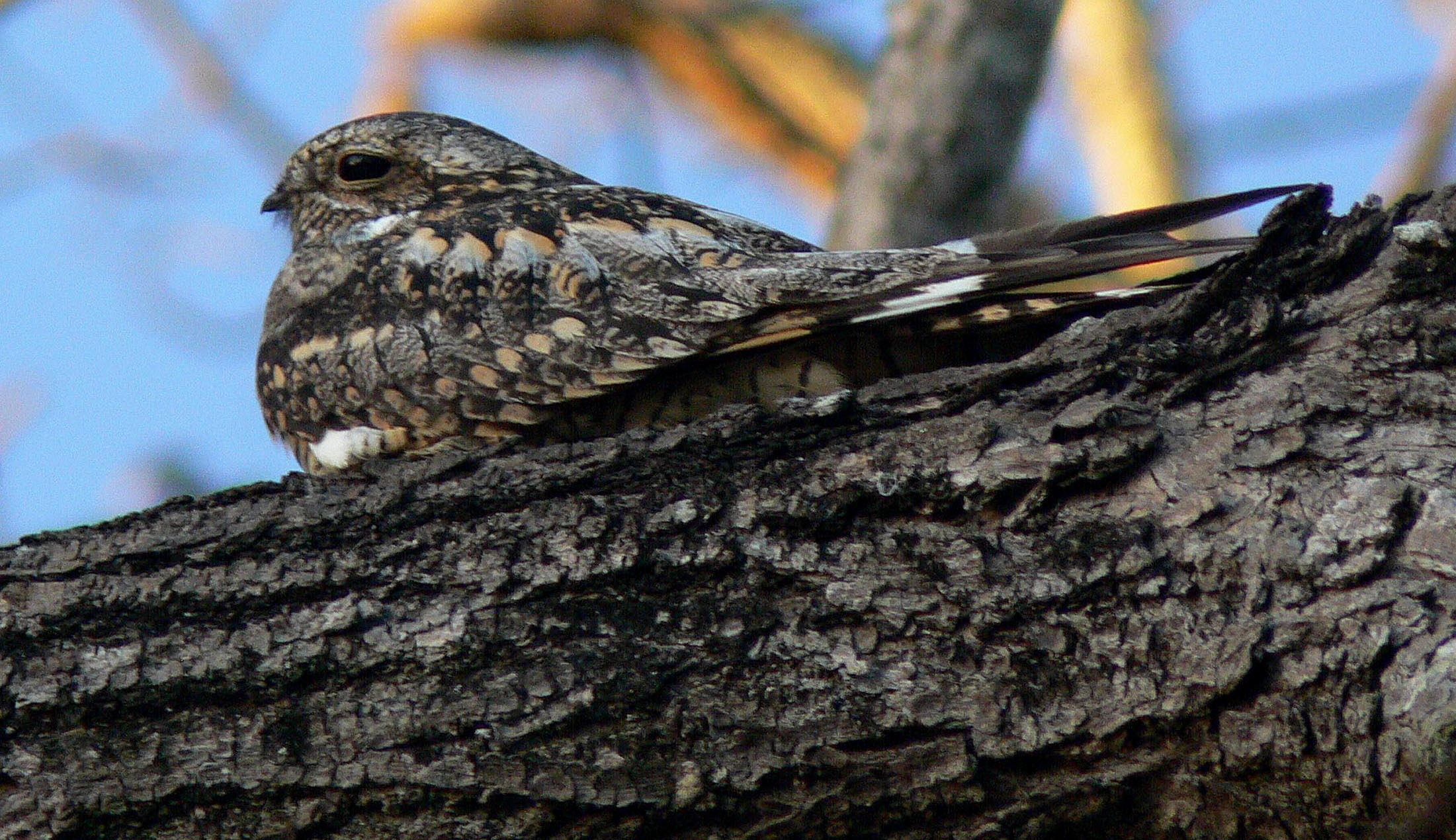
Lesser Nighthawk
Photo: Dave Milsom
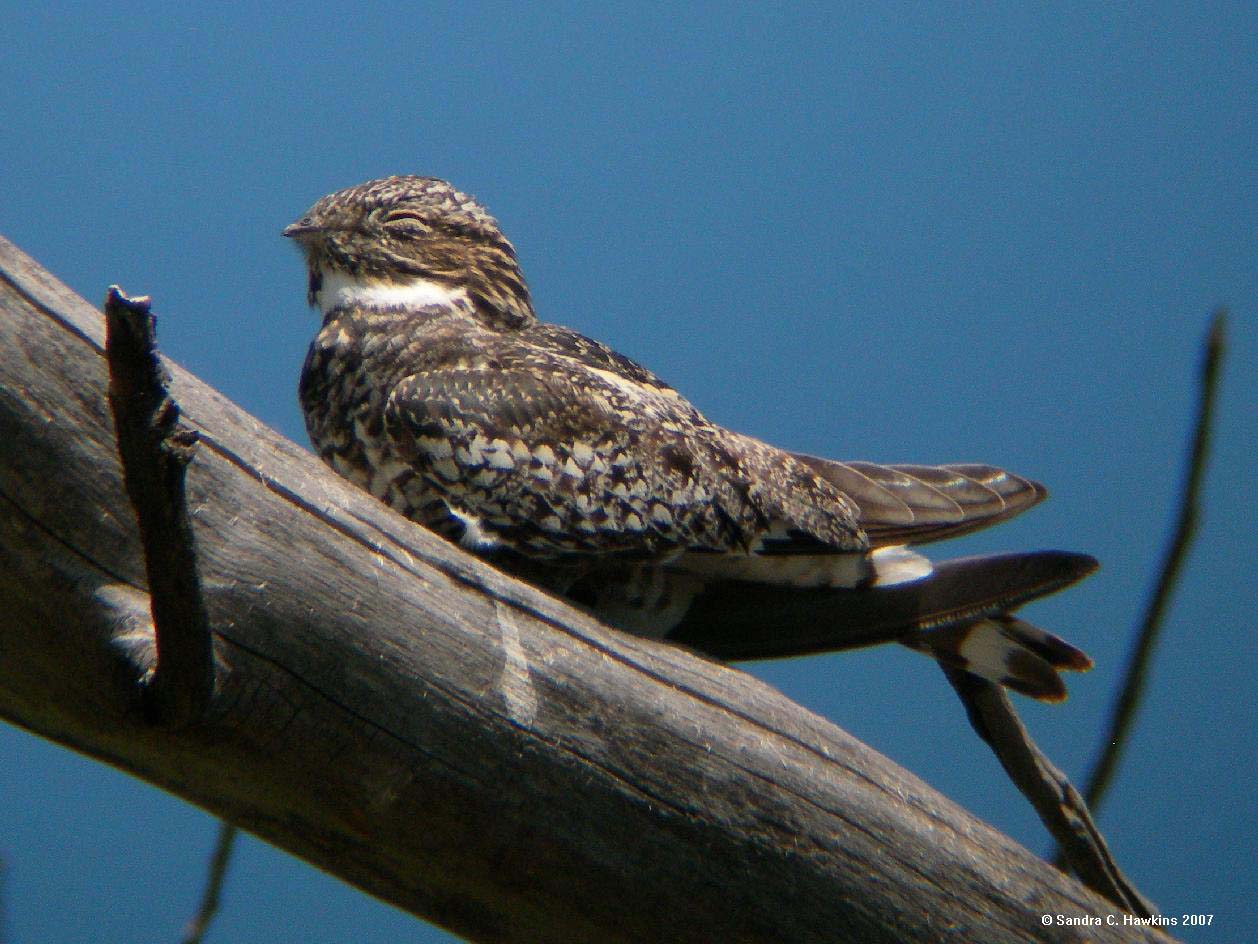
Common Nighthawk
Photo: Sandra Hawkins
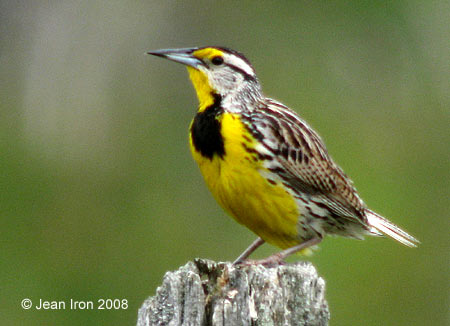
Eastern Meadowlark
Photo: Jean Iron
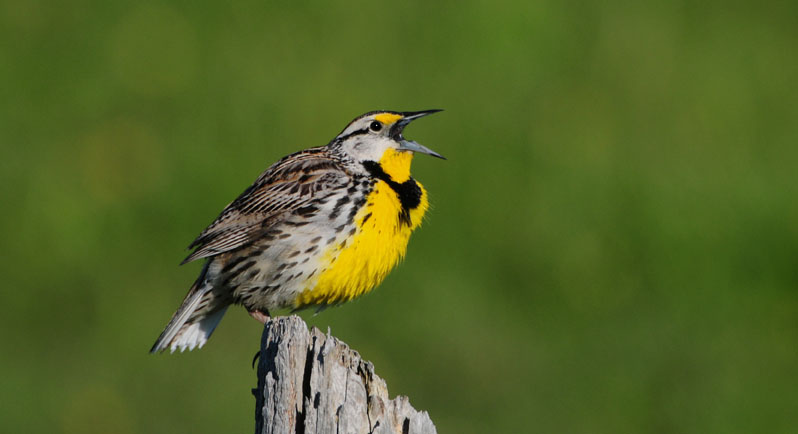
Eastern Meadowlark
Photo: Sam Barone
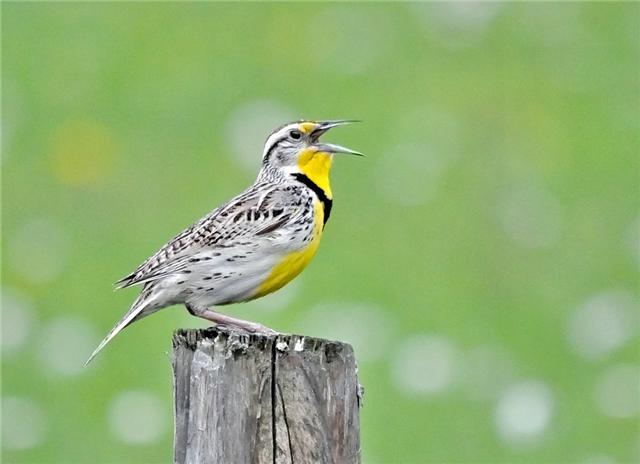
Western Meadowlark
Photo: Lev Frid
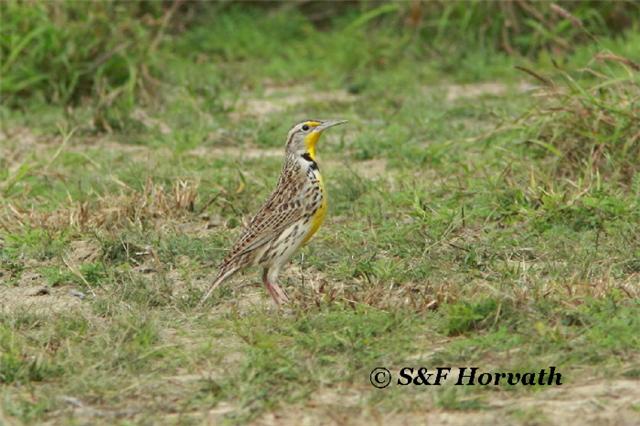
Western Meadowlark
Juvenile
Photo: Sandra and Frank Horvath
Manitoulin IslandTop
April 16 ‐17 2011 (Saturday‐Sunday) Gore Bay, Manitoulin Island
Leader: Gord Cameron. Sharp
The weekend Manitoulin trip was a great success for the 16 participants despite the dreadful weather conditions.
The weather on Saturday was so bad that even the Sharp‐tailed Grouse abandoned the lek before the second group had settled into the airport blind. Fortunately, Kara Lefevre and the Friends of Misery Bay were kind enough to take out the group again on Sunday when 22 grouse were viewed going through some of their dancing and mating rituals.
Many thanks to Kara, John, Sylvia and Steve Hall for accommodating our group so well and providing such wonderful refreshments at Gore Bay Airport. Thanks also to the airport management for permitting us to access their premises again to see the grouse.
Our OFO group should also be commended for their birding prowess: none of you who stayed until late Sunday could be termed “fair weather birders”!
We recorded a fine total of 88 species over the weekend. There were some excellent finds: 2 Loggerhead Shrikes, one wearing a red band on its left leg, were scoped at Billings Concession 10 East near Kagawong; an American Bittern on 14th Concession; a female Brewer’s Blackbird (near Ice Lake) found along with many Rusty Blackbirds (groups of 50, 30, and smaller numbers in the teens at 3 separate feeders); a pair of Ring‐necked Pheasants near Gore Bay Airport ; 4 Ross’s Geese and 1 Snow Goose on Noble Sideroad near Lake Wolsey; Osprey (2) and Bald Eagles (4) on nests ; one Cackling Goose; another lek of 7 Sharp‐tailed Grouse on Barrie Island; 5 Vesper Sparrows, 6 Fox Sparrows at a feeder in Mindemoya; Wilson’s Snipe, 5 Greater Yellowlegs, Eastern Phoebe, Ruby‐crowned Kinglet, Yellow‐rumped Warbler, 7 Hermit Thrush, Merlin, Short‐eared Owl (Barrie Island), Pileated Woodpecker, Lapland Longspur, Snow Bunting, Horned Lark, Pine Siskin, Winter Wren, Brown Creeper, and hundreds of Sandhill Cranes.
Thanks to Erwin Meisner and Gord Cameron for birding tips on Manitoulin.
April 10‐11 2010 (Saturday‐Sunday) Gore Bay, Manitoulin Island
Leaders: Gordon Cameron, Steve Hall.
On the snowy drive up, a Great Blue Herony of five active nests was observed at km 198 and a Northern Goshawk was seen at km 200 on Hwy 400 near MacTier.
Eight OFO members attended the trip which started with wintery weather on the way to and spring weather on the way back from Manitoulin Island. Weather on the island ranged from light snow flurries, rainshowers, strong winds and ice cold fog rolling in from Lake Huron to almost mild calm and clear skies.
Late Friday evening was spent on Airport Road, Gore Bay, listening to Wilson’s Snipe and American Woodcock display flights and Killdeer calls.
On Saturday morning, Steve Hall kindly agreed to guide us through his favourite birding haunts around Gore Bay. On Barrie Island, we heard the grouse before we saw them. We observed about a dozen male Sharp‐tailed Grouse displaying on their lek with several females watching. Everyone had great views of the yellowish eye combs and the inflated purplish neck sacs on the males. For six of the OFO members, except the leaders, this was a lifer. After seeing this undisturbed (by humans) lek habitat, it was easier to understand why the airport lek was closed to viewing for the first time in many years. Whereas the birds on Barrie Island were standing in short grass just up to head height, the Gore Bay Airport birds were literally dancing in the bushes which were two to three times the bird’s height. Other good birds seen were Bald Eagles, 4 dark morph and 1 light morph Rough‐legged Hawks, Sandhill Cranes displaying, Tree Swallow, Eastern Bluebird, Winter Wren, Wood Duck and two Savannah and four Fox Sparrows. After returning Steve to his home, we birded Kagawong including Bridal Veil Falls which produced a male and female Rusty Blackbirds, Brown Creeper and many Golden‐crowned Kinglets. The Kagawong River held Pied‐billed Grebe and Hooded Merganser. Mudge Bay produced 3 Common Loons, and a Merlin. Numerous Bald Eagles and Common Ravens were seen sitting on nests between Gore Bay Airport and Kagawong. All lakes were ice‐free. The Indian Point/Lake Wolsey area produced an Osprey building a nest and hundreds of waterfowl including a pair of Red‐necked Grebes. In the evening, one of only two Red‐tailed Hawks on the trip was seen and excellent views were had of both snipe and woodcock display flights on the Noble Sideroad.
Sunday was spent birding from Gore Bay to South Baymouth then to Little Current. Good birds seen or heard were two Lincoln’s and one Swamp Sparrows, numerous Sandhill Cranes, Pileated Woodpecker, Ruffed Grouse, Ring‐necked Pheasant, Merlin, Northern Harrier, one Pine Pine Siskin, Eastern Phoebe, Eastern Meadowlark, Belted Kingfisher, Northern Shrike, two Blue‐winged Teal, and seven Trumpeter Swans. Three more Sharp‐tailed Grouse were seen perched atop a tree. Thousands of waterfowl were seen in the Strawberry and the North Channels from the Hwy 6 lookout above Strawberry Channel between Sheguiandah and Little Current.
We observed 76 bird species on Manitoulin Island from Friday to Sunday including 20 species of waterbirds, nine species of raptors, but only three species of shorebirds.
Mammals seen were Mink, Porcupine, Red Squirrel, (white) Snowshoe Hare, two Coyotes, Red Fox with a vole, and several hundred White‐tailed Deer. Spring Peepers and Northern Leopard Frogs were heard. Only Common Blue Violet and Coltsfoot were seen in bloom.
OFO wishes to thank Steve Hall for sharing a morning of his time birding with the group, Irwin Meisner for suggesting birding hotspots, and Andrew Keaveney for providing his previous Ontbirds report. I wish to thank Steve Hall, as a passenger in my car, for sharing the birding and human history of the island, too.
11‐12 April 2009 Gore Bay, Manitoulin Island
Leaders: Reta and Steve Hall and Rodney Campbell.
Eleven OFO members braved getting out of bed at 4:45 am and sub‐zero temperatures to view Sharp‐tailed Grouse on their lek. One count put the number at between 30 and 40 birds.
We observed 66 species on Manitoulin Island from Friday to Sunday. Some were observed by the group and others by individuals as they traveled to our meeting place. Sandhill Cranes flying and feeding in the fields were easy to locate. Other highlights included a mixture of lingering winter species and early spring arrivals. There 10 Bald Eagles of various ages seen together at the Causeway between Lake Wolsey and Campbell Bay. Also seen there were Great Blue Heron and Double‐crested Cormorants, four Tree Swallows, a Glaucous Gull and a flock of Snow Buntings.
We saw a Hoary Redpoll at Bridal Veil Falls along with Common Redpolls and Pine Siskins. We heard several American Woodcock and observed one. We also heard a Wilson's Snipe and saw Eastern Meadowlarks, Wild Turkey, Ring‐necked Pheasant and Ruffed Grouse.
OFO wishes to thank Reta and Steve Hall and Rodney Campbell for leading this trip.
Reported by Chester Gryski.
19‐20 April 2008 Gore Bay, Manitoulin Island
Leader: Steve Hall
In perfect weather on Saturday and Sunday, members of the Ontario Field Ornithologists (OFO) attended the 12th annual Manitoulin Island trip to view Sharp‐tailed Grouse at the Gore Bay Airport. From a blind we watched about 50 Sharp‐tailed Grouse dancing and cooing on this large lek. Other sightings on Manitoulin included two Bald Eagle nests, dancing Sandhill Cranes, several Brewer’s Blackbirds, many Rusty Blackbirds, two Upland Sandpipers, a Short‐eared Owl, Pileated Woodpeckers, an adult Glaucous Gull, Pine Warblers and Brown Thrashers.
For information on Sharp‐tailed Grouse see account in the new Ontario Breeding Bird Atlas by Nick Escott and the two articles by Harry Lumsden in the Canadian Field‐Naturalist, vol. 119, no. 4, 2005.
Don Barnett coordinated the trip. OFO thanks our Manitoulin hosts, Steve and Reta Hall, Sylvia Kemp‐Fletcher, Rodney Campbell and The Friends of Misery Bay for their hospitality and for showing us the Sharp‐tailed Grouse.
Reported by Jean Iron.
‐ 14 April 2007 Manitoulin Island
Leader: Steve Hall.
In perfect birding weather on Saturday and Sunday, 14 and 15 April, members of the Ontario Field Ornithologists (OFO) attended the 11th annual outing to Manitoulin Island to view a Sharp‐tailed Grouse lek at Gore Bay Airport. From the blind we had close views of up to 80 Sharp‐tailed Grouse dancing and displaying on this large lek. See photos here.
After viewing the grouse we looked for other Manitoulin birds. This spring is particularly good for raptors presumably because there is a high meadow vole population. We saw about 90 Rough‐legged Hawks, 60 Northern Harriers and 60 American Kestrels attracted to the vole prey. There were 13 Short‐eared Owls between Gore Bay and the airport. We also saw 15 Bald Eagles and 2 Merlins. Other Manitoulin highlights included two Bald Eagle nests, Red‐tailed Hawk nest, Common Raven nest, Great Horned Owl nest, 75 displaying Sandhill Cranes, several Northern Shrikes, 4 Pileated Woodpeckers, Snow Buntings and an adult Glaucous Gull.
Don Barnett coordinated this memorable outing. OFO thanks our Manitoulin hosts, Steve and Reta Hall, Sylvia Kemp‐Fletcher, Rodney Campbell and The Friends of Misery Bay for their splendid hospitality and for showing us the Sharp‐tailed Grouse.
Reported by Jean Iron.
8‐9 April 2006 Sharp‐tailed Grouse Lek, Manitoulin Island
Nineteen members of the Ontario Field Ornithologists (OFO) attended the 10th annual Sharp‐tailed Grouse viewing weekend on Manitoulin Island. On Saturday and Sunday, 8 and 9 April 2006, from the blind we had close views of about 40 Sharp‐tailed Grouse dancing and displaying on their lek at Gore Bay Airport. The weather was perfect for us to enjoy Manitoulin’s birds. Other highlights included three Bald Eagle nests, Common Ravens on the nest, a pale “Snyder’s“ Great Horned Owl (scalariventris), many Sandhill Cranes with several pairs dancing, a Glaucous Gull, displaying American Woodcock and Wilson’s Snipe, Snow Buntings, a Lapland Longspur, both light and dark morph Rough‐legged Hawks, Northern Harriers, and several Northern Shrikes.
Don Barnett coordinated this memorable trip. We thank our Manitoulin hosts Steve and Reta Hall, Sylvia Kemp‐Fletcher, Rodney Campbell, Doreen Bailey and The Friends of Misery Bay for showing us the Sharp‐tailed Grouse and for their outstanding hospitality.
Reported by Jean Iron.
9‐10 April 2005 Sharp-tailed Grouse Lek, Manitoulin Island
The Ontario Field Ornithologists (OF) held its 9th annual field trip on Saturday and Sunday to see and hear displaying Sharp-tailed Grouse on Manitoulin Island. The birding and scenery are outstanding on Manitoulin, which is the largest freshwater island in the world. There were 35 to 50 grouse dancing on the lek at Gore Bay. We had close views from the blind. Other sightings on Manitoulin included many Greater Sandhill Cranes, Short-eared Owl, four Bald Eagle nests, Northern Ravens at a nest, Glaucous Gull, Merlins, Snow Buntings, Lapland Longspurs, a Vesper Sparrow, Northern Shrikes, displaying American Woodcock and Wilson's Snipe. For their fine northern hospitality and for showing us the Sharp-tailed Grouse. OF thanks our hosts Steve and Rita Hall, Roy and Rodney Campbell, Sylvia Fletcher, Doreen Bailey and the Friends of Misery Bay. Don Barnett once again coordinated this memorable trip. Don already has made arrangements for next year's trip.
Reported by Jean Iron
10‐11 April 2004 Gore Bay, Manitoulin Island, Sharp-tailed Grouse Lek
OFO's Easter weekend trip to see and hear Sharp-tailed Grouse on Manitoulin Island was a great success. There were about 60 grouse displaying on the lek at Gore Bay. Everyone got close views from the hide.
Other sightings were an adult Ross's Goose, a pale "Snyder's" Great Horned Owl on the same nest as last year, many Sandhill Cranes, several Short-eared Owls, three Bald Eagle nests, dark and light morph Rough-legged Hawks, many male Northern Harriers, and displaying American Woodcock and Wilson's Snipe.
We thank Steve and Rita Hall, Roy Campbell and the Friends of Misery Bay for showing us the Sharp-tailed Grouse and for their outstanding hospitality.
Reported by Jean Iron
12 April 2003 Gore Bay, Manitoulin Island
Leader: Steve Hall.
At dawn, all 17 participants saw about 30 Sharp-tailed Grouse at the lek at Gore Bay Airport. From the hide, we had outstanding views of the displaying grouse as they cooed and cackled and vibrated their upright tail feathers. Their golden eyebrows and purple sacs became more vivid as daylight came. Still at the airport, we saw a juvenile gray morph Gyrfalcon in a low tree on the shore of Bayfield Sound. With permission we walked out to get a close view.
Afterwards, Steve Hall and Roy and Rodney Campbell showed us around Manitoulin. The lakes, bays and marshes were still frozen. The only open water was at The Narrows between Bayfield Sound and Lake Wolsey where there was a good concentration of ducks. Other highlights were: one adult male Barrow's Goldeneye at The Narrows, one adult pale Great Horned Owl on the nest near Indian Hill, many pairs of Sandhill Cranes, adult Bald Eagle at the airport, Bald Eagles building a nest along Highway 540 just past Misery Bay, several Rough-legged Hawks, Common Raven on the nest near Gore Bay.
During the weekend, Don Barnett, David Mudd, David Szmyr and I also saw: five Pileated Woodpeckers 15 Rough-legged Hawks on Barrie Island, Red-bellied Woodpecker on Barrie Island, seven Northern Harriers, mostly adult males, pair of Bald Eagles at nest on island in Ice Lake; several immature Bald Eagles, 10 Sharp-tailed Grouse in a field beside County Road 540 between Bowser's Corners and Kagawong American Woodcock displaying.
OFO thanks Steve and Rita Hall for hosting breakfast. Steve Hall and Roy and Rodney Campbell kindly showed us the bird sights on Manitoulin. Many thanks to The Friends of Misery Bay for arranging with the Gore Bay Airport for us to use their building and go on their property to see this spectacular Sharp-tailed Grouse lek.
To reach Gore Bay take Highway 6 south from Espinola to Little Current, then Highway 540. Birding is productive driving the main roads and the back roads.
Reported by Jean Iron
13 April 2002 Gore Bay, Manitoulin Island
Leader: Steve Hall.
The primary goal was to see the Sharp-tailed Grouse at a lek. Mission accomplished. About 15 of us, in two shifts in the blind, were treated to an awesome display by 50+ grouse. The weather was perfect and the grouse were sometimes as close as 15 feet.
Steve Hall, our host at the lek, kindly took us birding around the area. Thanks to Steve we saw a Raven on a nest (on top of a silo) and a Barred Owl. While checking out a field full of Canada Geese, etc., we found a White-Fronted Goose. I believe it was of the Greenland race, although the bill looked more orange than yellow.
Other personal sightings from a total of 50+ species, included:
Bald Eagles (2)
Sandhill Cranes (quite a few of these in the fields).
Wild Turkeys (2 males / 2 females).
Osprey (1, at nest).
Common Loons (4)
Wood Ducks (2 males / 2 females).
Pied-billed Grebe.
12 other species of duck (Common Mergansers and Goldeneye were particularly abundant).
Merlins (a pair, coupling).
Snipe (1)
Rough-Legged Hawks (several).
Ring-necked Pheasants (2 female).
Recent migrants (kinglets, Eastern Phoebes, Brown Creepers, Northern Flickers, Hermit Thrushes, Yellow-bellied Sapsuckers, Killdeer, Tree Swallows, Turkey Vultures, Cormorants, Great Blue Herons, Eastern Meadowlarks and Eastern Bluebirds) were also seen.
Birds not seen by me, but seen by other OFO members on this trip, included a Ruffed Grouse and three Pileated Woodpeckers.
Reported by Ian Cannell
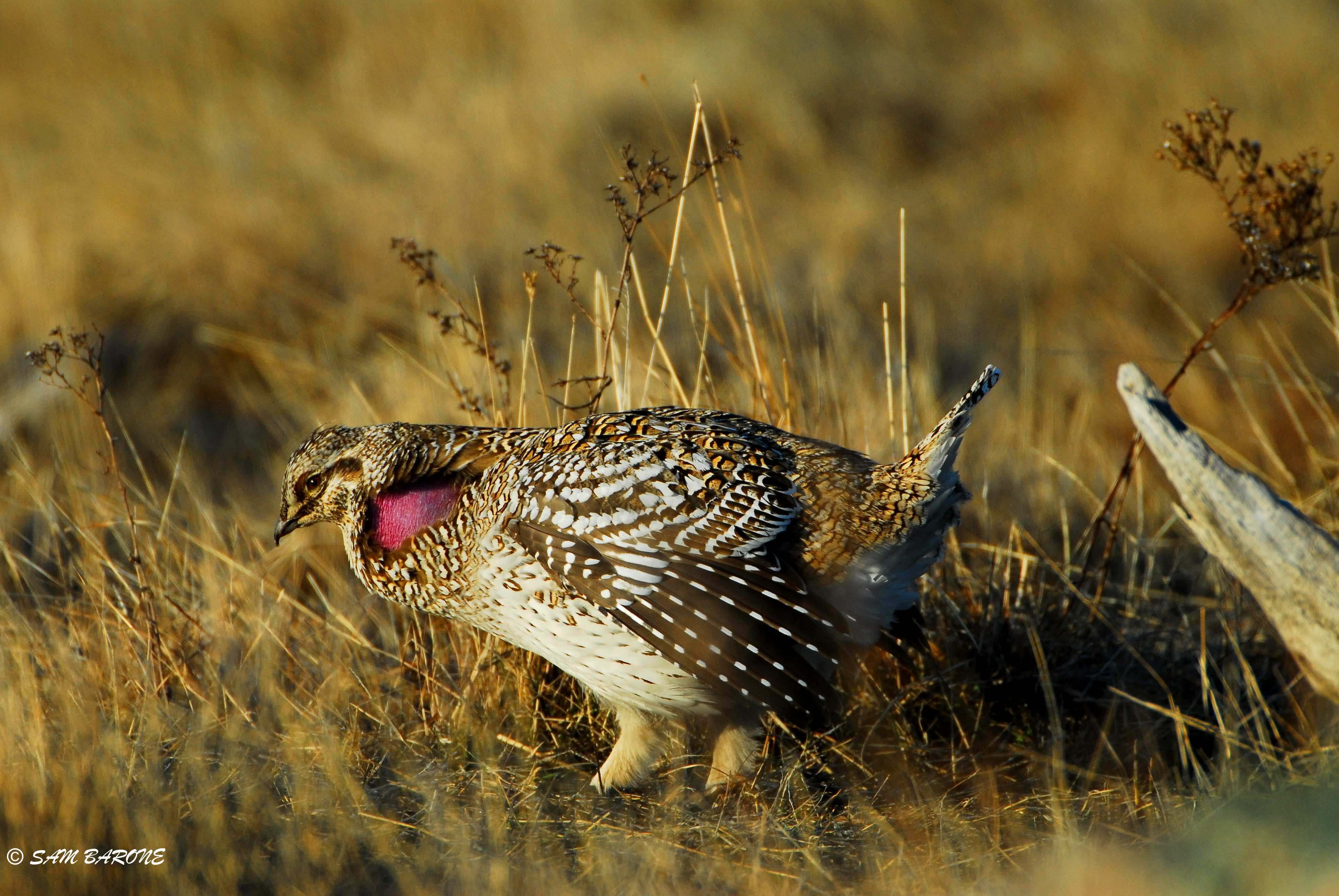
Sharp-tailed Grouse
Photo: Sam Barone
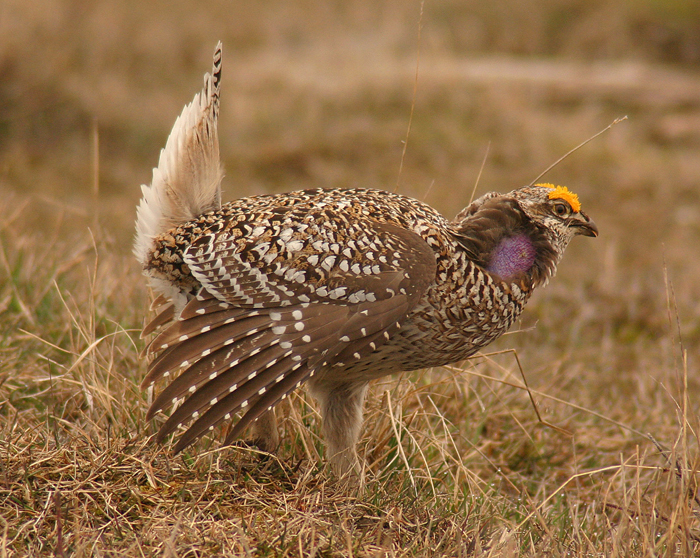
Sharp-tailed Grouse
Photo: Mark Peck
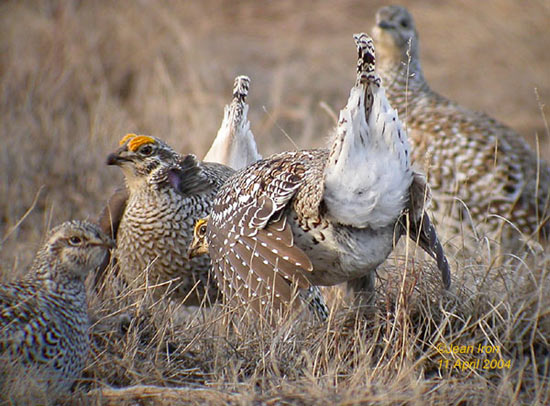
Sharp-tailed Grouse
Female on left and behind
Photo: Jean Iron
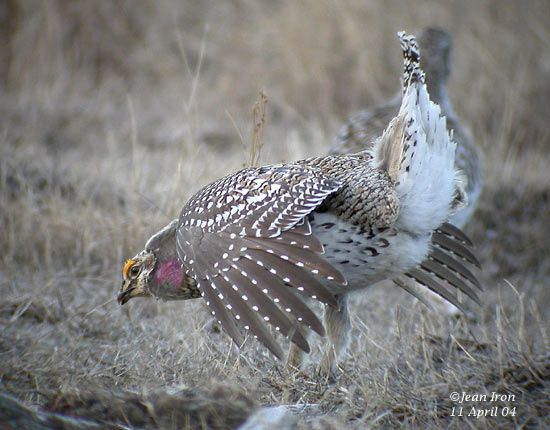
Sharp-tailed Grouse
Photo: Jean Iron
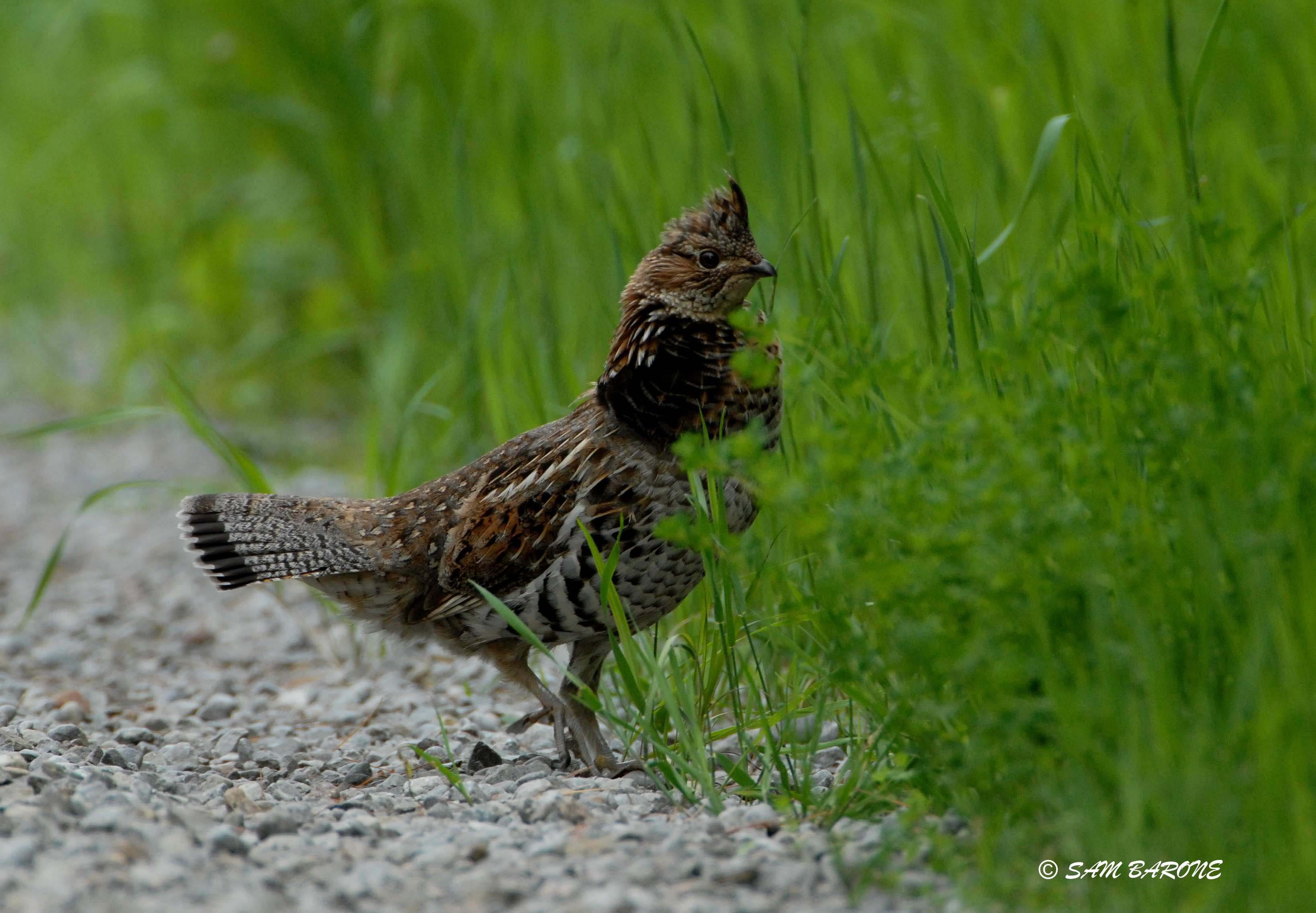
Ruffed Grouse
Photo: Sam Barone
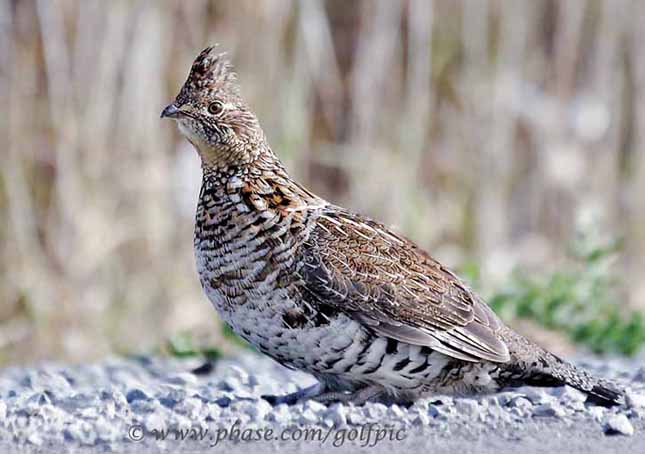
Ruffed Grouse
Female
Photo: W. Hum
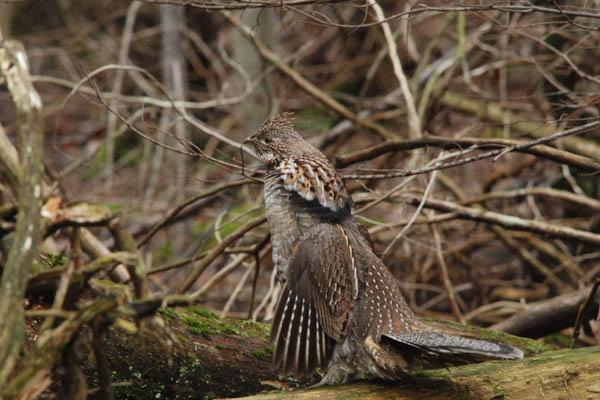
Ruffed Grouse
Photo: Mark Olivier
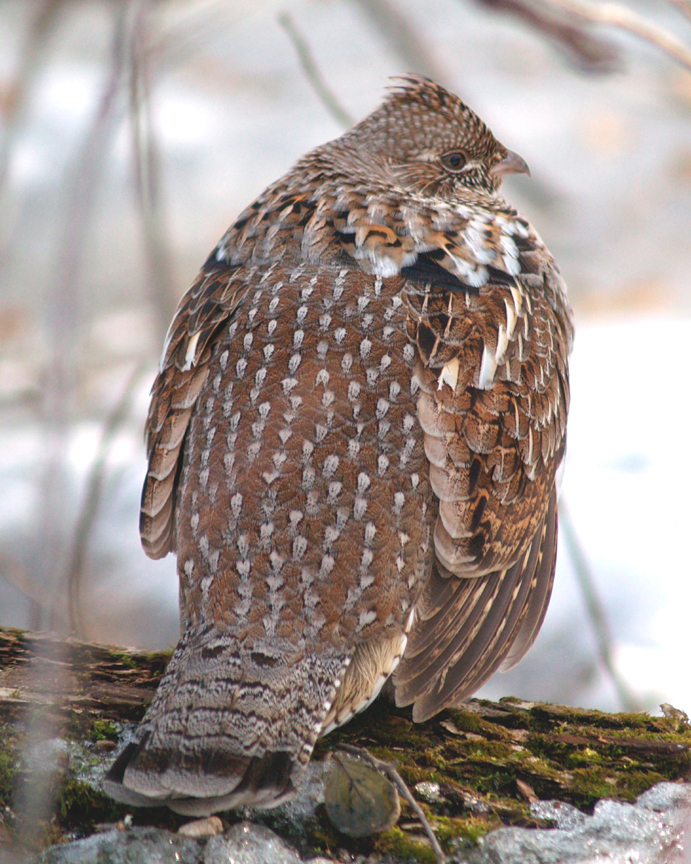
Ruffed Grouse
Photo: Francine Ouellette
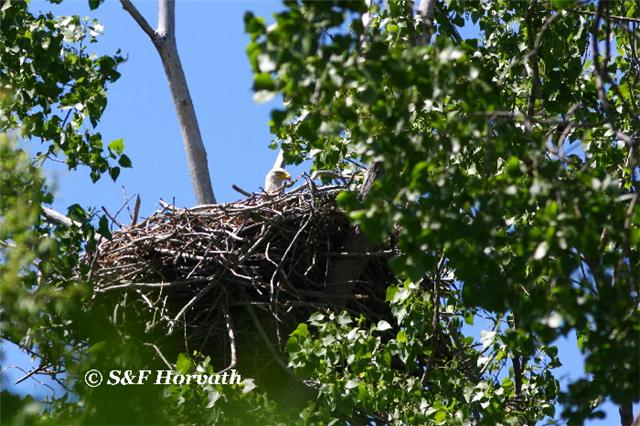
Bald Eagle
Photo: Sandra and Frank Horvath
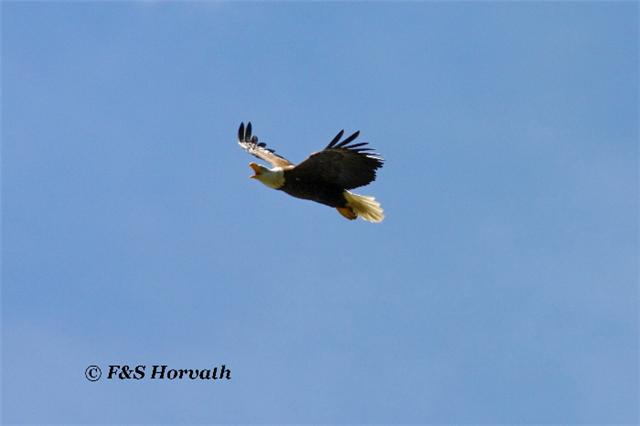
Bald Eagle
Photo: Frank and Sandra Horvath
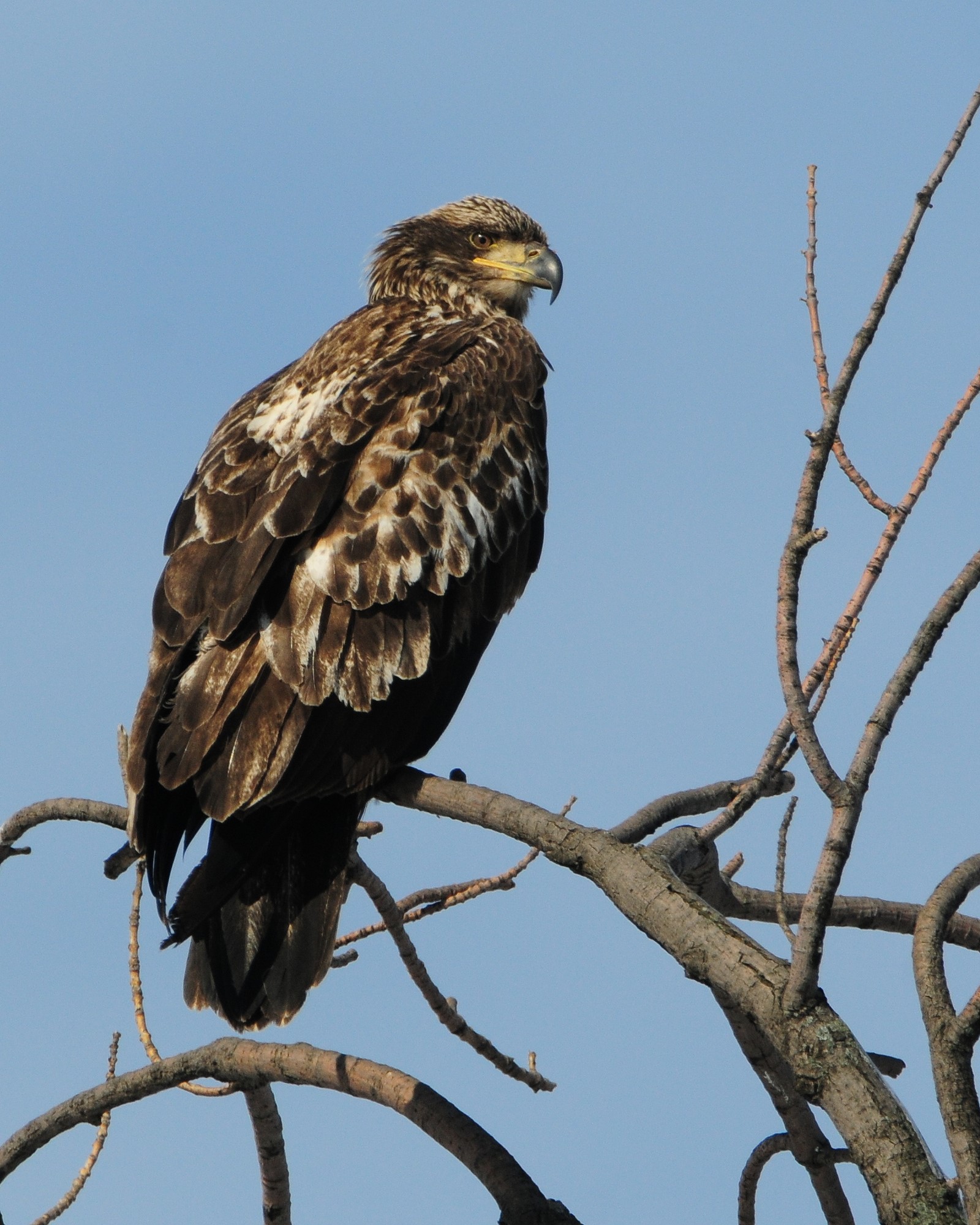
Bald Eagle
Photo: Sam Barone
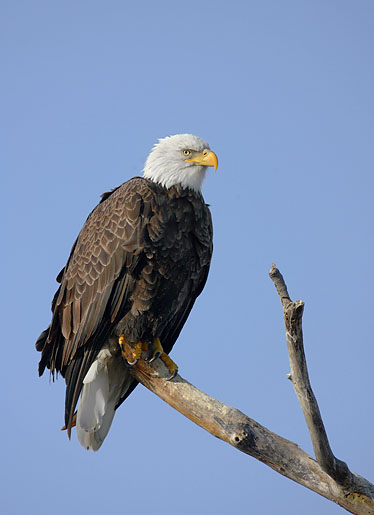
Bald Eagle
Photo: Brandon Holden
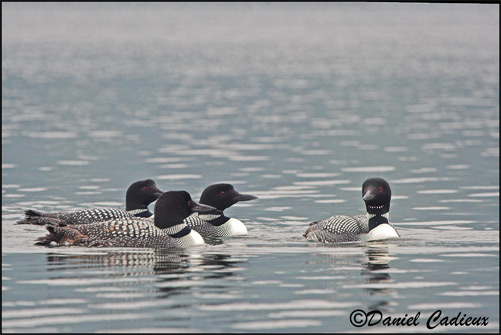
Common Loon
Photo: Daniel Cadieux

Common Loon
Photo: Sandra and Frank Horvath
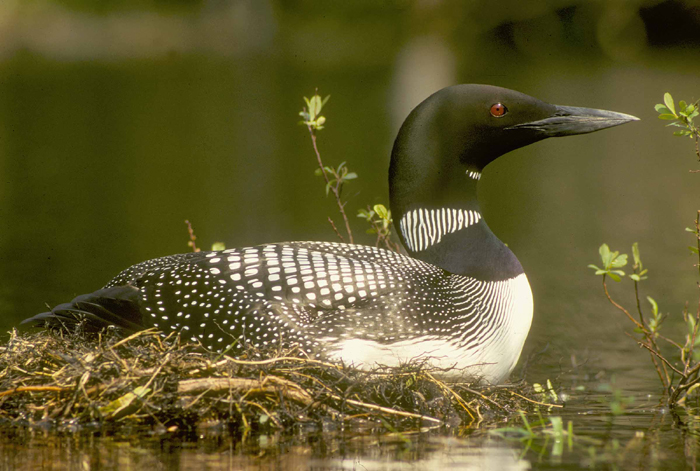
Common Loon
Photo: Mark Peck
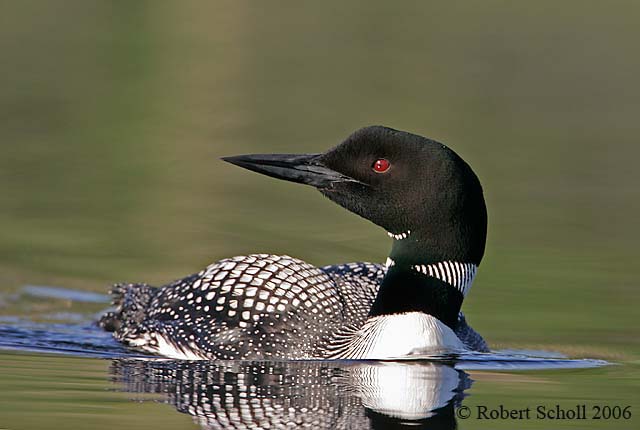
Common Loon
Photo: Robert Scholl
Minesing SwampTop
April 18 2022 (Monday) Minesing
Leader: Dave Milsom.
30 birders enjoyed the Easter Monday OFO outing ably led by substitute leader Barbara Mann. First stop at McKinnon Road near Angus produced over 30 species including Sora, Blue-winged and Green-winged Teal, Northern Pintail, Northern Shoveler, Greater Yellowlegs, Bald Eagle, Northern Harrier, and Rusty Blackbird. The next highlight was a group of over 100 Sandhill Cranes in a field on Strongville Road. Those who drove to the Everett Gravel Pits were rewarded with views of 4 Greater White-fronted Geese among the hundreds of Canadas, and a late Northern Shrike. The group total for the day was 37 species.
April 21 2019 (Sunday) Minesing Swamp
Leader: Mark Cranford.
Today Andrew Don and myself lead an annual early spring trip to the Minesing Swamp area north of Angus and CFB Borden for the Ontario Field Ornithologists. 13 birders in nine car participated. The trip started at 8:30am and wound down around 3pm. After a couple days of rain the day started in fog but visibility improved as the temperature rose to 14C. We covered a couple of different habitats but the main focus of our trip was migrating waterfowl visiting wet and flooded field draining into the Minesing Swamp. In total we had recorded 64 mostly expected species. Links to three eBird checklists covers what we saw and heard. [McKinnon Road](https://ebird.org/view/checklist/S55231389) [Concession 2 Sunnidale](https://ebird.org/view/checklist/S55231386) [Baldwick Lane](https://ebird.org/view/checklist/S55231391) Highlights included hundreds of Northern Pintail, a lingering Northern Shrike on McKinnon Road, singing Winter Wren on territory at north end of Baldwick Road and aggressive Yellow-bellied Sapsuckers also at the north end of Baldwick.
April 22 2018 (Sunday) Minesing Swamp
Leader: Mark Cranford.
I had the privilege of leading about 20 OFO members on our annual trip to the Minesing Swamp. We basically followed Dave Milsom's self-guiding tour of the wetland available from the Ontario Field Ornithologists website [here](http://www.ofo.ca/ofo-docs/Minesing.pdf). We focused on three main sites MacKinnon Road just east of Angus off Hwy 90, the north end of Baldwick Lane and Ronald Road west of the village of Minesing (County 28 and Hwy 26). With the mild temperatures, flooding is ongoing and water levels could still be increasing. It was the highest levels for spring flooding I have seen. Over the course of the day we saw 64 species. Trip lists can be found on ebird. Waterfowl numbers were down but diversity was normal. Both numbers and diversity were low for songbirds but a couple of us did have a single Yellow-rumped Warbler. The real surprise was the active migration of raptors. In addition to reasonable numbers of Turkey Vulture, Red-tailed Hawk , Northern Harrier and the acciptors (Sharp-shinned and Cooper), we had Red-shouldered, Broad-winged, Red-shouldered, and Bald Eagle.
April 23 2017 (Sunday) Minesing Swamp
Leader: Mark Cranford.
April 23 2017 (Sunday) Minesing Swamp
Leader: Mark Cranford.
Sunday I had the privilege to lead some 20 OFO members around the outer edges of the Minesing Wetland Conservation Area (aka Minesing Swamp). In total the group located 60 species and added multiple lifers for more than one participant. Starting from Angus we visited MacKinnon Road for shorebirds, waterfowl and rails. The fields and sloughs along MacKinnon should remain wet for the next couple of weeks so you can expect interesting birds to remain along this section. The end of Baldwick Lane was rather quiet but we managed good looks at Yellow-bellied Sapsucker and Purple Finch. As the migration progress this site will only get better. 3 Sandhill Cranes in flight at the 90 degree bend on Ronald Road west of Minesing Village was a fine way of finishing off a good introduction to Minesing and an excellent spring day .
April 24 2016 (Sunday) Minesing Swamp
Leader: Mark Cranford.
16 cars with 34 birders sampled the Minesing Swamp today. Route was similar to one described by Dave Milson in OFO News (Feb 2003) [here](http://www.ofo.ca/ofo-docs/Minesing.pdf). 65 species over the course of a cool day seemed pretty good. Our first and last bird were the same although the final Pine Warbler offered the photographers extended viewing. We started with a good selection of waterfowl and marsh birds on MacKinnon Road just east of Angus. We did NOT attempt to drive the Second Concession as at least 200 meters of the sideroad was under water. We visited a number of access points to Minesing including the top end of Baldwick Lane which yielded an upland Belted Kingfisher perched in a maple as well as Wild Turkey, Brown Thrasher and Eastern Bluebird. We were almost stymied on Warblers until we visited the west end of Ronald Drive. Lots of Yellow-rumped and a Pine. Checklist will be submitted to eBird but if you have any questions about our route don't hesitate to contact me offline.
April 25 2015 (Saturday) Minesing Swamp
Leader: Dave Milsom.
31 birders attended today's Minesing outing. We found 69 species. The morning was very productive. The afternoon, when we hiked into the swamp, was not very rewarding: many birds had not arrived due to the cold front experienced most of this week. Best finds were great views for everyone of Virginia Rail, Sora, Sandhill Crane, Pine Warbler, Greater and Lesser Yellowlegs, Wilson's Snipe, many Pintail, Green and Blue-winged Teal, Trumpeter Swans, 6 species of Woodpecker, Broad-winged Hawk, Northern Harrier, Ruffed Grouse drumming, 4 Eastern Phoebes, Eastern Meadowlark, adult Black-crowned Night Heron, and a flock of 20 Rusty Blackbirds. We visited MacKinnon Road and Concession 2 in Brentwood in the morning and Baldwick Road, Pinehill Road, Fort Willow and Willow Creek in the afternoon. As usual, John Schmelefske was an excellent co-leader.
April 26 2014 (Saturday) Minesing Swamp
Leader: Dave Milsom.
30 birders braved the damp, cold conditions to enjoy a good day's birding around and within the Minesing Swamp today.
73 species included hundreds of ducks in the extensive flooded areas around the swamp as well as hordes of icterids and early migrants.
At least 500 Rusty Blackbirds were tallied over the course of the day plus many Pintail, American Wigeon, Lesser Scaup, Northern Shovelers, Ring-necked Ducks, Redhead and Green-winged Teal.
Other interesting sightings included Wood Ducks, Pied-billed Grebe, Blue-winged Teal, 3 Trumpeter Swans on nests, Sandhill Crane, Ruffed Grouse, Winter Wren, Black and White Warbler, Pine Warbler, Yellow-bellied Sapsucker, Pileated Woodpecker, Eastern Phoebe, Eastern Bluebird, Northern Rough-winged Swallow, 4 Ravens, both Kinglets, Fox Sparrow.
4 shorebird species : 150 + Greater Yellowlegs, 12 Lesser Yellowlegs, 14 Wilson's Snipe, 4 Killdeer.
Many thanks to John Schemelefske and Jean Iron for their very able assistance today.
It was a pleasure to lead such an appreciative and fun-loving group !
April 27 2013 (Saturday) Minesing Swamp
Leader: Dave Milsom.
30 individuals enjoyed a lovely day birding around the Minesing Swamp near Angus. 81 species were recorded. Great views of American Bittern, Sandhill Cranes, Broad-winged Hawks, Rusty Blackbirds, Pied-billed Grebes, Eastern Meadowlarks, Eastern Bluebird, Eastern Phoebes, Savannah, Fox and Chipping Sparrows, Pine and Yellow-rumped warblers, Northern Waterthrush, Carolina and Winter Wrens, Blue-headed Vireo, Yellow-bellied Sapsuckers, Brown Thrasher, Brown Creeper, and several Cliff Swallows gathering mud for nest-building.
Altogether 5 shorebird species including Pectoral Sandpiper and numerous Lesser and Greater Yellowlegs.A total of 16 species of waterfowl were seen including 2 Trumpeter Swans, both Teal, Wood Ducks, Ruddy Ducks and Lesser Scaup. Water levels are still fairly high but receding fast. Best spots are Mackinnon Road, Concession 2 in Brentwood and Ronald Road in Minesing village. Hiking into the swamp at the end of Baldwick Road is worthwhile.
April 28 2012 (Saturday) April 28 2012 (Saturday) Minesing Swamp
Leader: John Schmelefske.
45 OFO members participated in a tour of the southern edge of the Minesing Wetlands on Saturday, April 28. The flooded plains off McKinnon Road had been quite low in recent weeks, but precipitation during the previous week had produced ideal conditions for waders. A lack of shorebird variety was more than made up for by the high numbers of Greater and Lesser Yellowlegs.
The near perfect spring weather made for great viewing and leisurely comparisons. Current conditions on McKinnon road are great for incoming shorebirds and could be quite productive over the next while.
Highlights included Black-and-white Warbler, Osprey fly-bys, and great views of Eastern Bluebirds and Hermit Thrushes.
It was particularly gratifying to have a couple of very knowledgeable and keen-eyed, budding, young birders in our group who picked up a few species which we might not have otherwise seen. Thanks to all the participants for a most enjoyable day.
- Canada Goose
- Wood Duck
- American Wigeon
- Green-winged Teal
- Mallard
- Northern Pintail
- Blue-winged Teal
- Northern Shoveler
- Bufflehead
- Hooded Merganser
- Great Blue Heron
- Turkey Vulture
- Osprey
- Northern Harrier
- Sharp-shinned Hawk
- Broad-winged Hawk
- Red-tailed Hawk
- Merlin
- Wild Turkey
- Sandhill Crane
- Wilson's Snipe
- Greater Yellowlegs
- Lesser Yellowlegs
- Killdeer
- Ring-billed Gull
- Rock Dove
- Mourning Dove
- Belted Kingfisher
- Yellow-bellied Sapsucker
- Downy Woodpecker
- Northern Flicker
- Pileated Woodpecker
- Eastern Phoebe
- Blue Jay
- American Crow
- Common Raven
- Eastern Bluebird
- Hermit Thrush
- American Robin
- Brown Thrasher
- European Starling
- White-breasted Nuthatch
- Tree Swallow
- Northern Rough-winged Swallow
- Barn Swallow
- Ruby-crowned Kinglet
- Black-capped Chickadee
- Pine Siskin
- American Goldfinch
- Purple Finch
- Yellow-rumped Warbler
- Black-and-white Warbler
- Song Sparrow
- Swamp Sparrow
- White-throated Sparrow
- Dark-eyed Junco
- Chipping Sparrow
- Field Sparrow
- Northern Cardinal
- Red-winged Blackbird
- Eastern Meadowlark
- Common Grackle
- Brown-headed Cowbird
April 30 2011 (Saturday) Minesing Swamp
Leader: Dave Milsom.
35 birders attended the OFO Minesing outing on a beautiful Spring day.
We could not find the 2 White‐fronted Geese seen yesterday but did mange to find some nice birds in our total of 77 species.
Water levels are very high. When they recede, the area should be great for shorebirds the next two weeks. We found many Greater and Lesser Yellowlegs, a lone Dunlin and lots of Killdeer.
Duck numbers were high, including Hooded Merganser, Northern Shoveler, Ring‐necked Duck, Bufflehead, Green and Blue‐winged Teal and Northern Pintails.
Warblers: several Pine Warblers, Northern Waterthrush, Palm Warbler and many Yellow‐rumps.
Sparrows included Vesper, Swamp, White‐crowned, White‐throated, Chipping, American Tree, Field and Savannah.
Others : Brown Thrasher, Rusty Blackbirds (about 25), Rose‐breasted Grosbeak, Purple Finch, Brown Creeper, Blue‐headed and Red‐eyed Vireo, Sapsucker, Flicker, Catbird, Eastern Bluebird, Winter Wren, Common Raven, Horned Lark, Red‐shouldered Hawk, Eastern Phoebe, Least Flycatcher and Wild Turkey.
The best area is Mackinnon Road which is just east of Angus on County Road 90.
The swamp can be accessed on foot at the end of Baldwick, off Sunnidale.
May 1 2010 (Saturday) Minesing Swamp
Leader: Dave Milsom.
Saturday 27 birders attended the OFO outing to Minesing Swamp. A total of 83 species were recorded with 8 more on the way home for a grand total of 91.
Highlights: 10 species of Sparrow including scope views for everyone of Grasshopper Sparrow.
6 warbler species, all seen well.
Despite the lack of standing water, Mackinnon Road proved to be very worthwhile with singing American Bittern & Sora, Lesser and Greater Yellowlegs, Pectoral Sandpiper, Killdeer and Wilson’s Snipe, many Rusty Blackbirds, 2 Great Egrets, plus Wood Ducks.
At the end of Baldwick we walked into the swamp to find Northern Waterthrush, Black‐throated Green, Yellow‐rumped and Black and White Warblers, Brown Creeper, Yellow‐bellied Sapsuckers, Great Crested Flycatcher and Red‐breasted Nuthatch.
Other good finds were 3 House Wrens, Purple Finch, 4 Brown Thrashers, Eastern Bluebird, Cliff Swallow, Virginia Rail, Warbling Vireo, an early Bobolink, Common Raven and Sandhill Crane.
Late finds included a second Bobolink, Caspian Tern, Spotted and Solitary Sandpiper at Earl Rowe Park, as well as an early Eastern Kingbird.
Many thanks to John Schmelefske and Gord Cameron for their able assistance on this trip.
2 May 2009 Minesing Swamp
Leader: Dave Milsom.
A group of 30 birders enjoyed a productive day in and around Minesing Swamp. Despite the afternoon showers, we obtained several good sightings. Altogether 85 species were recorded.
Best finds were a calling Barred Owl on territory, a pair of Blue‐headed Vireos nest‐building, a 1st‐year Bald Eagle circling overhead for 5 minutes, Grasshopper Sparrow, 7 Sandhill Cranes close to the road in a cornfield, a Pileated Woodpecker, 7 Northern Waterthrush, 8 Yellow‐bellied Sapsuckers, a Common Raven, a dark morph Rough‐legged Hawk, Wild Turkey, 2 pairs of Eastern Bluebirds, Eastern Kingbird, Warbling Vireo, Least Flycatcher, 2 Yellow Warblers, Black‐throated Green Warbler, Brown Creeper, both Kinglets, singing Purple Finch, and a pair of Rose‐breasted Grosbeaks.
Numerous Yellowlegs of both species were found on Mackinnon Road (plus a Solitary Sandpiper). However, the flooding in this area was the highest in 42 years according to a local farmer so many more shorebirds should appear throughout May as the waters recede.
We saw 12 species of duck, 5 shorebird species and 5 warbler species. Thanks to everyone for a great day.
27 April 2008 Minesing Swamp
Leader: Dave Milsom.
49 birders joined the OFO outing today to Minesing Swamp. 79 species were recorded. Best finds were a Ruff on McKinnon Road at the new service road to the west marked “ environmentally sensitive“. It was partially black on the hood and neck. Altogether 8 species of shorebirds and 14 waterfowl species were seen, including Solitary and Pectoral Sandpiper, Dunlin and Wilson’s Snipe, Northern Pintail, Redhead and both Teal. Other good finds were singing Pine Warbler, Northern Waterthrush and Purple Finch, Ruffed Grouse, Bald Eagle, Cliff Swallow, 4 Common Ravens, and 5 Woodpecker species.
Reported by Dave Milsom.
28 April 2007 Minesing Swamp
Leader: Dave Milsom.
Twenty birders saw 76 species today in and around Minesing Swamp near Angus. Best finds were 6 Sandhill Cranes at the swamp overlook, a flock of 80 Rusty Blackbirds on McKinnon Road, 3 Pine Warblers, Wild Turkey, Ruffed Grouse, Ring‐necked Pheasant, Eastern Bluebirds, Eastern Meadowlarks, Eastern Towhee, Brown Thrasher, Eastern Phoebe, Yellow‐bellied Sapsuckers, Winter Wren, Purple Finch, Wilson’s Snipe, Greater and Lesser Yellowlegs, Pied‐billed Grebes, Caspian Tern, many ducks, several raptor and sparrow species, and a pair of Barred Owls .
Also seen were Cliff, Tree, Barn and Northern Rough‐winged Swallows and a Chimney Swift. Animals included Coyote, White‐tailed Deer, Porcupine, Beaver and Muskrat.
Reported by Dave Milsom.
30 April 2005 Minesing Swamp and Area
Leader: Dave Milsom.
Twenty intrepid OF members birded Minesing Swamp near Angus today. Weather was better than expected with periods of drizzle failing to dampen participants' spirits. Much of the area covered was still in flood. Sixty-three species were found. Highlights: 200 Rusty Blackbirds, 400 Northern Pintail, large numbers of Green-winged and Blue-winged Teal, Wood Duck, Northern Shoveler, Mallard, American Wigeon, Ring-necked Duck; a pair of Sandhill Cranes, Rough-legged Hawk, Wild Turkey, Ruffed Grouse, Winter Wren, Eastern Bluebird, Caspian Tern, Purple Finch, and Brown Creeper. There were also good numbers of Eastern Meadowlarks, Yellow-bellied Sapsuckers, Greater and Lesser Yellowlegs.
Reported by Dave Milsom
25 April 2004 Minesing Swamp and Area
Leader: Maris Apse.
About 30 stalwart souls in about 18 vehicles braved the raw weather and were able to keep their spirits and good humour intact to enjoy some interesting bird sightings. From the Angus Tim Horton's we followed Dave Milsom's route (OFO NEWS - Feb 2003). On the north side of #90 west of Sunnidale Rd. we had a dozen or more Wild Turkey, including at least three toms. Some saw five Evening Grosbeak and an Eastern Phoebe en route and at the McKinnon Road/2nd.Concession "big wet" we counted over 100 Northern Pintail, 30+ Ring-necked Duck, Northern Shoveller, Bufflehead, Green and Blue-winged Teal, Mallard, American Coot, Pied-billed Grebe and a flyover of 7 Wood Duck. We had great views of more than 30 Greater Yellowlegs and as we were leaving a flock of Pectoral Sandpiper leapt out of hiding for an exciting fly around. There were many Tree Swallows and a few Barn Swallows hugging the water desperately seeking sustenance.
The feeders at the end of McKinnon had the usual feeder birds and we carried on to our next stop at the end of Baldwick Lane. We had a Brown Thrasher, Brown Creeper, Ruby-crowned Kinglet, Winter Wren and Rusty Blackbird en route to where Barred Owls were located last year. We dipped on luring these to within earshot, but did manage to upset a Porcupine, who trundled off grumbling. A possible Ruffed Grouse was spotted by a few. Along Pine Grove Road, some sharp-eyed members spotted Eastern Bluebird, Eastern Meadowlark and Belted Kingfisher. We walked the Old Rail trail to the overlook adding Northern Flicker, Black-capped Chickadee and Hermit Thrush to our day list.
At the north end of the village of Minesing we drove west to the end of Ronald Road seeing 2 (Prairie) Horned Lark en route. We saw our first 2 Red-tailed Hawk of the day and walking down the lane to the flooded Nottawasaga River, found a well scavenged Wild Turkey carcass, but no-one wanted to make a wish. We had both Downy and Hairy Woodpecker in the wet woodland and 4 Wilson's Snipe overhead. The list for the day was 57 species.
Reported by Maris Apse
28 April 2002 Minesing Swamp and Area
Leader: Dave Milsom.
Fourteen very hardy (foolhardy?) birders braved the thunderstorms, lightning and pouring rain to check out the Minesing Swamp area near Angus today. Despite the weather, 60 species were found, including up to 1,000 Northern Pintail, Evening Grosbeak, Purple Finch, Pine and Yellow-rumped Warbler, Yellow-bellied Sapsucker, Wild Turkey, Rusty Blackbird, Greater and Lesser Yellowlegs, Hermit Thrush, Winter Wren, Savannah Sparrow, and great looks at a pair of Barred Owls. Directions to the swamp: From Toronto, go north up Highway 400, then take Highway 90 west towards Angus. Various access points to the swamp to the north can be taken off #90, such as McKinnon, Sunnidale and George Johnston Road (#28).
Reported by Dave Milsom
29 April 2001 Minesing Swamp
Led by Dave Milsom.
On a gorgeous Spring day, 29 OFO participants headed for the new location of Minesing Swamp, 50 square kms of swamp, fen, boreal and carolinean forest, willow carr and bottomlands, lying in between the towns of Barrie and Angus. Because so much of this Ramsar Convention on Wetlands site is inaccessible without a canoe, we drove to as many peripheral sections as possible. We were rewarded with a total of 71 species, including numerous ducks and raptors. We counted 27 Great Blue Heron nests from a distant but spectacular overlook from an ancient terrace of a glacial lake.
Of the many birds, most notable were Blue-gray Gnatcatcher (copulating), Yellow-rumped Warbler (also copulating), Black-throated Green Warbler, Northern Waterthrush, Pied-billed Grebe, Osprey, Broad-winged Hawk, Redhead, Canvasback, Winter Wren, Pileated Woodpecker, Vesper Sparrow, Pectoral Sandpiper, Ruffed Grouse, Eastern Bluebird. We also saw a River Otter, Porcupine, Garter Snake, Green, Leopard and Wood frogs, Green Darner Dragonflies and Spring Azure, Mourning Cloak, Comma, Painted Lady and Red Admiral butterflies. Early flowers included Marsh Marigold, Skunk Cabbage, Trout Lily and Coltsfoot.
To reach this area, drive west on Highway 90 from Highway 400 at Barrie, or east from the town of Angus. Drive to the northern end of Mackinnon, Vespra Concessions 12 and 13, to the Rail trail west of Concession Rd. 28 (George Johnston Rd), and to the western end of Jodrup from the village of Minesing.
Reported by Dave Milsom
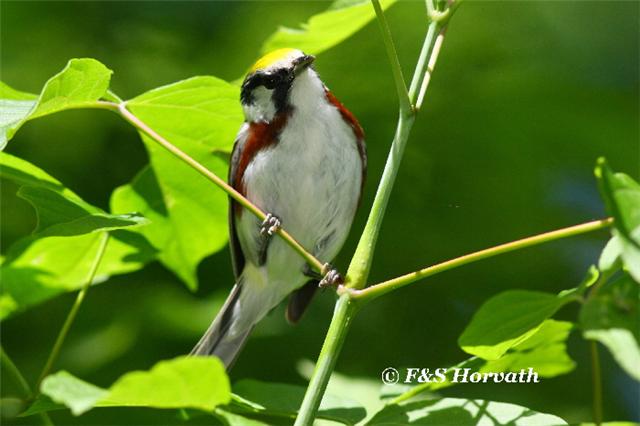
Chestnut-sided Warbler
Photo: Frank and Sandra Horvath
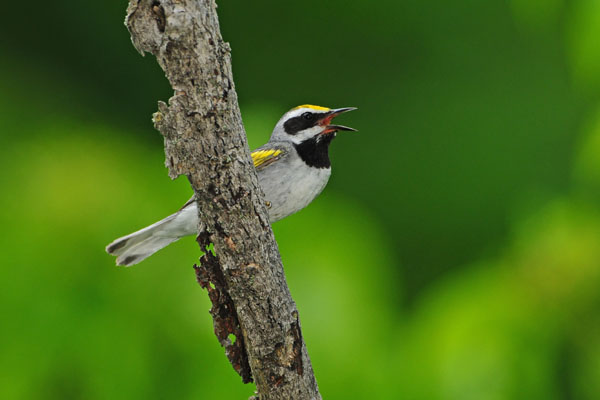
Golden-winged Warbler
Photo: Sam Barone
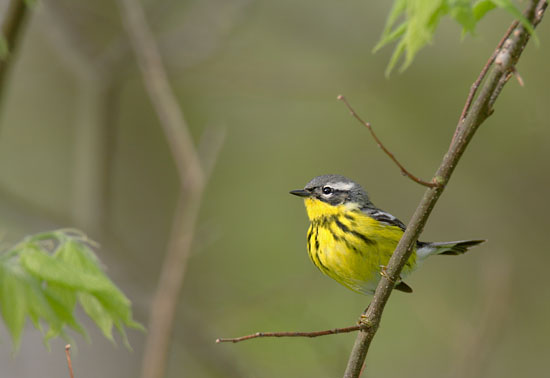
Magnolia Warbler
Female
Photo: Brandon Holden
.jpg)
Black-throated Blue Warbler
Female
Photo: Sam Barone
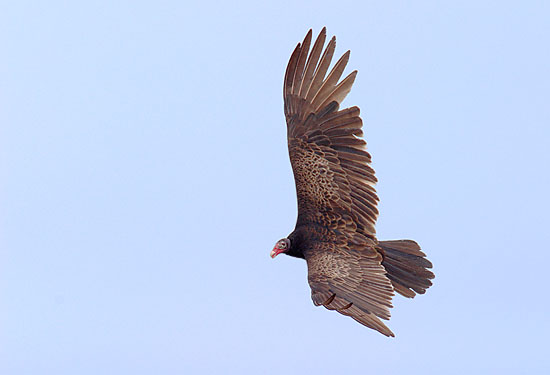
Turkey Vulture
Photo: Brandon Holden
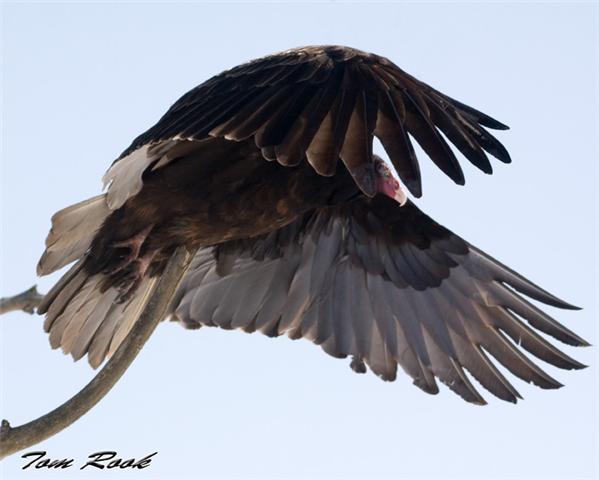
Turkey Vulture
Photo: Tom Rook
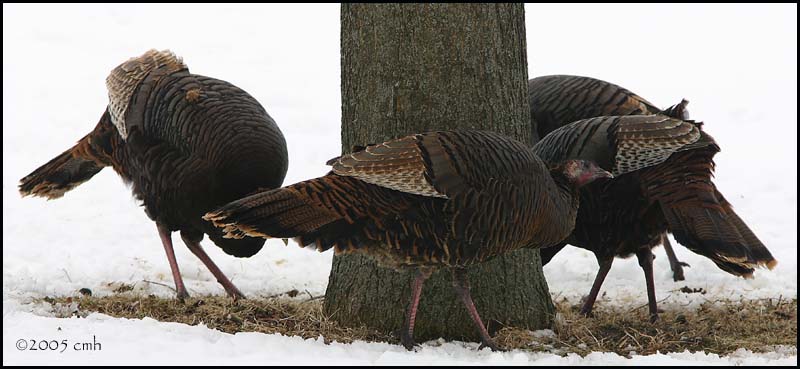
Wild Turkey
Females
Photo: Carol Horner
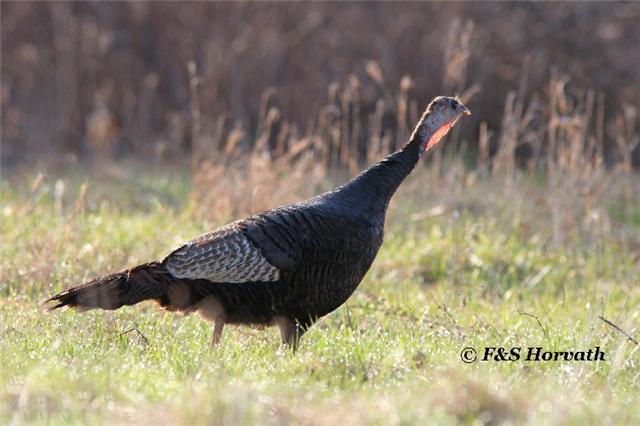
Wild Turkey
Female
Photo: Frank and Sandra Horvath
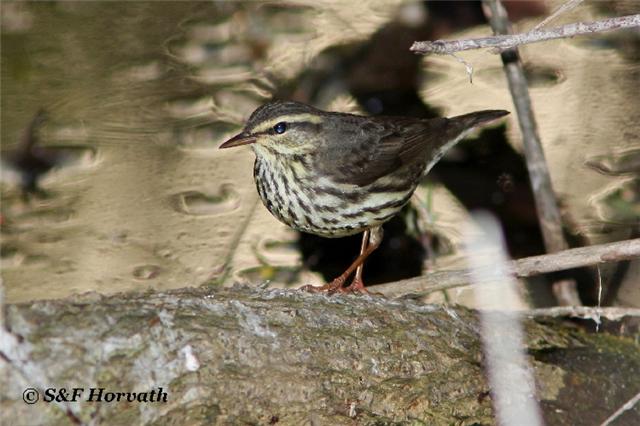
Northern Waterthrush
Photo: Sandra and Frank Horvath
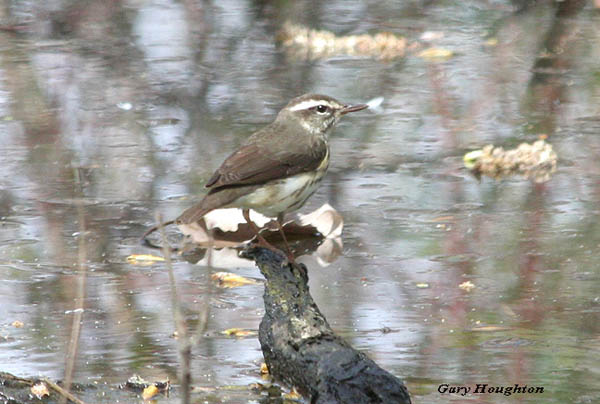
Louisiana Waterthrush
Photo: Gary Houghton
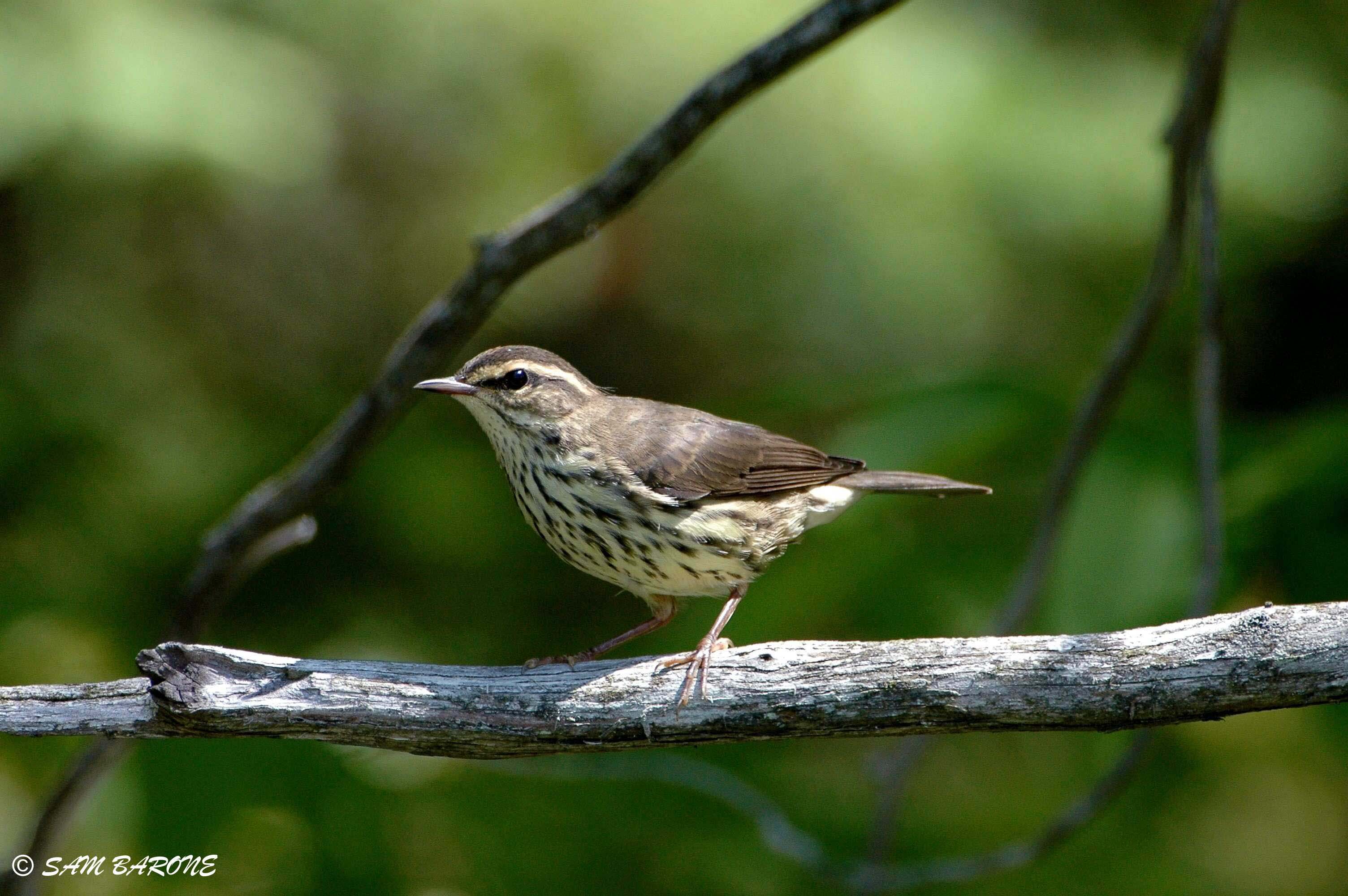
Northern Waterthrush
Photo: Sam Barone
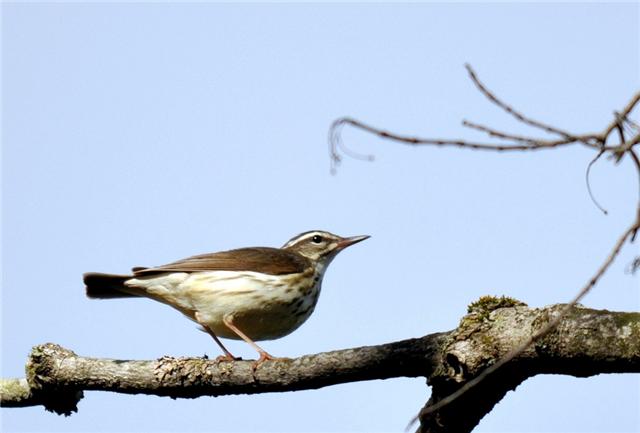
Louisiana Waterthrush
Photo: Lev Frid
Tiny MarshTop
May 24 2025 (Saturday) Tiny Marsh
Leader: Kevin Shackleton.
The weather forecast yesterday was not great and it was quite cool with high winds and occasional showers. There were 22 people registered and 8 showed up. Chris Dunn joined me and was a big help. The group were very keen birders and there were several who had done the trip with me in the past. The group met at Tim Hortons in Elmvale at 6:45 am and were headed to the Tiny Marsh Visitor Centre by 7 am. There are no washrooms at the site. We spent nearly 3 and half hours here and walked about 4 Km over the trails. Highlights were Bald Eagle, Osprey on nest, a Black Tern, a Common Nighthawk and a young Sandhill Crane. A non bird highlight was a fawn nursing from a doe within reasonable viewing distance. We had 59 species here. We made a pair of short stops on Tiny Flos Town Line for shorebirds and grassland species before moving to Tiny Concession 3 for forest birds where we had great views of a pair of Scarlet Tanagers and identified 18 species. There was a stop at Tim Hortons in Wasaga Beach at about noon before we moved to Beach One for Piping Plover. There was only one of that species and it took some time for all of the remaining group to see it, but it came very close before we headed to Collingwood. We made three short stops in Collingwood. The Cliff Swallow nesting sites on the elevators have been removed so it is not easy to see the species here. We did add the lingering Redhead at the boat launch, but did not see Chimney Swifts circling the town hall tower. A couple of stops near the Collingwood Airport did give us Upland Sandpiper, but it was not seen well by anybody but Chris Dunn. We had great looks at Bobolinks displaying. The last stop was the Stayner Eco Park and only three of the original group remained. We added Short-billed Dowitcher, Least and Semi-palmated Sandpiper as well as Green-winged Teal and Hooded Merganser to the day list. Chris Dunn was doing his birdathon and ended the day with 101 species. My eBird checklists, of the birds I saw or heard, was 94 species. A successful field trip in late migration with less than optimal weather conditions. Kevin Shackleton
May 18 2024 (Saturday) Tiny Marsh
Leader: Kevin Shackleton.
9 people showed up at the Tim's in Elmvale, not the 19 registered. We were at Tiny Marsh just after 7 a.m. We were advised by a local participant that the woodland trail to the west was inaccessible due to flooding. We did the N/S dike and a short woodland section to the east. We had about 13 Black Terns and one Sandhill Crane in flight. The 3rd Concession of Tiny gave us Canada Warbler and Scarlet Tanager, by sound only. A Bald Eagle was seen in transit to Wasaga Beach. There were two Piping Plovers at Beach 1. Collingwood Harbour had about 20 Purple Martins at the martin house. No Upland Sandpiper at the airport. Stayner lagoons were reasonably productive with the best bird of the day a Wilson's Phalarope. I believe it was a female. A few of the group left at the airport and I was down to three at McKinnon Road. We ended the trip there at about 4:45 p.m. having traveled about 150 kilometres. I believe we had about 96 species and I seem not to have recorded a Blue Jay on our travels. Kevin Shackleton
May 20 2023 (Saturday) Tiny Marsh
Leader: Kevin Shackleton.
The May 20 field trip to Tiny Marsh, Wasaga Beach, the Collingwood area, Stayner Lagoons and the Minesing Swamp was attended by twenty sturdy birders who took a chance the weather would improve, as it did, and let themselves be led to some of the local hot spots. The day's tally of 103 species came about by the collective efforts of a group with many excellent, sharp-eyed birders from as far away as Vancouver Island and Carlton Place. We found 15 warbler species and the leader was able to get some on one of the Canada Warblers on 3rd Concession Tiny by using an astro laser pointer supplied by Art Needles. The laser pointer also came in handy when Catherine Graydon spotted a Barred Owl and later when the leader and the one remaining participant slogged through Minesing Swamp to reach the assembled birders staking out the Limpkin. Piping Plovers arrived at Wasaga Beach the day before the field trip and two were seen by the group. This was a life species for many of the group. The Kirtland's Warblers were not at the Packard Tract as of yesterday afternoon. Kevin Shackleton UE
May 21 2022 (Saturday) Tiny Marsh
Leader: Kevin Shackleton.
The Dynamic Duo lead an OFO field trip and do a birdathon This year's birdathon was a major departure from any of my previous 28. Time constraints had me doing my annual fund raiser along with an Ontario Field Ornithologists' field trip. The field trip had a pre-ordained route; Tiny Marsh, Wasaga Beach, Collingwood Harbour and Collingwood Airport. It was a week earlier than I usually did it, for some unknown reason, but given that I could not take two Saturdays off during the Ontario election campaign to go birding, it was doable. Three members of the Warbler Hunters were otherwise committed, but Art Needles agreed to join me on the big day. I was dined and accommodated the night before at his home and his lovely wife, Linda, prepared more than enough food for our trek on May 21. Art drove, giving me time to tally sightings, plot our next moves and pick off the occasional sighting from the passenger seat. I woke early and heard an American Robin from my bedroom. Loading the SUV allowed me to tally another 10 species before we left the driveway at 5:30 a.m.. We had time in hand before the rendezvous with our group at the Tim Hortons in Elmvale at 6:45 a.m. so we stopped at Klondike Park in Wasaga Beach and added another 9 species to the growing day list. Many of these early additions to the days list would be heard or seen multiple times over the next 12 hours. The parking lot at Tim's was full of cars from our field trip. Thirteen people of all ages were waiting for us to lead them through the wilds of Simcoe County. I only recognized one participant from a prior Tiny Marsh field trip. I explained that I was a bit rusty this year as the election campaign had curtailed my birding. Some of the group had done big years and had seen more birds in Ontario than I had so I was going to have to be on my toes. I mentioned the sound ID feature on the free birding app, Merlin, and it seemed the technology had already been adopted by a number of the participants. One was even able to upload his photos during the trip and ask Merlin what he had just photographed. We would spend over three hours at Tiny Marsh, first on the north/south dyke and then looping through the woods on a trail west of the Visitor Centre. The highlight of the dyke hour was a sighting of three Sandhill Cranes. We also had our only Caspian Tern, Belted Kingfisher, Pied-billed Grebe and Sora on the day. The two hours in the woods gave us American Kestrel, Bald Eagle, Yellow-throated Vireo, Blackpoll and Blackburnian Warblers. It was time for the team photo and a group shot before we headed to the 3rd Concession north of the marsh. In these Covid times it would be irresponsible to ask people to carpool with strangers so my usual tactic of moving half the vehicles ahead and walking back to the rest of the cars and then driving ahead to where the other vehicles had stopped wasn't going to work. Art moved the SUV for me as I walked along listening for birds. The rest of the group had to walk back and retrieve their vehicles several times. We heard Canada Warbler at several points and many of the group had good looks at two chasing through the vegetation near the road. We saw and then heard a Red-shouldered Hawk and heard Winter Wren singing its high pitched song at least twice. The weather up to 11:30 a.m. was beautiful. We were in Wasage Beach at noon and stopped at another Tim's for the facilities and lunch. We were on our way to Beach 1 in Wasaga Beach Provincial Park arriving by 12:30. There were two nesting Piping Plovers on the beach and the group were delighted to see them. I added Common Tern and Double-crested Cormorant to the day list. We had been tipped off that there were more shorebirds down the beach, but before we could find them there was a crack of thunder and rain began to fall. I hurried the group back to their vehicles and headed for Collingwood Harbour. The time in transit saw the storm, which hit areas of Southern Ontario hard, pass over us and we were soon looking for ducks, swallows and whatever else the harbour had to offer. There is a huge Cliff Swallow colony on the old grain terminal We had a Great Egret fly in from the heronry offshore. Red-breasted Mergansers cruised inside the bay. As we drove up to the lookout, I had noticed movement in a rough looking wet patch just off the main street. We stopped there on our way back to Huronontario Street and were rewarded with views of Killdeer, Semi-palmated Plover and Least Sandpiper. A brief stop in downtown Collingwood gave us House Sparrow and Chimney Swift. The leg to the airport took us past a puddle on Nottawasaga 33/34 just east of Highway 24 and I thought I saw shorebirds in it. From where Art stopped the SUV, I thought I was mistaken, but those further back in the convoy were delighted to confirm my suspicion and we had three Dunlin and two more Least Sandpipers. A Pileated Woodpecker called from and then flew out of a nearby stand of trees right toward the group, much to their delight. The airport environs did not produce the hoped for Upland Sandpiper. The group was dwindling now as it was almost 3:30 pm. I had in mind to visit the Stayner Lagoons as an extension on the trip if there weren't too many people to violate the sanctity of that prime shorebird habitat. There were still 11 of us to cross to the interior of the four lagoon complex and we managed it without incident. We added Solitary Sandpiper, Lesser Yellowlegs, Northern Shoveler, Hooded Merganser, Savannah Sparrow, Bank and Northern rough-winged Swallows and the best bird of the day, a Wilson's Phalarope. Needless to say, those who had stayed to this point were very pleased with the results of the trip. There were still five intrepid souls willing to follow us to the margins of Minesing Swamp so, with them in tow, we headed to Vespra Valley Road in search of Golden-winged Warbler. I heard the buzzy song of the species on exiting the SUV, but was disappointed to find a Brewster's Warbler, the hybrid offering of the mating of the closely related Golden-winged and Blue-winged Warblers. We had good looks at the bird as it flew around us while we played the Golden-winged song on our smart phones. We carried on to Pine Grove for sparrows and added Field and Vesper in 20 minutes of unsuccessfully searching for Grasshopper and Clay-coloured. Another of the group dropped out before we headed for McKinnon Road. Late in the day, I wasn't sure what we would find there and early indications were not good as the usually flooded areas were quite dry. But it turned out to be a good stop as we quickly found Green Heron, heard American Bittern, saw two Virginia Rails, a Brown-headed Cowbird, a Red-bellied Woodpecker and our last new bird of the day, a Ruby-throated Hummingbird. It was now 6:50 p.m., just over 13 hours since we began our birdathon. We had travelled only 190 kilometres when usually we would journey over 300 in a typical big day. While we didn't set any species records, our total of 108 was respectable, given the limitations posed by the field trip itinerary. Art was a good sport about driving and providing some levity around the day. Some of the group thought we should take our act on the road. I thank you for your continued and generous support of my favourite cause. Please feel free to send me your cheques made out to The Great Canadian Birdathon or use the Canada Helps link to my birdathon page and donate by credit card. Yours truly, Kevin Shackleton
May 25 2019 (Saturday) Tiny Marsh
Leader: Kevin Shackleton.
Most participants were at the Tim Hortons in Elmvale by 6:45 am. A few species were noted before the group moved off to Tiny Marsh and the west trail out to the viewing mound, this despite some rain, heavy at times. Two and a half hours later the 7 participants had identified over 50 species including 12 warblers species, three species of vireo and five species of flycatcher as well as two Sandhill Cranes. We stopped briefly to look for Black Terns from the North/South dike without success. Our next stop was for coffee at Tim Hortons in Wasaga Beach before going to Beach #1 where we did see a Piping Plover sitting tight to the nest in the rain.The weather began to clear as we headed for Collingwood Harbour where we hoped to find late migrating ducks and Common Ravens. We did find a female Greater Scaup, a male Common Merganser and many Yellow-rumped Warblers along with active Purple Martin houses. A brief stop in downtown Collingwood netted some of the group Chimney Swifts. The airport turned up Bobolink, Eastern Meadowlark and Savannah Sparrow, but no Upland Sandpipers.The last stop, Stayner Sewage Lagoons, held the best bird of the day. In the far western lagoon were a Least Sandpiper, five Spotted Sandpipers and a Hudsonian Godwit. A total of 26 species were seen at this location. We drove approximately 180 kilometres, made 11 stops and identified 87 species. Those who would eBird checklists should email me directly.
May 26 2018 (Saturday) Tiny Marsh
Leader: Kevin Shackleton.
8 to 10 people joined me on a modified Tiny Marsh field trip. We had 50 species from the Visitor Centre and along Trillium and Beaver Trails before making a stop on the Tiny-Flos Townline W of the marsh for a few grassland birds before heading to 3rd Concession of Tiny. We walked 1 Km listening for warblers and other passerines and were rewarded with a good look at a Canada Warbler and a pair of Scarlet Tanagers. We discussed whether to follow the promised itinerary for Piping Plovers at Wasaga Beach, but the group were keen to hike so we headed to the Matchedash Bay area and did the Cowan and Tiffault Trails. We had a beautiful male Golden-winged Warbler at Cowan and some of the group saw a male Brewster's Warbler along the wooded side of Tiffault. Several people had life birds and a Black-billed Cuckoo and Green Heron were produced on demand by yours truly, the intrepid leader.Thanks to all who attended and chipped in birds to the day's total of 84 species including 15 warbler species.Email me privately for the eBird checklists.
May 27 2017 (Saturday) Tiny Marsh
Leader: Kevin Shackleton.
The field trip began at Tiny Marsh at 7:15 a.m. with three eager participants joining yours truly. We scoured the Beaver Trail west of the main building for 150 minutes and found 50 species including l good ooks at Alder, Willow and Great-crested Flycatchers and Eastern Kingbird and a Canada Warbler. The north/south dike gave us Common Loons, Osprey on a nest and an amazing dragonfly hatch. We covered about 2 km of Tiny Concession #3 north of the marsh hearing many species and seeing very few. Our brief stop at Wasaga Beach Provincial Park gave us several Piping Plovers. A stop at Klondike Park in Wasaga produced Field, Grasshopper, Clay-coloured, Chipping and Song Sparrows as well as an Eastern Bluebird. The Stayner Lagoons did not disappoint as we found single lingering Northern Pintail and Lesser Scaup along with many young Wood Ducks. In total we had 88 species and the participants added a number of year and life birds to their lists.
May 28 2016 (Saturday) Tiny Marsh
Leader: Kevin Shackleton.
I was joined by four easy going birders who were happy to go wherever I suggested. We spent four hours at Tiny Marsh, mostly on the Trillium and Beaver Trails, and about 40 minutes on the dike. The first request was for Black Terns, a life bird for two of the four participants and there were plenty, including one close view from the dike.We then decided to try the Matchedash Bay area for Blue-winged Warbler. We found Brewster's Warbler on Lawson Line near Kinnear SR and then Golden-winged Warbler on Kinnear SR just north of the Cowan Trail. We bumped into the Brereton Field Naturalists who told us they had not seen a Blue-winged Warbler on their circuit of the trail. We next headed for Tiffault Trail in hopes of finding a Hooded Merganser, but saw no ducks at all from the viewing tower. Having started in the cool of the morning at 7 a.m. we were not ready to plod on through 32 C heat in the afternoon. We finished up at 1:30 p.m. with 56 species for the day list.
May 23 2015 (Saturday) Tiny Marsh
Leader: Kevin Shackleton.
I had the distinct pleasure of leading 11 other birders, most of them OFO members on a day-long field trip taking in the above locations. We estimated we had 100 Black Terns at many points over Tiny Marsh, a life bird for at least one trip participant. We had 13 warbler species including Blackpoll and Wilson's. A Canada Warbler may have been a life bird for another participant and he didn't just hear it, he saw it. There were lingering Bufflehead and Common Golden-eye at the Stayner lagoons where we also had 15 Semi-palmated Plovers and 24 Dunlins and were treated to an aerial display by an adult Bald Eagle that set the ducks to flight and brought out a murder of American Crows intent on chasing him or her away. The Wasaga Beach Piping Plovers put on a lovely display as life birds for about half the group, well worth my first parking ticket in about 30 years as we lingered to sign the guest book of the guardians and pose for a photograph that will be in the local paper to help justify continuing to protect the habitat preferred by this endangered species.In total, we had 89 species.
May 24 2014 (Saturday) Tiny Marsh
Leader: Kevin Shackleton.
On a beautiful late May day 17 birders, including two small children, managed to tally 96 species by walking trails at Tiny Marsh, 2 kilometres of Tiny Concession 3, visiting Wasaga Beach for Piping Plovers, life birds for many of the group, and scoping the harbour for late migrating waterfowl and finding 3 Long-tailed Ducks before making a last stop at the Stayner lagoons where a variety of ducks and shorebirds rounded out the day. A no-charge extension to the OFO field trip took the keenest birders to Minesing Swamp at Sunnidale Concession 2 and McKinnon Road where Greater and Lesser Yellowlegs were added to the day list before the leader bailed on the very keenest young birders.
Many thanks to Corey Jenkins who kept the leader from getting lost on the bypass south of Collingwood and finding unexpected Black-bellied Plovers beyond the Piping Plovers at Wasaga Beach.
Those wishing eBird checklists for the day should contact the leader privately.
26 April 2009 Tiny Marsh
Leader: Ron Fleming.
The OFO trip to Tiny Marsh was reduced to about 2.5 hours of rain‐birding before we packed it in at lunch time. Still, we managed to find a few warblers (Pine, Yellow‐rumped, and Yellow), several sparrow species, a modest variety of ducks (Hooded Merganser, Green‐winged Teal, and American Wigeon being the most noteable), several Ruby‐crowned Kinglets, and a very early Black‐bellied Plover in basic plumage showing its black axillars and calling "peeeeee" as it flew by. (Unfortunately, with the line of almost 40 rain‐soaked participants spread out along the trail with hoods up and heads down, only three of us observed it.)
Wayne and Fran Bullock trudged onward into the open marsh while the rest of us headed for shelter. The Bullock’s managed to observe an American Bittern, Green Heron, a pair of Northern Shoveler, and a Northern Harrier, among other things.
Outside the Tiny Marsh property Kevin Shackleton and I observed an Eastern Meadowlark and two Wild Turkeys. Two other birders scouting the area in the nearby hamlet of Perkinsfield (near Balm Beach) had both Greater and Lesser Yellowlegs and Wilson’s Snipe.
Many thanks to those who came out in bad weather to give this trip “the old college try”.
20 April 2008 Tiny Marsh
Leader: Ron Fleming
Today’s trip to Tiny Marsh northwest of Barrie took place under sunny skies and unseasonably warm temperatures. These conditions brought out a hatch of midges and/or gnats that formed some pretty impressive clouds of insect life as we walked the 8 km dike trail. For some people the heat and the bugs were a little overwhelming, so what started off as a group of about 35 people was whittled down to about 15 participants by lunchtime.
Species total for the day was 61, about average for this hike. Highlights of the collective list were: Peregrine Falcon, Sandhill Crane, American Bittern, Osprey, Caspian Tern, Rusty Blackbird, Yellow‐rumped and Pine Warblers, Wild Turkey, Wood Duck, White‐crowned and White‐throated Sparrows, Brown Creeper, Northern Harrier, Pied‐billed Grebe and American Coot. We observed 13 ducks species as well.
I’d like to thank all of those who came out for this annual trip, especially the dozen or so sun‐reddened souls who were able to do the full day. I thoroughly enjoyed your company and the good camaraderie ‐ to me that’s more than half the fun of such trips.
Reported by Ron Fleming.
22 April 2007 Tiny Marsh
Leader: Ron Fleming.
Thirty‐six OFO members and friends joined me today for a very enjoyable day of birding at this impressive wetland northwest of Barrie.
Collectively, 64 species were observed and, interestingly, we missed six that I found while scouting earlier in the week. The most notable of the missed birds was a Short‐eared Owl, which I flushed from the dike trail on Friday, but we made up for that with superb looks at an adult Bald Eagle that flew over us at the gate to the dike trail.
Waterfowl, not surprisingly, were out in big numbers. There were numerous Pied‐billed Grebes, three Common Loons (two fly‐overs and one swimming), a single American Coot, and 14 duck species including Northern Pintail, Wood Duck, Gadwall, Hooded Merganser, and both teal. A steady west wind in the morning provided a good hawk flight and ‐ largely due to the sharp eyes of Don Pye ‐ we observed eight raptor species including the eagle, a pair of resident Osprey, four Rough‐legged Hawks (three light morphs and one dark),several Northern Harriers, an American Kestrel, and two Sharp‐shinned Hawks.
Tree and Barn Swallows were observed hawking insects over the marsh, and we also had Caspian Tern, Greater Yellowlegs, and the first warbler of the spring for many: Yellow‐rumped Warbler. Target species Sandhill Crane did not disappoint, doing a lot of bugling and at least one excellent fly‐over. Near the end of the day we had one standing in the marsh grasses not far from "Mole Mountain".
While we were admiring him we added Northern Shoveler, American Black Duck, and a very entertaining Virginia Rail that gave everyone a chance to see this secretive species out in the open.
Don Pye flushed an American Woodcock while most of us were eating sandwiches at lunch, Howard Davidson had two American Pipits on the Tiny‐Flos Line on his way back from fetching lunch in Elmvale, and Neil Baker had a Winter Wren in a similar solo venture, but we all congregated after lunch to enjoy excellent looks at Brown Creeper and Rusty Blackbird on the little boardwalk leading toward the Meadowlark Trail. Some of us heard Eastern Meadowlarks singing at the corner of Tiny‐Flos Townline and County Road 29 on the way in.
Mammal species observed included Muskrat and River Otter, the latter being a very pleasant surprise. Many thanks to all who participated for sharing their enthusiasm, knowledge, and keen eyes with me on this enjoyable nature walk. To Don, Neil, Jean Iron, and Gord Cameron, in particular, thanks for the invaluable help.
Reported by Ron Fleming.
23 April 2006 Tiny Marsh Provincial Wildlife Area
It rained half the way up and all the way back between Newmarket and Elmvale, but Tiny Marsh itself sat under an apparent protect‐bubble from 9:15 to 3:15 today when 28 stalwart birders joined me, Ron Fleming, for the annual OFO hike to that provincial wildlife area west of Barrie. Collectively we recorded 62 species (63 if you count Trumpeter Swan), the most notable of which were: Wilson’s Snipe, Common Loon, American Bittern, Great Blue Heron, Broad‐winged Hawk, Merlin, Osprey, Northern Harrier, Greater Yellowlegs, Sandhill Crane, Caspian Tern, Yellow‐bellied Sapsucker, American Coot, Pied‐billed Grebe, Brown Creeper, Eastern Meadowlark, Wild Turkey, Belted Kingfisher and White‐throated Sparrow. There were also several Ruby‐crowned Kinglets and Eastern Phoebes, 12 species of ducks, and at least two hundred Tree and Bank Swallows.
Surprisingly, we did not observe any warblers, but then again, we did not observe any raindrops either (at least until 3:00). All things considered, it was an excellent day of spring birding, even without the sunshine. Many thanks to those of you who came out.
Tiny Marsh is west of Barrie and east of Wasaga Beach, just north of the town of Elmvale.
Reported by Ron Fleming.
24 April 2005 Tiny Marsh Provincial Wildlife Area
Leader: Ron Fleming.
Twelve stalwart birders joined me at Tiny Marsh northwest of Barrie today for what turned out to be a very decent day of birding. The weather was indeed wet and cool at times, but not nearly as bad as what had been forecast. We had to work for our birds early in the day, but at the end of our day's hiking we had seen 55 species at the marsh. A smaller group of us added another 9 species northwest of Newmarket late in the afternoon to bring that total up to 64 for the day.
Interesting birds seen at Tiny Marsh included eleven duck species, numerous Pied-billed Grebes, at least four male and three female Northern Harriers, two Sandhill Cranes that flew right over us as we walked along the dike trail, a trio of Bonaparte's Gulls doing their tern-like calls, two vocalizing American Bitterns (one of which gave us a nice fly-by), four Caspian Terns two Osprey, about 20 Yellow-rumped Warblers, two Pine Warblers a Red-bellied Woodpecker two Sharp-shinned Hawks, one Wild Turkey, a Marsh Wren, several Ruby-crowned Kinglets, and a group of approximately 1,000 swallows mainly comprised of Tree Swallows, but which included several Barn and - to our pleasant surprise - two Cliff Swallows.
While eleven of us were out hiking the dike trail during an almost balmy lull in the misty weather, our "twelfth man" back at the parking lot observed one of the aforementioned Sharp-shinned Hawks taking a Yellow Warbler from a branch near the main building. Late in the day, after leaving Tiny Marsh, five of us drove south to the flooded fields between Bradford and Newmarket. As soon as we arrived at the north end of Bathurst Street we were treated to excellent views of the Long-billed Dowitcher discovered there yesterday. There were also several Greater Yellowlegs, at least two Lesser Yellowlegs, and several Caspian Terns at this location. These flooded sod fields look very promising for shorebirds over the next few weeks. At nearby Hochreiter Road, we observed two Common Snipe, several Northern Shovelers, about 25 American Wigeon, and a minimum of 200 Northern Pintail and 200 Green-winged Teal.
Ron Fleming, Newmarket
Tiny Marsh is about a 20 minute drive northwest of Barrie and about 10 minutes east of Wasaga Beach.
The section of Bathurst Street described above is actually on the western edge of Holland Landing and the eastern edge of Bradford. It is accessible by turning north from Yonge Street on the stretch of road that runs north out of Newmarket toward Bradford. There is a stoplight that indicates Bathurst Street north.
17 April 2004 Tiny Marsh Provincial Wildlife Area
After running the gauntlet of a nasty morning's seemingly endless cloud cover, several sobering flashes of scope-discouraging lightning, and several bothersome bouts of binocular-clouding rains, 40 hardy participants on today's OFO trip to Tiny Marsh were eventually rewarded with balmy temperatures, clear blue skies and a very nice assortment of spring arrivals. As the day steadily improved, so did the birding - by the time the last eight stalwart birders packed things in at 5:00 p.m., the group's collective list had reached 64 species.
Highlights included several good looks (and listens) at Sandhill Cranes, two American Bitterns, a lone Great Egret, our first two warbler species of the spring (Yellow-rumped and Pine), 14 duck species, two Osprey, six Wild Turkeys, numerous Tree Swallows and a single Barn Swallow, a very early Great Crested Flycatcher, several Rusty Blackbirds, and - perhaps most surprising of all - a Short-eared Owl flying along the dike trail. Other spring arrivals of interest were several Eastern Phoebes, Eastern Meadowlarks, Pied-billed Grebes, Northern Harriers, Belted Kingfishers and a Fox Sparrow.
Many thanks to those of you who joined me hiking and birding around this beautiful wetland. You are great sports for having stuck with it during those gray and gloomy hours before the weather turned. Tiny Marsh is northwest of Barrie.
Reported by Ron Fleming
27 April 2003 Tiny Marsh Provincial Wildlife Area
Leader: Ron Fleming:
OFO's trip to Tiny Marsh attracted about 30 participants who collectively observed about 60 birds species. It was a beautiful day with perfect lighting for bird observation. Highlights included: Sandhill Crane (5); Snow Goose - one dark adult "blue goose" morph (1), it was migrating with a wild flock of Canada Geese numbering in the thousands which landed in the marsh; Osprey (3 in an interesting social interaction near the nest); Caspian Tern (3); Northern Harrier (3 males); 12 duck species including Wood Duck, American Wigeon, Redhead and Hooded Merganser; Yellow-rumped Warbler (30+); Pine Warbler (6); and American Bittern (5), one of which posed beautifully for all of us to observe for several minutes. We also had a Tree Sparrow and an early (relative to Tiny Marsh's location) Barn Swallow. Many thanks to those who participated - a marvellous group to hike with!
Directions: Tiny Marsh is northwest of Barrie, accessible by exiting Hwy. 400 at Bayfield Ave. in Barrie, then following it steadily northwest, through Elmvale. Approx. two kms north of Elmvale you cross the Wye River. Take a left at Regional Rd. 6 just after this and follow it about 2 more kms to the Tiny-Flos Townline, which is also known as Concession 1. There is a large sign indicating Tiny Marsh. Turn left (west) and drive about 3kms to the main parking lot. Park and hike from here. The 8 km dike trail is east of the nature centre; the shorter woodland trails (including a boardwalk section) are west.
Reported by Ron Fleming
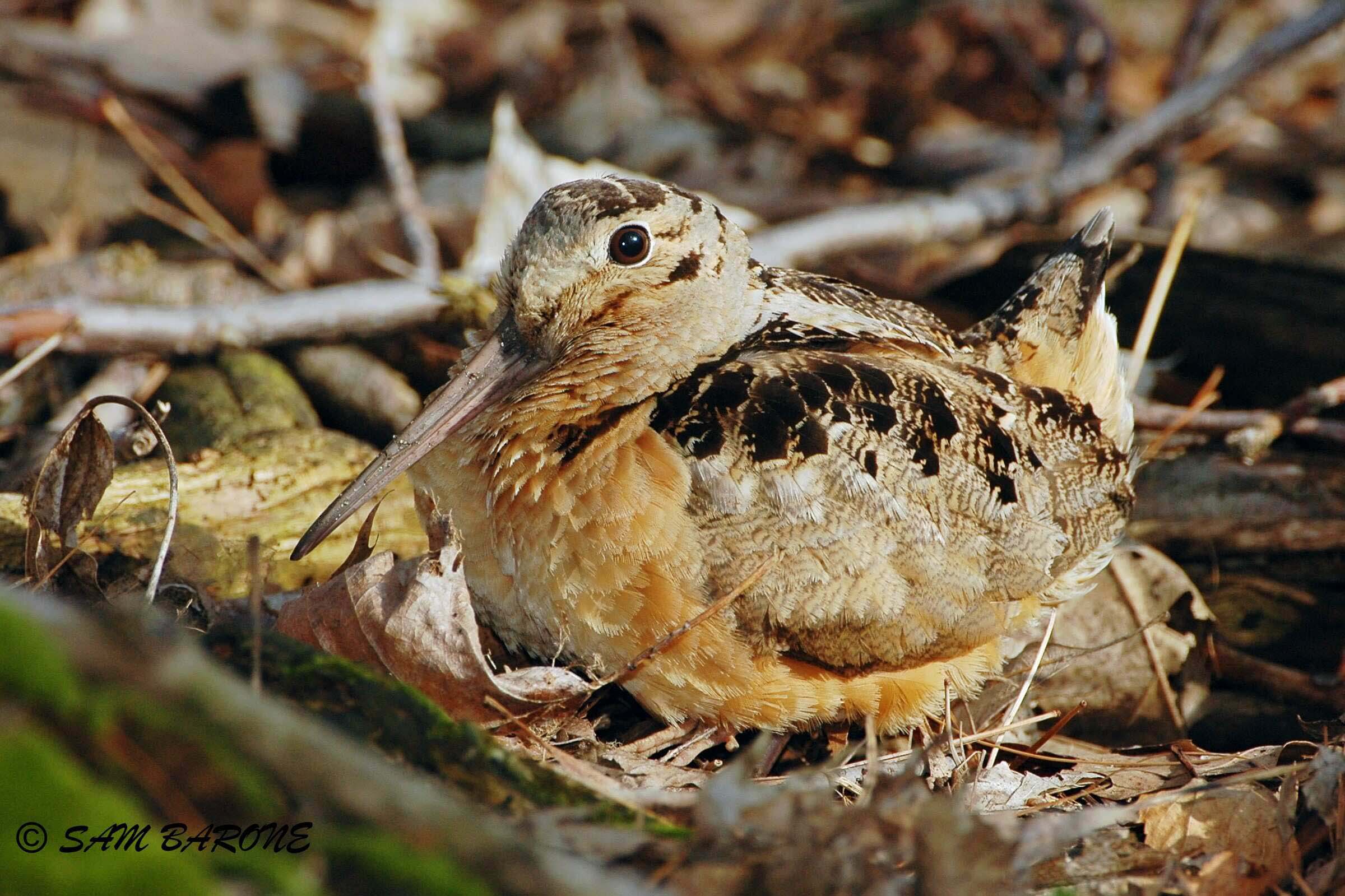
American Woodcock
Photo: Sam Barone
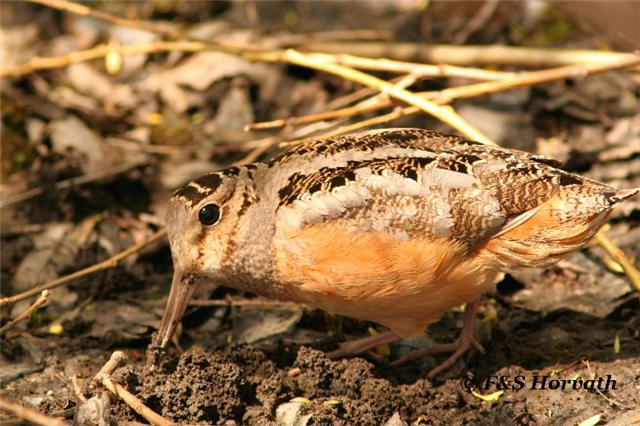
American Woodcock
Photo: Frank and Sandra Horvath
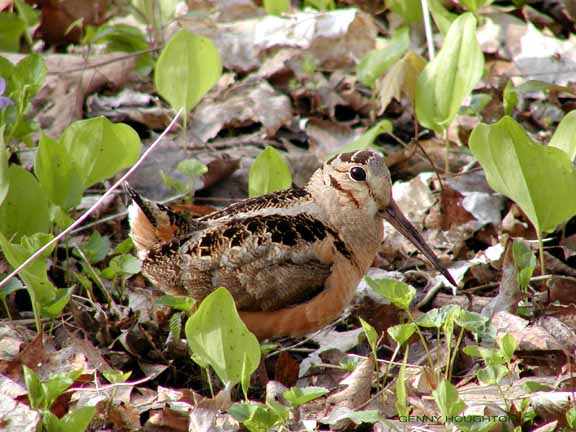
American Woodcock
Photo: Genny Houghton
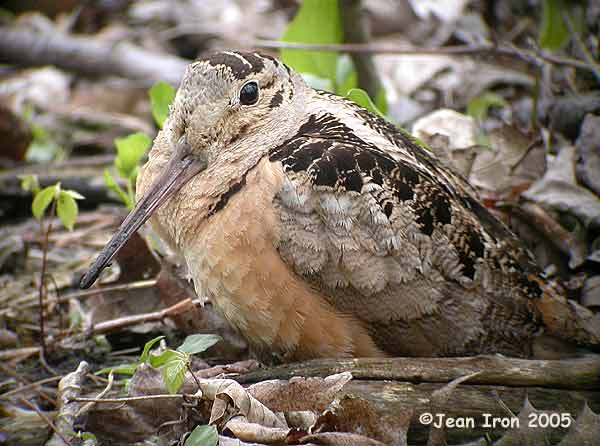
American Woodcock
Photo: Jean Iron
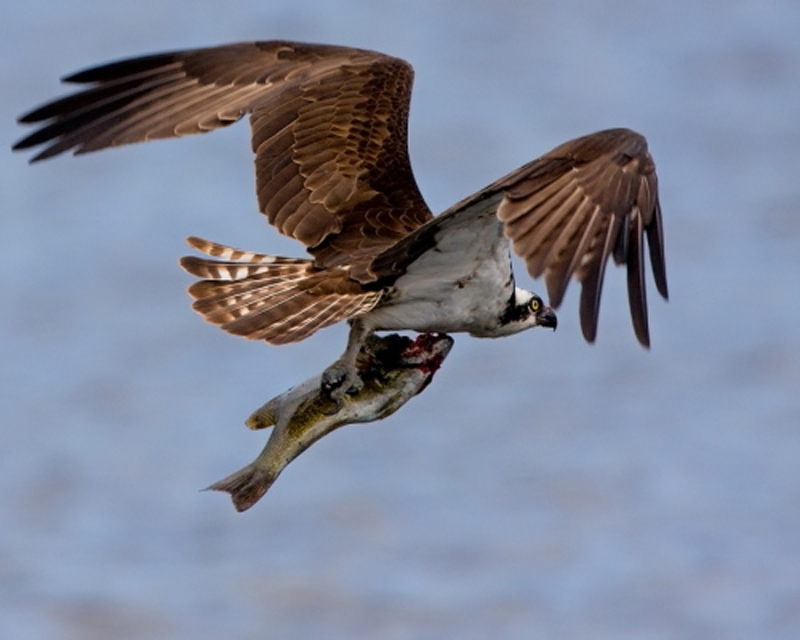
Osprey
Photo: Don Wigle
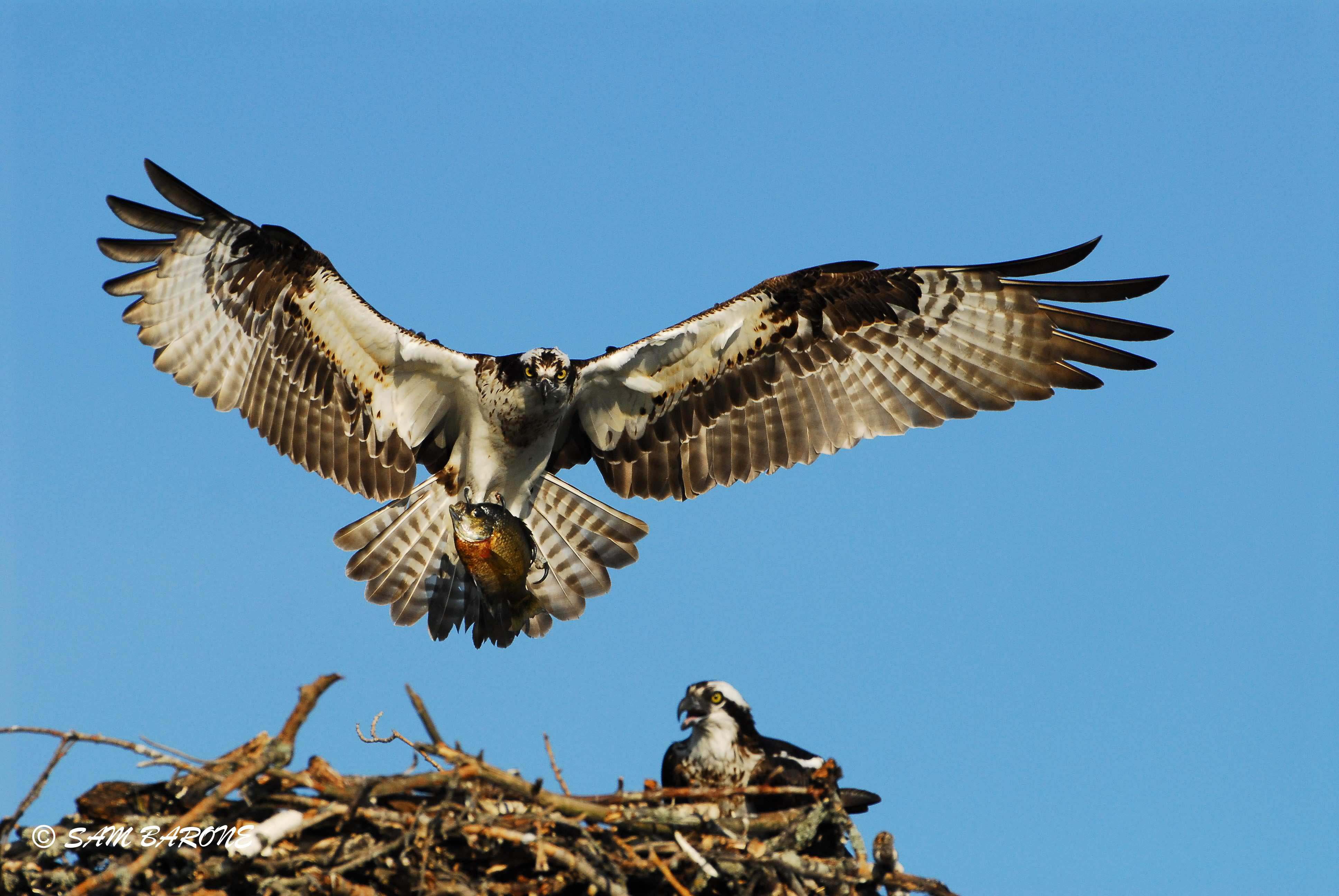
Osprey
Photo: Sam Barone
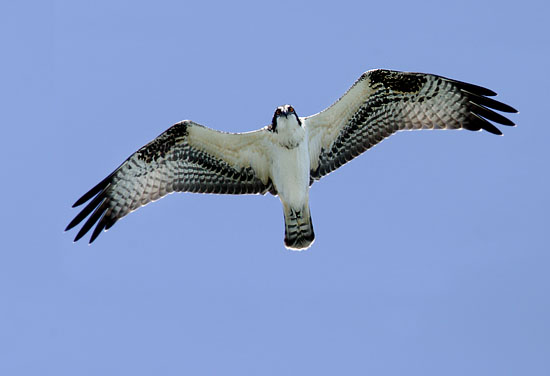
Osprey
Photo: Brandon Holden
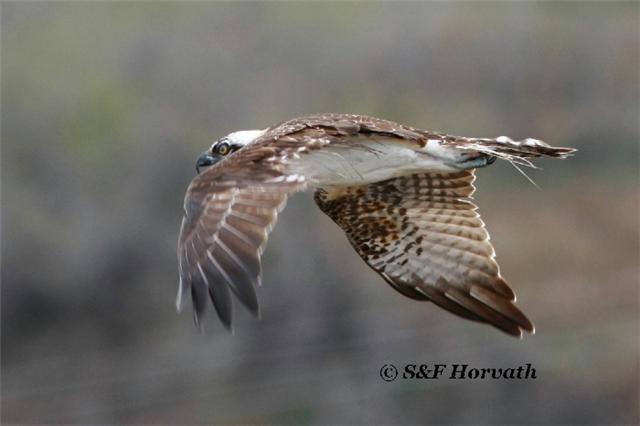
Osprey
Photo: Sandra and Frank Horvath
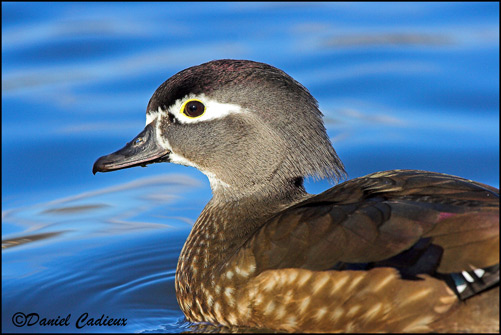
Wood Duck
Female
Photo: Daniel Cadieux
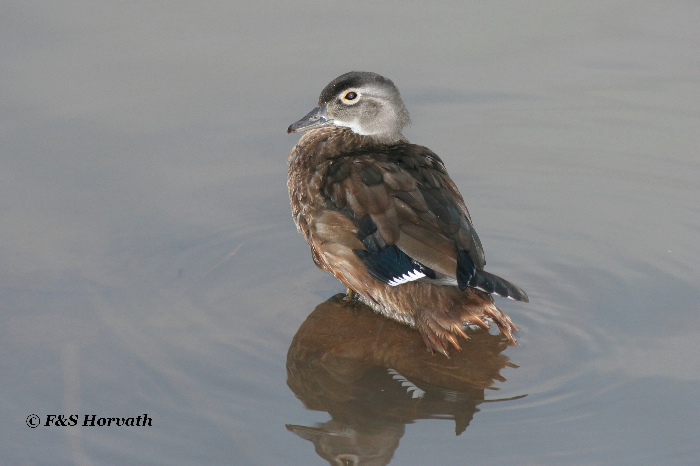
Wood Duck
Photo: Frank and Sandra Horvath
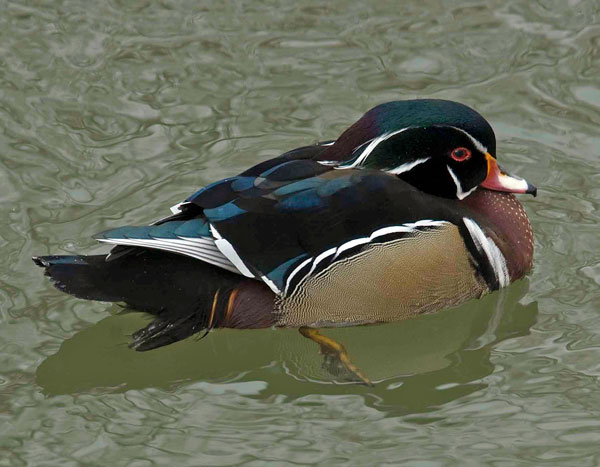
Wood Duck
Photo: John Millman
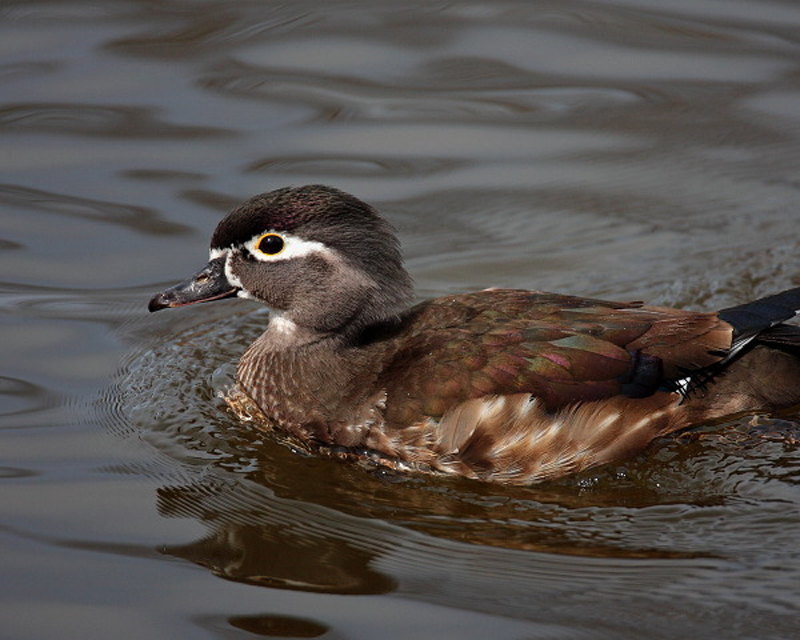
Wood Duck
Female
Photo: Don Wigle
